
Panathenaic Stadium
Accessibility, related experiences.

National Geographic content straight to your inbox—sign up for our popular newsletters here

More than 50,000 people filled the marble stands of the Panathenaic Stadium for the first modern Olympics in 1896.
This All-Marble Stadium Hosted the First Modern Olympics
Visit the Panathenaic Stadium that sets ancient tradition in stone.
Fire has been a symbol of the Olympic games since ancient times. Every four years, before the athletes gather for the games, the emblematic torch makes a long journey to the new host city from the Panathenaic Stadium in Athens —the site of the first modern Olympic games where the tradition began more than a hundred years ago.
Winning the bid to host the Olympics brings honor with considerable cost. Many host cities prepare for the influx of athletes and Olympic-sized crowds by completely overhauling infrastructure and hastily constructing mega-projects, like new sports arenas, that later get demolished or forgotten . Then there’s Athens, every day still using the Panathenaic Stadium, built outside the former city walls on soil that stretches back 2,500 years. This white horseshoe stadium stands triumphantly under the shadow of the Acropolis and remains the world’s only arena made completely from marble.
Some 50,000 people filled the stands of the Panathenaic Stadium for the first Olympics in 1896. Athletes competed for silver medals by cycling, fencing, performing gymnastics, shooting, swimming, weight-lifting, and wrestling. But its history goes back much further.
RELATED: Inside the Abandoned Stadiums of Past Olympics

Socrates and his students escaped the midday sun here under a tree to discuss love and hate near the Ilissos River gently rolling by. Nude male athletes ran track on this site during Athens’ early answer to the Olympics, the Panathenaia celebrations, attracting contestants from all over the Greek empire to a new marble stadium built around 330 B.C. by Athenian orator Lykourgos.
Not unlike a city putting its game face on in preparation for today’s Olympics, such monumental projects instilled pride in the population. The Panathenaic Stadium “deliberately reminded the Athenians—and the rest of the Greek world—of Athenian greatness, when the city dominated the entire Aegean basin,” explained historian Robin Waterfield , who wrote the book chronicling Athens throughout the ages. But shortly after the stadium opened, Alexander the Great died, propelling Greece to unsuccessfully fight Macedonia for independence, then lose the Lamian War. “So you can link the building of the stadium to the end of the great Athenian experiment in democracy,” Waterfield says.
Centuries later, under Rome , Herodes Atticus transformed the stadium into its present horseshoe-shape with soaring stone bleachers. While athletic competitions remained the main purpose, the track also witnessed animal slaughters and gladiators (many of which were criminals) fighting until bloody death. Christianity followed and prevented such pagan rituals, so the Panathenaic Stadium turned into a derelict place used to source marble for nearby buildings.
- Nat Geo Expeditions
At enormous expense shouldered by a generous benefactor, the stadium returned to its former glory when chosen to host the first modern Olympic games in 1896. The Roman-era design remains, this time using Pentelic marble from slopes just outside the city to match the Classical monuments of ancient Athens.
Today, runners similarly cross the finish line inside the Panathenaic Stadium during the annual Athens city marathon . Early morning joggers push themselves around the track which hosted the 2004 Olympics in Athens. Tourists listen to audio guides before posing like gladiators against the backdrop of soaring white marble. Before every Olympic games, the world turns toward the Panathenaic Stadium for the flame handover ceremony, setting ancient tradition in stone.
Become a subscriber and support our award-winning editorial features, videos, photography, and much more.
For as little as $2/mo.
Related Topics
You may also like.

The essential guide to visiting Dublin

How to explore the secret subterranean side of Belgrade

Samurai towns, Japanese oyster farmers and coastal art on the back roads of Honshu

A guide to Marseille: beaches, bouillabaisse and street art on the French Med

Going on a road trip? These games will help you pass the time
- Environment
- Paid Content
History & Culture
- History & Culture
- Terms of Use
- Privacy Policy
- Your US State Privacy Rights
- Children's Online Privacy Policy
- Interest-Based Ads
- About Nielsen Measurement
- Do Not Sell or Share My Personal Information
- Nat Geo Home
- Attend a Live Event
- Book a Trip
- Inspire Your Kids
- Shop Nat Geo
- Visit the D.C. Museum
- Learn About Our Impact
- Support Our Mission
- Advertise With Us
- Customer Service
- Renew Subscription
- Manage Your Subscription
- Work at Nat Geo
- Sign Up for Our Newsletters
- Contribute to Protect the Planet
Copyright © 1996-2015 National Geographic Society Copyright © 2015-2024 National Geographic Partners, LLC. All rights reserved

- Attractions
- For Children
- Piraeus Cruise Port
- Public Transport
- Athens Airport
- Ferries & Ferry Ports
- Greek Culture
- Restaurants
- Greek Cuisine
- Central Located
- Port Hotels
- Conference Hotels
- Plaka District
- Hotels with a Pool
- Group Travel
- Tickets & Tours
Guide to Panathinaiko Stadium: Things to Do, History, Tickets

The Panathinaiko Stadium or Kallimarmaro is the Olympic stadium of the first modern Olympic Games, reconstructed on the foundations of an ancient stadium.
As one of the most important structures in all of Greece, it is one of the top sights in Athens .
In this complete guide to the Panathinaiko Stadium in Athens, you'll learn all you need to know before your visit , including its history , and helpful information about how about get there , tickets, and tours .

What Can I Do at Panathinaiko Stadium?
The Panathinaiko Stadium is the Olympic Stadium that hosted the first modern Olympic Games in 1896. It was built on the ruins of an ancient stadium.
Today, you can walk in the footsteps of ancient and modern athletes. Surrounded by an impressive backdrop , the white marble stadium exudes a unique ambience.
1. Inside the Stadium
You can take in the impressive architecture of the Olympic Stadium as you stroll through the expansive interior. An audio guide leads through the stadium with background information about the history and importance of the place.
A winner's podium o f the first modern Olympic Games is located in the middle of the stadium and offers unique photo opportunities. As is the view of Athens from climbing the steps of the stadium all the way to the top. From here you can enjoy a 360 degree view of the Acropolis , the Parthenon , the Olympieion , the Zappeion and the National Gardens .
Sporty visitors can take the opportunity to walk the track of the Olympic Stadium themselves, where not only Olympians but also naked athletes of ancient Athens competed.
A gate under the grandstand leads to a small museum that provides information about the history of the modern Olympic Games. Exhibits such as the posters and torches from the Summer and Winter Olympics can be seen here. Touch screens provide additional information about the historic site.
There is a cafe in Panathinaiko Stadium where you can rest and have a bite to eat or drink.
3. Panathinaiko Shop
There is also a small shop on the premises of Panathinaiko Stadium where you can buy a small souvenir of your visit. The items are largely inspired by the Olympic Stadium.
4. Private Events
It is possible to book the conference room in the atrium of the Panathinaiko Stadium for your own events such as conferences, seminars and other business events. More information is available here .
Note: Since the marble of the Olympic Stadium can heat up considerably in the summer, a visit in the morning or in the evening is recommended during the summer months.

Admission, Tickets and Guided Tours
- Admission: Children under the age of 6 and visitors with a disability and their companion enjoy free admission. The current admission prices can be found here .
- Tickets: Online tickets for the Panathinaiko Stadium are available here . In addition to admission, the tickets also include a free audio guide in 11 languages.
- Audio Tours : An audio guide is included in the entrance fee and takes you through the facility. It is available in 11 languages (Greek, English, French, German, Spanish, Italian, Russian, Chinese, Japanese and Portuguese and Korean) and takes about 20 minutes.
How Do I Get to Panathinaiko Stadium?
Panathinaiko Stadium is located on the outskirts of Athens city center, close to many attractions.
The easiest way to get to the stadium is with the Hop on Hop off bus tour , which has its own stop at Panathinaiko Stadium (A8 “Panathenaic Stadium”).
As the stadium is about 950 meters from the "Syntagma", "Acropolis" and "Evangelismos" metro stations, it is easily accessible by public transport . The stations are served by metro lines 2 and 3 respectively approx. 12-minute walk to the stadium.
Alternatively, buses and trains also run to the immediate vicinity of Panathinaiko Stadium. The nearest stop is Mets.
Cruise passengers arriving from Piraeus Port can go to the nearby Piraeus Metro Station and board the M1 line. A single ticket is sufficient for the 16-minute journey to Monastiraki Station. There, change to the M2 metro line, go one more stop to the "Syntagma" station and then walk 12 minutes to Panathinaiko Stadium.

FAQ (Frequently Asked Questions)
What are the opening hours of Panathinaiko Stadium?
The current opening hours can be found on the official website .
Where is Panathinaiko Stadium?
Panathinaiko Stadium is located on the outskirts of downtown Athens, not far from the Acropolis and Syntagma Square. The full address is: Vasileos Konstantinou Avenue (opposite the statue of Myron Discobolus), Athens 116 35
How do I get to Panathinaiko Stadium?
One can easily reach Panathinaiko Stadium from anywhere in the city. The easiest way to get to the stadium is with the hop on hop off bus tour, which has a stop directly at Panathinaiko Stadium (A8 “Panathenaic Stadium”).
Since the stadium is about 950 meters from the "Syntagma", "Acropolis" and "Evangelismos" metro stations, it can be easily reached by public transport by taking metro line 2 or 3 and getting off at one of the three stops and then walk about 12 minutes.
Alternatively, buses and trains also run close to Panathinaiko Stadium. The nearest stop is Mets.
Cruise passengers arriving from Piraeus Port can go to the nearby Piraeus Metro Station and board the M1 line. A single ticket is sufficient for the 16-minute journey to Monastiraki Station. From there, change to the M2 metro line, travel one stop to Syntagma station and then walk 12 minutes to Panathinaiko Stadium.
Where to buy Panathinaiko Stadium tickets?
Tickets for the Panathinaiko Stadium are available on site and online in our shop .

History of Panathinaiko Stadium
Panathinaiko Stadium was originally built in the 4th century BC . Back then, it served as the venue for numerous celebrations and competitions, many of which were held completely nude. Most famous are the Panathenaic Games, held in ancient Athens every four years in honor of the goddess Athena, and featured competitions such as chariot racing, wrestling and athletics.
Under Herodes Atticus the stadium was further expanded in 144 AD. The structure was shaped like a horseshoe and could seat an estimated 50,000 spectators. Over the centuries, the stadium fell into disrepair after such festivities were banned by the Roman Emperor Theodosius at the end of the 4th century AD.
During excavations by the renowned architect, First Ziller in 1869/70, the stadium was uncovered. After extensive renovation work, the stadium was reconstructed and lavishly decorated with white marble.
It was eventually revived as the site of the first modern Olympic Games in 1896. The Olympic Stadium has a capacity of 50,000 seats.
Panathinaiko Stadium is now operated by the Greek Olympic Committee. The stadium has become a popular tourist attraction, but is now only used for special events. For example, it serves as the finish line for the annual marathon in Athens.
- Address: Vasileos Konstantinou Avenue (opposite the statue of Myron Discobolus), Athens 116 35
- Opening Hours : The current opening times can be found on the official website .
- Public Transport: Metro 2, 3 to "Syntagma", "Acropolis" or "Evangelismos"
- Website: panathenaicstadium.gr

By loading the map, you agree to Google's privacy policy. Learn more
Always unblock Google Maps
Related Articles
June 12, 2024
Top 10 Things To Do in Athens [with Tickets & Insider Tips]
August 9, 2023
National Garden in Athens: Admission, Things to Do, Directions
August 14, 2023
Guide to the Acropolis: Things to Do, Tickets, Insider Tips
10 breathtaking viewpoints in athens: from hills to rooftops [with map].
Panathenaic Stadium
The first modern olympic stadium in the world.
A unique archaeological monument, a living symbol of the ancient and modern heritage of sport and the Olympic Games.
The legacy of ancient sport, the revival of the modern Olympic Games in 1896, of modern Greek sport and culture, is reflected in the white Attic marble of the Panathenaic Stadium.
A monument of global significance heritage and part of the sporting and Olympic history of Greece and the Hellenic Olympic Committee, the Panathenaic Stadium offers visitors a unique opportunity to revive their historical memory.
The Panathenaic Stadium In Athens: History & Visit Guide
Key Takeaways
- The Panathenai Stadium is the oldest stadium in operation in the world and a UNESCO World Heritage Site.
- The stadium was inaugurated during the Panathenaic holidays in 329 BC .
- It was the starting point of the first Modern Olympic Games in 1896 .
- The general entrance admission fee costs 5 euros.
One of Athens's most significant archaeological sites lies right at the city's heart, waiting to be explored. Here you will find all details about the long history, archaeology, and how to visit this UNESCO World Heritage Site !
History Of The Panathenaic Stadium
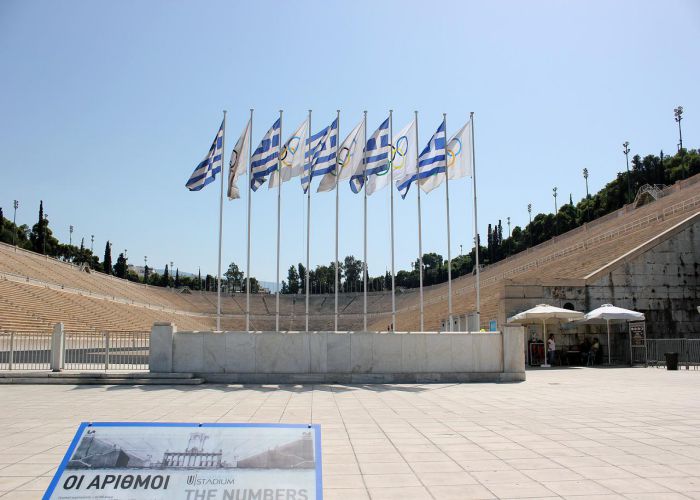
The Panathenaic Stadium is one of the most emblematic monuments of Athens and landmarks in Greece , the oldest in operation stadium in the world, and a UNESCO World Heritage Site .
It is located on the site of the ancient stadium, which was built in 338 BC, according to the initiative of the orator Lycurgus who had undertaken the regulation of the finances of Athens as well as the execution of certain public works.
The area chosen is a natural pit between the hills of Agra and Arditto, and belonged to Daneias, who granted it to the municipality of Athens for the construction of a stadium that would host the naked games of the Great Panathenea .
The name ‘stadium’ is due to the homonymous unit of length used in antiquity, which was equivalent to about 600 feet or 184.96 meters. The stadium was originally straight, and the spectators were sitting on the ground, on the slopes of the two hills.
Like any stadium of classical times, it had no propylon, and its entrance was on one side narrow. In front of the hill of Ardittos and the stadium, the sacred river Ilissos flowed.
The stadium was inaugurated during the Panathenaic holidays in 329 BC. It owes its name to Stadiou Street, which according to the original urban plan of the redevelopment of Athens, would be one of the two main axes of Athens -the other was Piraeus Street- and would connect Omonia Square, where the palaces would be built, with the stadium. This plan, although approved by Otto in 1833, never materialized.
Stadium of Lykourgos
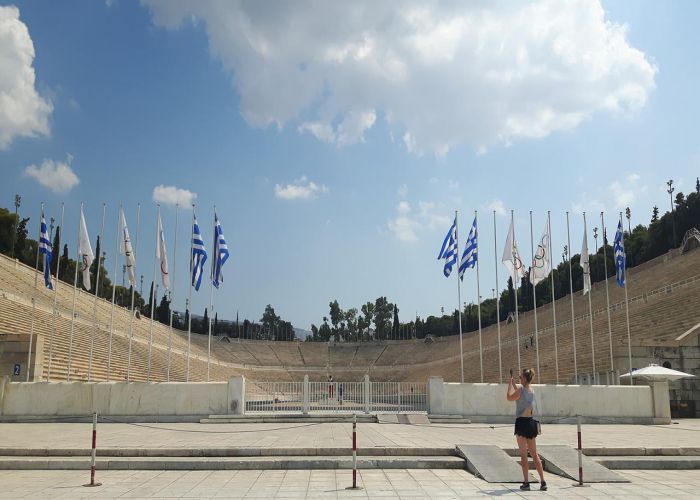
The Panathenaic Stadium is located on an ancient Greek stadium site and for many centuries hosted the organization of nude games, track and field games as we would say today.
The naked games, which were organized a long time ago in a place far from the city, were included in the program of the Panathenaic festivals in 566/565 BC.
When the orator Lycurgus took over in 338 BC., the regulation of the finances of the city of Athens included the execution of public works and the construction of a stadium.
The place was private, but the owner donated it to construct a stadium. It was made into a playing field with the characteristics of the Greek Stadium: a rectangular shape with an entrance on one narrow side and a place for spectators on the earthen slopes of the other three sides.
Reconstruction by Herodes Atticus
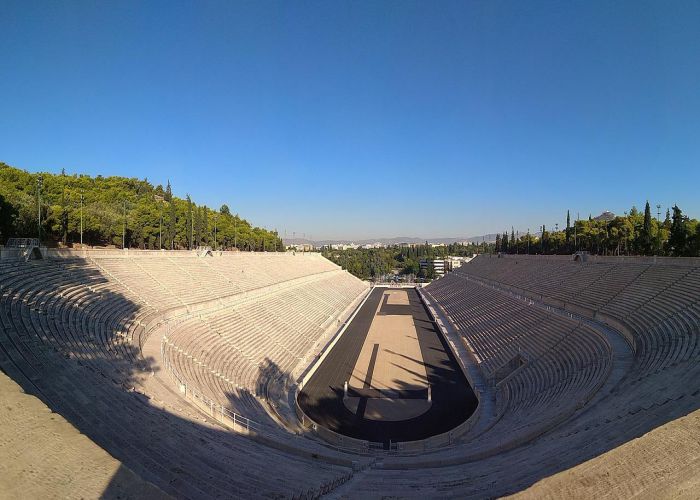
During the Roman period , and specifically the reign of Hadrian , the Stadium underwent major renovation works thanks to the generosity of the orator Herodes, son of Atticus, which lasted from 139 AD. until 144 AD and gave it the form revealed by the 1870 excavation by Ernest Ziller.
It became horseshoe-shaped, with the addition of the slingshot −the characteristic shape of the ancient Greek Stadiums during the Hellenistic times− and the space for the spectators, the theater, was divided into two moldings, and each was covered by 23 rows of seats, chairs, made of white Pentelic marble.
In the center of the sling was a row of luxurious "thrones" seats for the officials and the jury and in front of it were double-faced Hermetic columns. On the east side of the spheroidal semicircle, an underground passage led to the back of the Stadium and served for the entry and exit of the contestants and the judges, as well as the wild beasts, when it came to beast fights.
Herodes Atticus covered the entire cavity with Pentelic marble seats. The renovation was combined with Herodes' task for the Panathenaic Games of 143 AD. In fact, the Panathenaic ship of the celebration procession was placed on a long foundation on the top of the hill north of the stadium in preparation for the Panathenaic Games.
In the sling, there was a portico with Doric columns and a portico on the facade. Herodes probably renovated the bridge of Ilissos at the stadium's entrance, making it the largest, with three arches. It was visible until 1778, while part of it was discovered in an excavation in 1958.
For Herodes’ contribution to the feast, but also for his contribution to the city in general, he was awarded the honor of being buried in the stadium.
However, because this ancient information is vague, it is impossible to locate his tomb, but it was probably located either on the track or on the hill above the slingshot of the stadium, where the remains of carnivores have been found.
Abandonment
With the predominance of the Christian religion and the banning of pagan cultural events and barbaric spectacles of Roman times, such as bloody duels and beast fights, the Panathenaic Stadium lost its luster, and time took its toll. Much of its materials were removed to be used in Athenian buildings or elsewhere.
Modern reconstructions
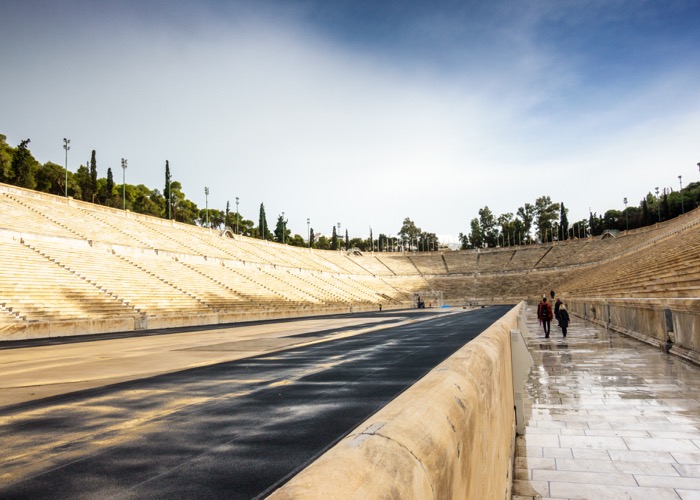
Excavations and Zappas Olympics
The revival of the Olympic Game s, by the standards of the games of antiquity, was a desire that never left the Greeks.
The first serious attempt was made by the benefactor E. Zappas when in 1856, he offered to the Greek public a not insignificant amount for the organization of sports games in Athens, which were decided to take place every four years, in parallel with exhibitions of agricultural, livestock and industrial products. the "Olympia."
These games, known as the Zappas Olympics , resulted in the spread of gymnastics in Greece and the creation of gymnastics clubs. Four (1859, 1870, 1885, and 1889) were held, the second and third of which took place at the Panathinaikos Stadium , with a large participation of athletes who took part in jumping, discus, javelin, wrestling, and climbing.
1896- The first Modern Olympic Games
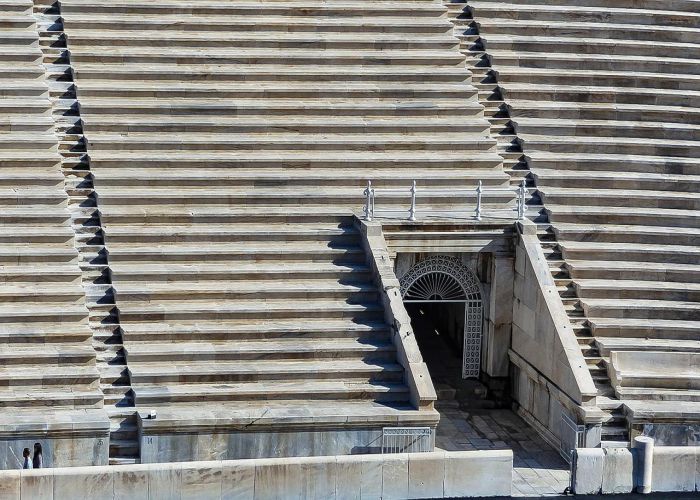
The idea of re-establishing the Olympic Games had begun to find fertile ground in Greece and Europe due to its shift towards Greek education .
With this aim and at the initiative of Baron Pierre de Coubertin, known for his ancient Greek education and belief in the ideal of sport, the International Sports Congress was organized in June 1894 in Paris.
The Panhellenic Gymnastics Association was also invited there, represented by Dimitris Vikelas, a person of special appreciation in the literary circles of Paris, who was elected President of the Conference.
The position of Pierre de Coubertin D. Vikelas managed to be accepted by the Conference his proposal for holding the first Olympic Games in Athens, a fact that caused great excitement in Greece.
Immediately, the Olympic Committee was set up, chaired by the successor Constantine and secretary general Timoleon Philemon, who undertook most of the preparation for the Games.
The reconstruction and remodeling of the Stadium were considered imperative since many of its marbles had been removed and used as a building material during the years of Ottoman rule but also before. The reconstruction was paid for by the President of the then International Olympic Committee, George Averoff, a merchant from Egypt.
The reconstruction, for which 500 people worked, was entrusted to the architect Anastasios Metaxas, who faithfully followed the design of the ancient monument of Herodes to recreate the new stadium.
In March 1895, the Olympic Committee unanimously decided to place a statue of the great benefactor, to the right of the entrance of the Stadium, as a tribute to the great sponsorship. The statue is the work of the sculptor Georgios Vroutos and the expenses were covered by the Commission.
Until the start of the first modern Olympics, only the first 4 rows were covered with white marble, and the rest of the stands were wooden, painted white, so there was uniformity, in terms of color, with the rest.
The Olympics of 1896, which began on March 25, lasted until April 3 and were a great success, with foreign correspondents writing dithyrambs both for their organization and for Greece and its inhabitants.
Then the Olympic Anthem was heard for the first time, with lyrics by Kostis Palamas and music by Spyros Samaras. There were 43 athletic competitions in which only men participated. The first Olympian was crowned on April 6, 1896, the American James Brendan Connolly, winner in the triple jump with 13.71 m.
The Greek athletes , except for Spyros Louis , won 10 victories. Spyros Louis, who had never been an athlete, was adored by the spectators when he won first place in the Olympic Marathon, covering the distance of 42.195 km in almost 3 hours, and since then has become a legend.
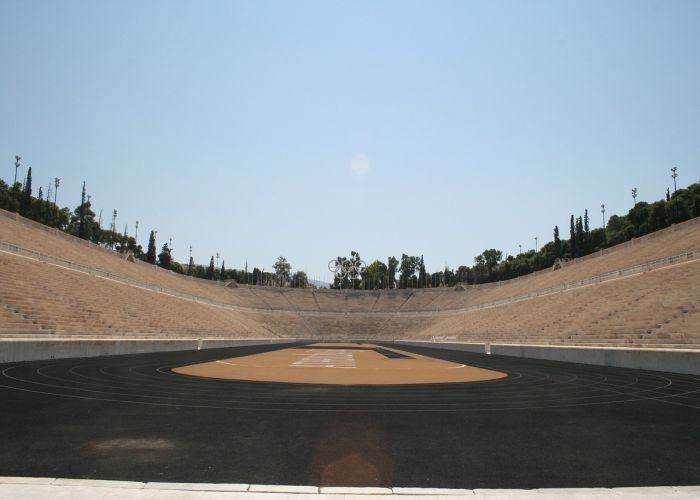
Greece has given his name to the Olympic Stadium in Kalogreza to honor him. The costume-bearer Spyros Louis, head of the Greek delegation of the Greek government at the Berlin Olympics, was the only one who did not greet fascists during the flame touch handover ceremony that took place on the 1st August 1936, at the crowded Panathenaic stadium, in the presence of A. Hitler.
The works at the Panathenaic Stadium continued immediately after the end of the Games and were completed in 1906, the year of the International Olympic Games, where then, at the request of George Averoff, Propylaea were built at the entrance of the Stadium, consisting of 18 Corinthian double rows.
However, this caused division among the Athenians, as many considered that they obstructed the unobstructed view to the inside of the stadium and did not fit into the simplicity of its form and austerity, while others argued that their grandeur was worthy of the monument.
Over time, the Propylaea suffered damage, and in 1951, the Olympic Games Committee decided to demolish them, which was completed in March 1952. At the 1896 Olympics, this underground passage was transformed into a locker room, while for the 1906 Mid-Olympics, the entrance to the passage was integrated with the locker rooms built on the east side of the Stadium.
20th century Modern Olympics
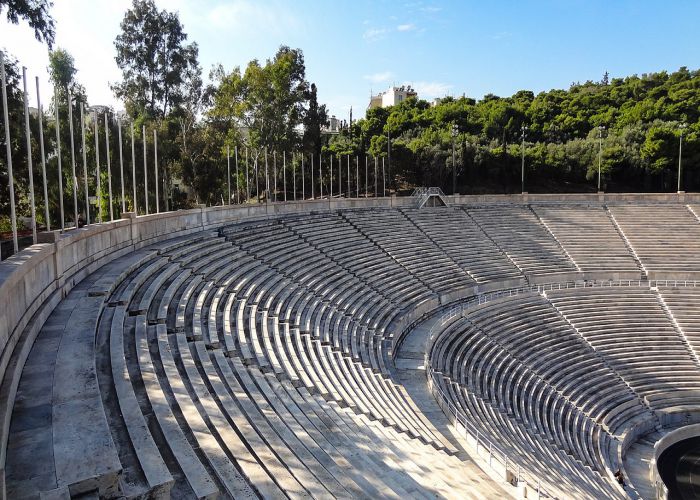
Since its establishment, the Panathenaic Stadium has hosted several sports and artistic events. Its name is inextricably linked to the world record for the largest number of spectators at a basketball game in the sport's history.
The match occurred on April 4, 1968, when a Greek team won the Cup Winners' Cup, defeating Slavia Prague in front of 60,000 spectators. In 1996, it hosted the Atlanta Olympics, and in 1997, it hosted the Opening Ceremony of the 6th World Athletics Championships. At the 2004 Olympics, the marathon and archery were completed.
Performances of ancient tragedies such as ‘Antigone’ in 1905, ‘Ekavi’ in 1927, opera performances ‘Aida’ in 1916, concerts such as the Rock in Athens Festival in 1985, Vangelis Papathanassiou in 1997, Jose Carrera in 2007, popular holidays, political gatherings Gymnastics demonstrations, and significant ceremonies, are some of the cultural events that filled and still fill the Panathinaiko Stadium.
2004 Olympics
At the 2004 Olympics, the stadium again experienced great moments with the sport of archery (15-21 / 08) but also the end of the Women's Marathon on 22/08 and the men's a week later.
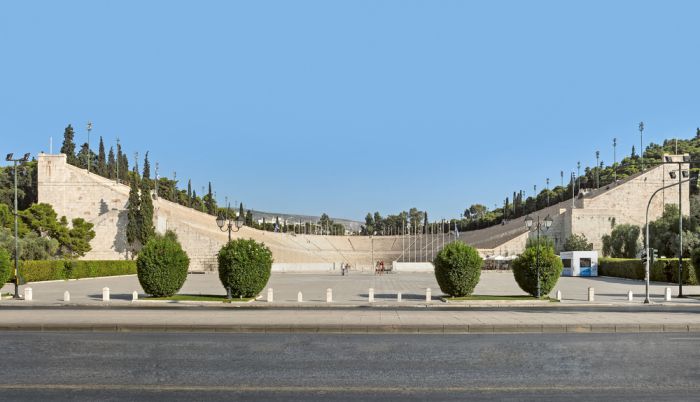
Stadium Today
Today, the Panathinaiko Stadium , with a capacity of approximately 68,000 spectators, is an important tourist Athens attraction and is used only for special occasions. It has 47 rows of seats that are divided, through a corridor, into two zones. It belongs to the Hellenic Olympic Committee , which administers, manages, and maintains it.
The Olympic flame for the Olympic Games , regardless of where they occur that year, is delivered to this Stadium.
The Hellenic Olympic Committee, guardian of Olympism in our country, decided to make the Stadium a place to visit. This offers the possibility of touring the area to all visitors, Greeks, and foreigners, as well as the possibility of organizing sports activities and educational visits for children and students.
Every visitor now has the opportunity to walk around the Stadium, be guided in its premises, enter the Roman gallery, run in the stadium, and know its history. Thus, visitors are informed about the rich history of the Panathenaic Stadium and the history of its white marble construction, restoration, architecture, and location.
There is a traditional cafe at the entrance of the Stadium. The future plans of the Hellenic Olympic Committee are the creation of a Museum and a souvenir shop.
The goal of the Hellenic Olympic Committee is to establish the Panathinaiko Stadium as one of the main poles of tourist interest in Athens but, simultaneously, a place of recreation for the residents of the capital.
How To Visit The Panathenaic Stadium
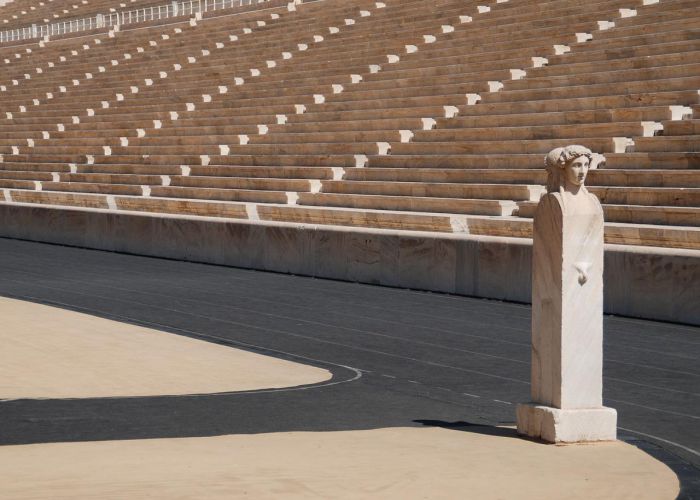
The Panathenaic Stadium is located very close to the center of Athens ; therefore, it is quite easy to reach by any means of transport.
The nearest metro station is that of Syntagma , about 800 m away, while right in front, on Vassileos Konstantinos Avenue, you will come across the buses of lines 209 and 550, the trolleys 2, 4, 10, and 11 - 'Stadio' stop- and T4 and T5 of the tram - 'Mets' stop. The main entrance to the horseshoe area is located on Archimidous Street, at the back of the Panathenaic Stadium.
From the front side, the access to the specific point is through the small Agras street that follows the stairs that are next to the left side of the Stadium (point B), while from the side of the neighborhood of Pagrati, it is made from Archimedous street.
Where Is The Stadium Located?
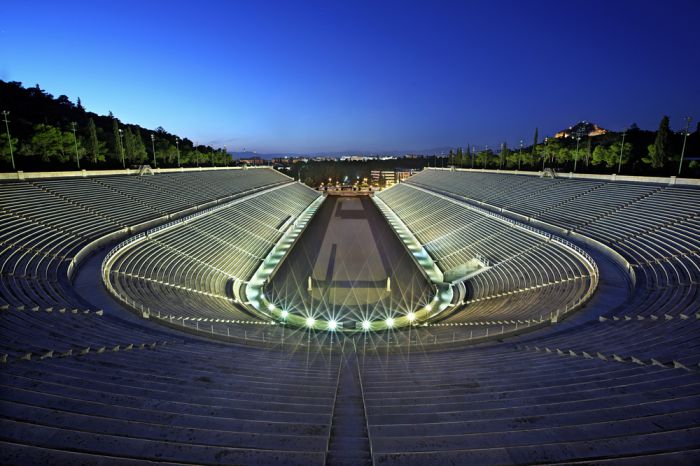
The Panathenaic Stadium, also known as Kallimarmaro , is a stadium in Athens located east of Zappeion and north of the hill of Ardittos, through which the Ilissos River passes.
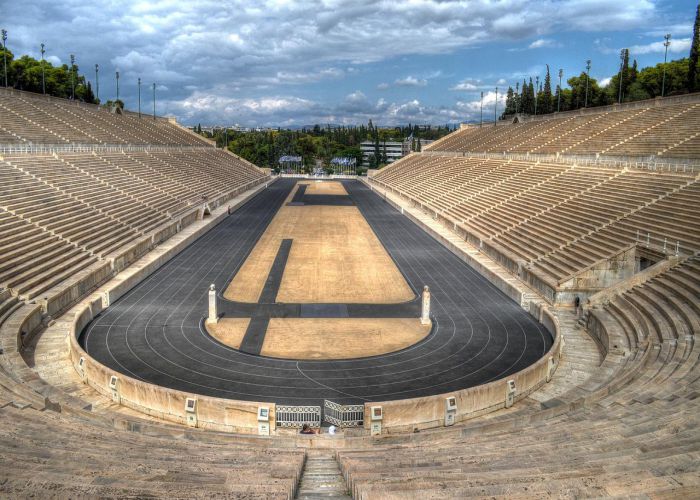
The Panathenaic Stadium is open to the public from March to October from 08:00 am to 19:00 pm, with the last ticket issued at 19:00. While from November to February, it is open from 08:00 am to 17:00 pm, with the last ticket issued at 17:00.
The general entrance admission fee costs 5 euros. The reduced admission for students with a student ID comes up to 2.50 euros. People with disabilities and children up to 6 years old can enter the site for free.
Fun facts about the Panathenaic Stadium
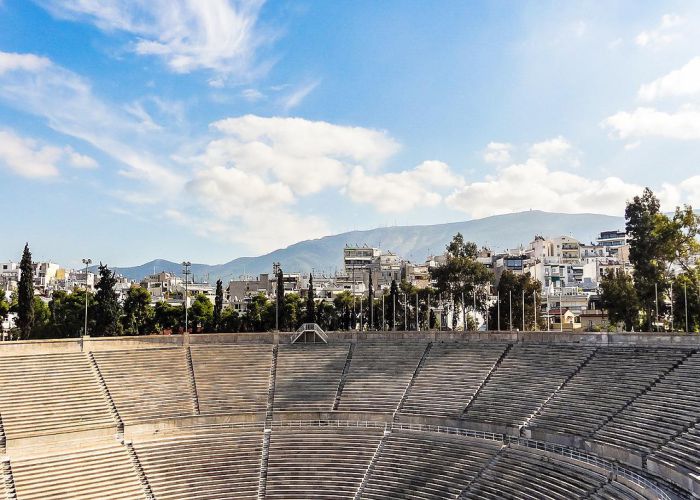
- It is the oldest operating stadium in the world . His age is estimated to be 2,352 years.
- It is the only stadium in the world where three Olympic Games have been held.
- It is also the only one in the world which is made entirely of white Penteli marble . The quarries were opened before the 1896 Olympics exclusively for its construction.
- In Roman times, it was used as an arena with the addition of a semicircular wall.
- He holds another world record that will probably remain unbroken forever. It concerns the largest attendance of spectators at a basketball game in the history of the sport.
- The Ilissos river flowed in front of the stadium until a few decades ago. A beautiful bridge connected the entrance of the stadium with Herodes Atticus. Today the river is underground.
Final Thoughts
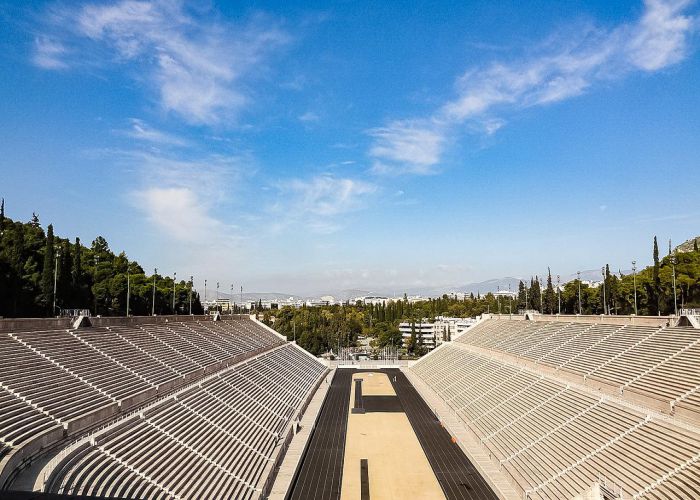
As you have probably realized by now yourselves, the Panathenaic Stadium hides a world of history within its premises. It is a sight of beauty and a trademark of the Greek capital that is deeply embedded in Athenian history and culture .
Now that you know all about it, it’s time to visit it during your experience with one of our Greece vacation packages and see what the hype is all about!
Frequently Asked Questions
What does 'panathenaic' mean.
Panathenaic is an adjective for or relating to Panathenaea, a festival in honor of the goddess Athena .
Where is the original Olympic stadium?
Just outside the northeast corner of the precinct of the sanctuary of Olympia , you will find the ancient stadium of Olympia.
In it were held the ancient Olympic Games but also the Irea, which were women's games in honor of the goddess Hera.
Of course, around the 6th century, the games took place at a different point, and the current stage acquired its current form during the 5th century BC. after three consecutive configuration attempts.
This development was also led by the increasing trend of the scope of the games that constantly gathered more athletes and spectators. The stadium was moved and expanded once again during the 4th century BC, reaching a track with a length of 212.54 meters and a width of 30 meters.
Can you run in the Panathenaic Stadium?
Of course! As long as you pay your entrance fee, you’re welcome to run around the Panathenaic Stadium and feel the grandeur of ancient Athens surround you.
Please be careful and save your energy for the designated running space, as if you attempt to run on the marbles, you’ll fall before you know it. The age of the marble has turned it into a slippery slope that must be treated as such for your own safety.
Why was the Panathenaic Stadium built entirely of marble?
The Panathenaic Stadium is the only marble stadium i n the world. White Pentelic marble was used, to which the stadium owes the name ‘Kallimarmaro,’ which translates in Greek to ‘beautiful marble.’
For the needs of the first modern Olympic Games of 1896, the stadium regained its marble form with the sponsorship of the national benefactor G. Averoff. The current building is almost identical to the ancient monument in terms of concave but differs significantly in the track. Its capacity today amounts to 45000 spectators .
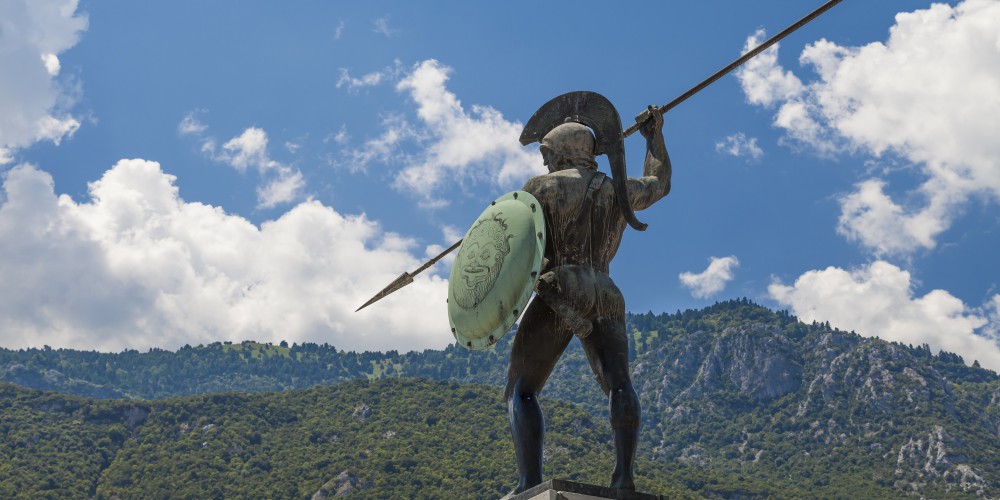
SantoriniDave.com
The panathenaic stadium in athens.
Greece › Athens › Archaeological Sites › Panathenaic Stadium Updated: October 31, 2022 By Santorini Dave
- Best Hotels in Athens
- Where to Stay in Athens
- Best Restaurants in Athens
- Best Things to Do in Athens
- Complete Athens Travel Guide
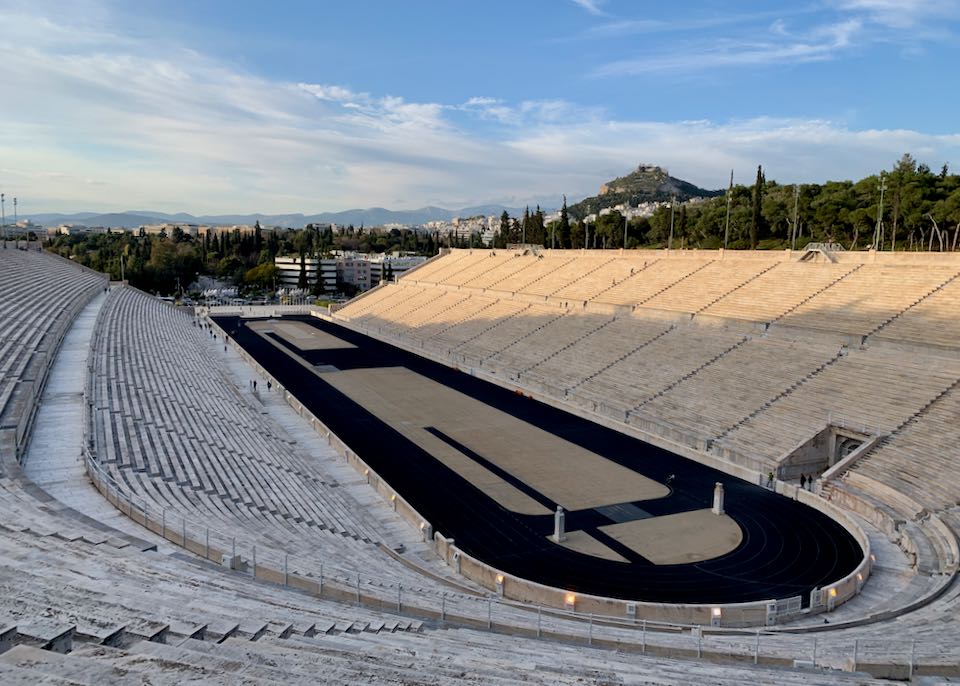
The Panathenaic Stadium in Athens was the site of the first modern Olympic Games, and is the world’s only stadium made entirely of marble.
Tours and Tickets : • Tickets are are only available for purchase at the stadium, not online. • Small Group Olympic Games Workout (2 hours) • Athens City Tour with Entry Tickets (5 hours) • Athens Small Group E-Bike Tour (2.5 hours; passes stadium, no entry.) Panathenaic Stadium Hours and Information Hours : Open daily. 8am to 7pm March to October; 8am to 5pm November to February. Website : panathenaicstadium.gr Location : Vasileos Konstantinou Avenue Telephone : +30 21 0752 2984 Admission Fee : General admission fee: 10€. Reduced fee: 5€ for seniors over 65 and students. Free admission for children under 6 and for visitors with disabilities and persons accompanying them. – Audiobooks are available in 11 languages and included in the admission fee. Ask for this option at the entrance. Parking : Street parking, nearby pay lots. Nearest Metro : Syntagma or Evangelismos, both about 1km away.
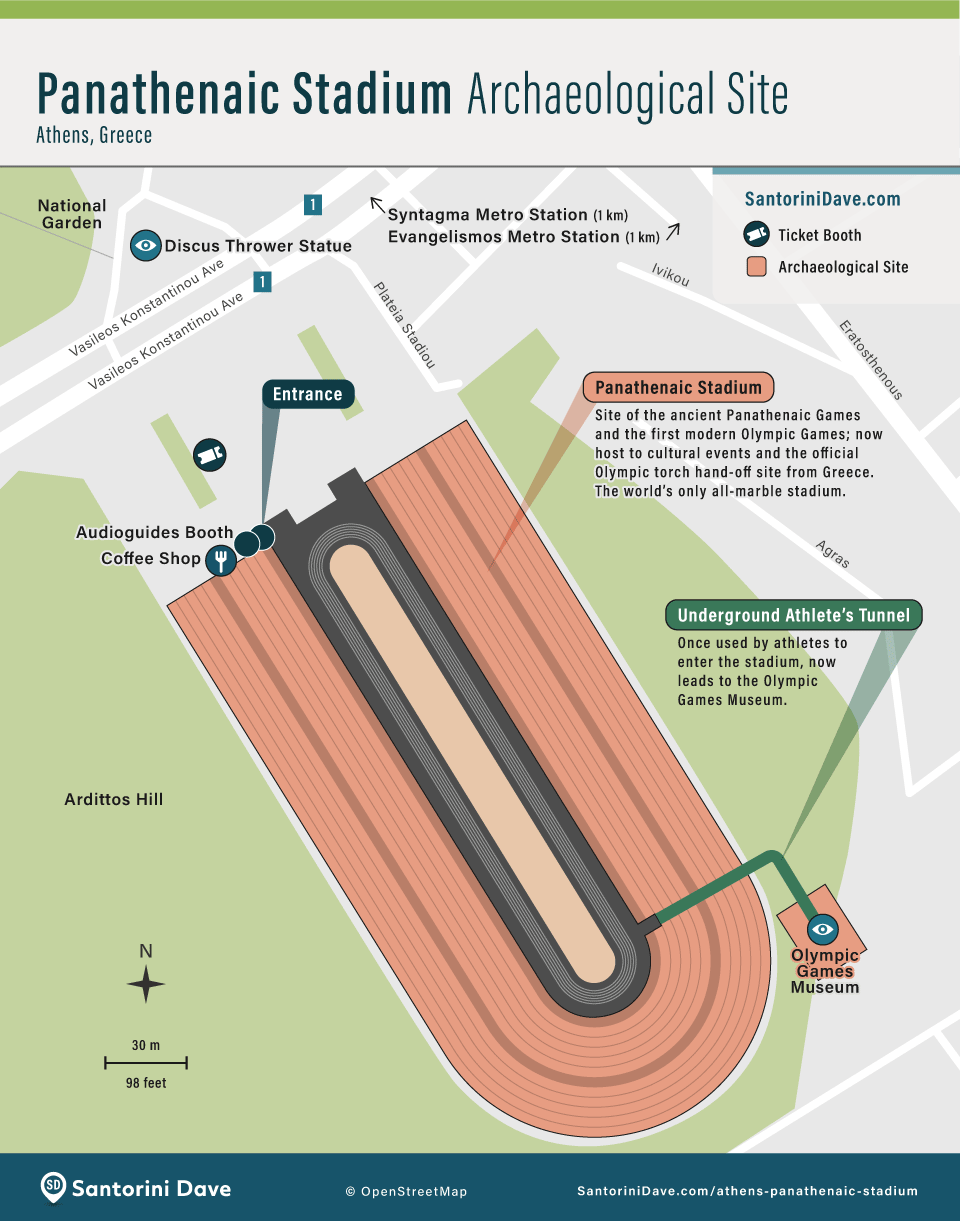
Panathenaic Stadium in Athens The Panathenaic Stadium in Athens was the site of the first modern Olympic Games, held in 1896, and the only stadium in the world built entirely out of marble. The top rows of the stadium (especially the upper tier of stand 21) enjoy impressive views of Mt. Lycabettus and the Acropolis. Also known as Kallimarmaro (meaning “beautifully marbled”), the stadium is located in the central Athens district of Pangrati, about a 750-meter walk from the Temple of Olympian Zeus and about a 1km walk from Syntagma Square or the Acropolis Museum . The original stadium was built in 330 BC by an Athenian statesman, Lykourgos, for the Panathenaic Games which were held every 4 years in honor of the goddess Athena. In 144 AD, Herodes Atticus, an Athenian aristocrat and Greco-Roman politician, rebuilt the original stadium out of Pentelic marble (from Mount Penteli, northeast of Athens) with a massive capacity of 50,000. In the 4th century, after the rise of Christianity, the stadium was mostly abandoned and the area was covered by a wheat field until excavation began in 1869. It is the finish point for the annual Athens Classic Marathon, which originated in 490 BC when an Ancient Greek messenger ran from the Battle of Marathon to Athens to announce Greece’s victory against the Persians. The stadium holds regular concerts in the summer and is host to significant cultural, sporting, and ceremonial events. During an Olympic Games year, the Olympic flame travels from Ancient Olympia throughout Greece before finally arriving to the Panathenaic Stadium for the official hand-over ceremony to the new host country. Daily runs are held every morning from 7:30am to 9:00am. Signed safety waivers (provided on site by stadium staff) are required. A small coffee shop is open daily at the front of the stadium.
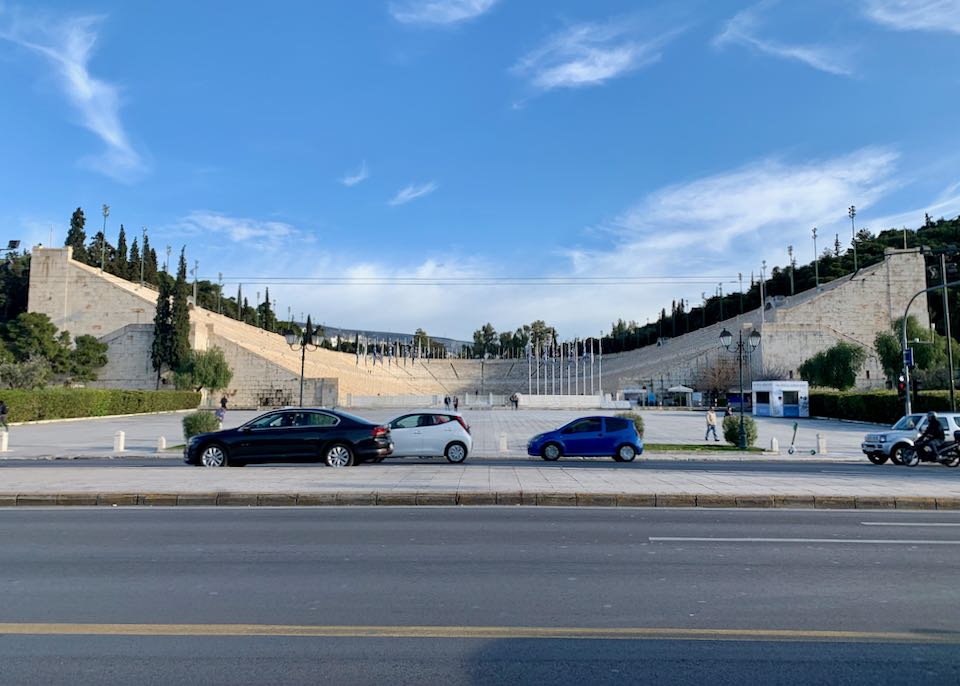
The Panathenaic Stadium in Athens is located on busy Vasileos Konstantinou Avenue, across from the National Garden and not far from the Temple of Olympian Zeus.
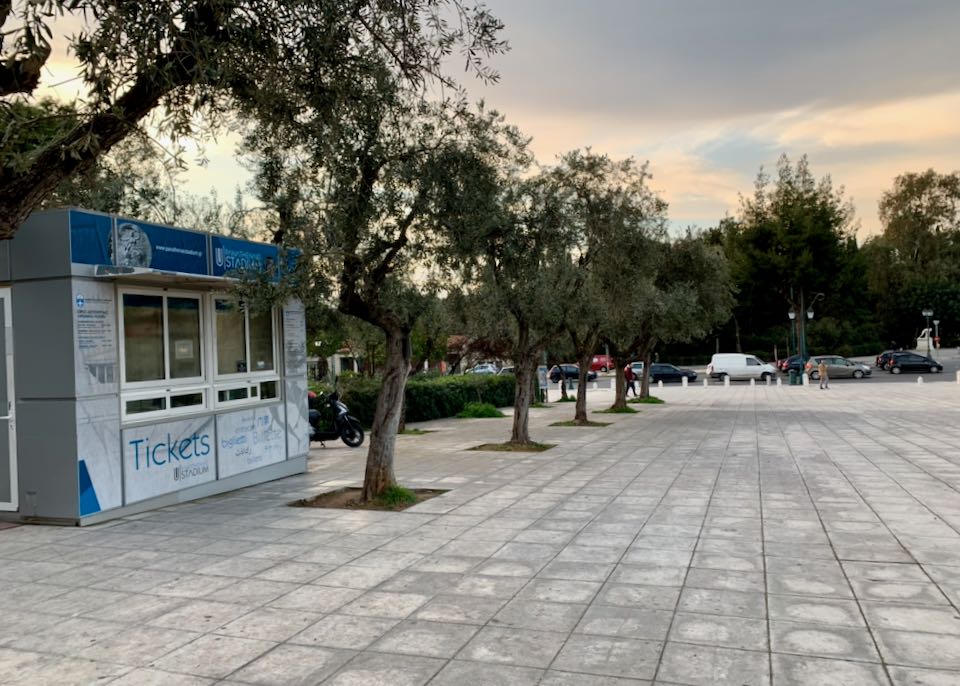
The ticket booth is located on the right side of the stadium plaza. Tickets are available for purchase by cash or credit card, and are not available online.
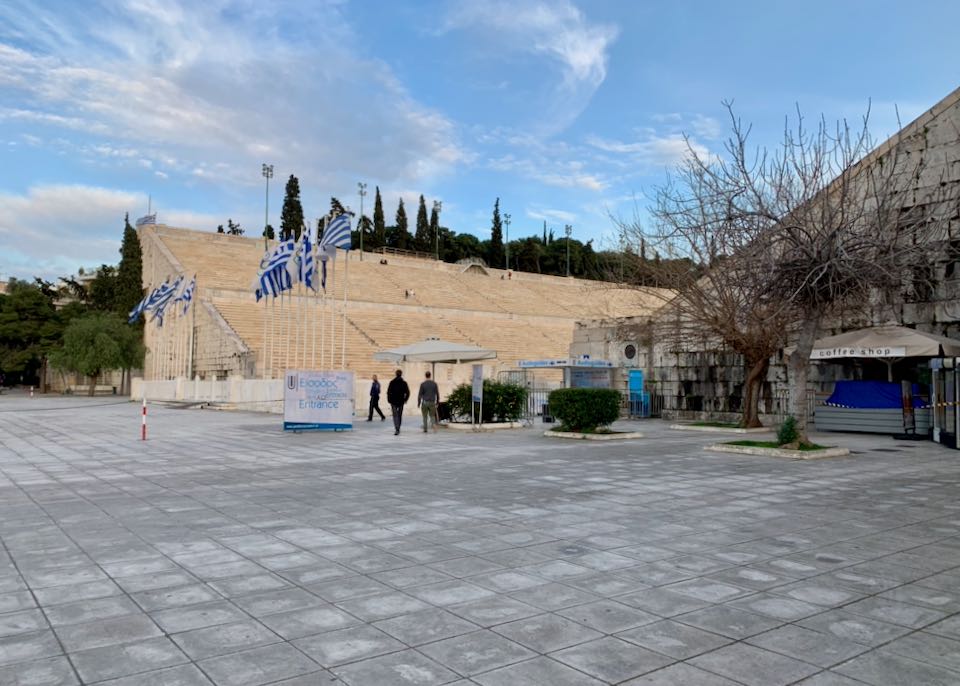
The stadium entrance is at the center of the plaza. There is a small coffee shop outside that’s open most days.
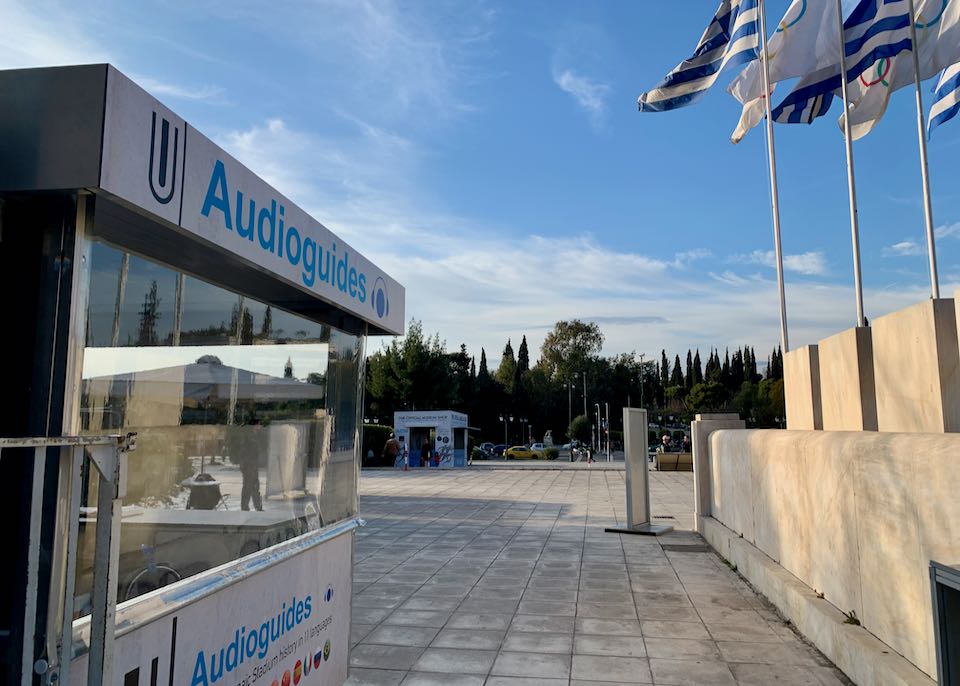
Audioguides are available at a booth as you enter the stadium. They are included in the ticket price.
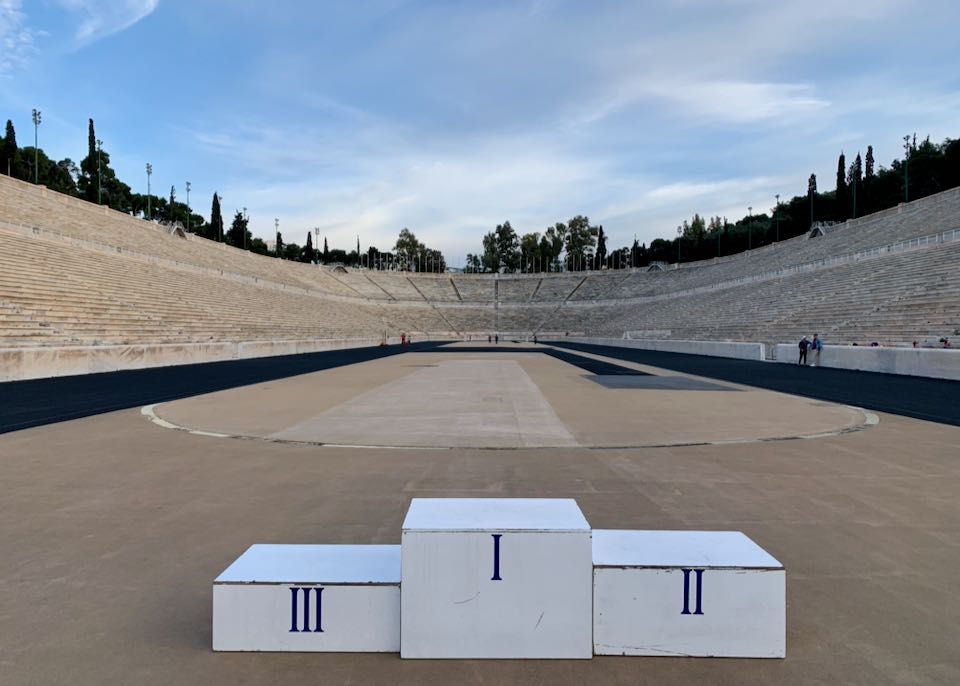
The Panathenaic Stadium was first constructed in 330 BC for the Panathenaic Games, held every 4 years in honor of the goddess Athena. It was also the site of the first modern Olympic Games, in 1896. Modern-day visitors can have their photos taken on the winners’ podium.
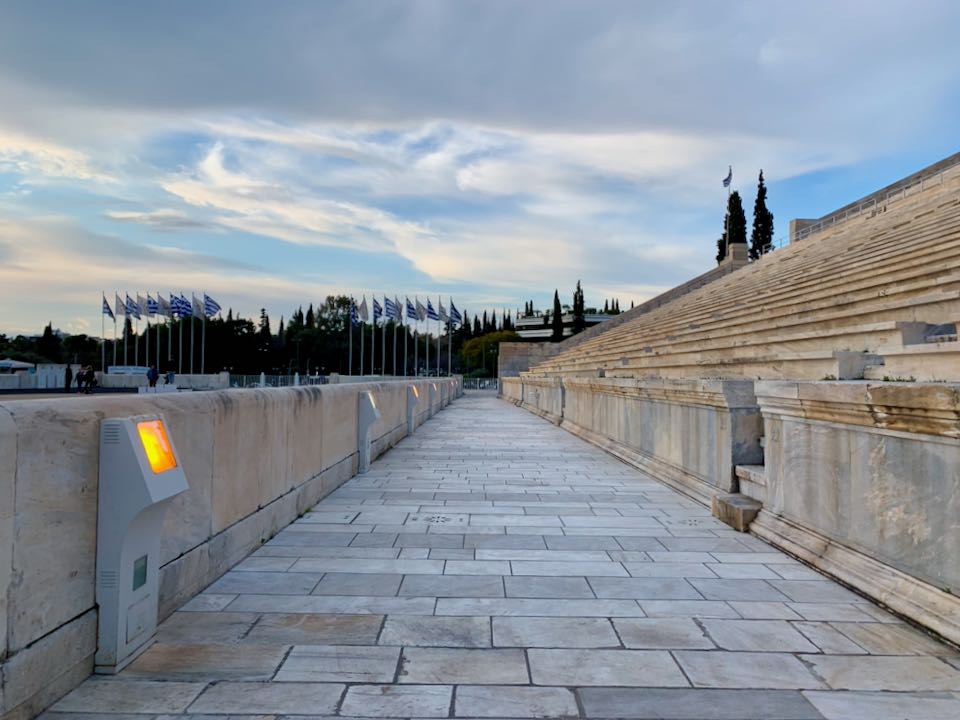
It is the only stadium in the world made entirely of marble, which is sourced from Mount Penteli, northeast of Athens. The marble stands can be quite hot in the summer and slippery in the winter rain, and the stairs are very steep. Wear good shoes and take care not to slip.
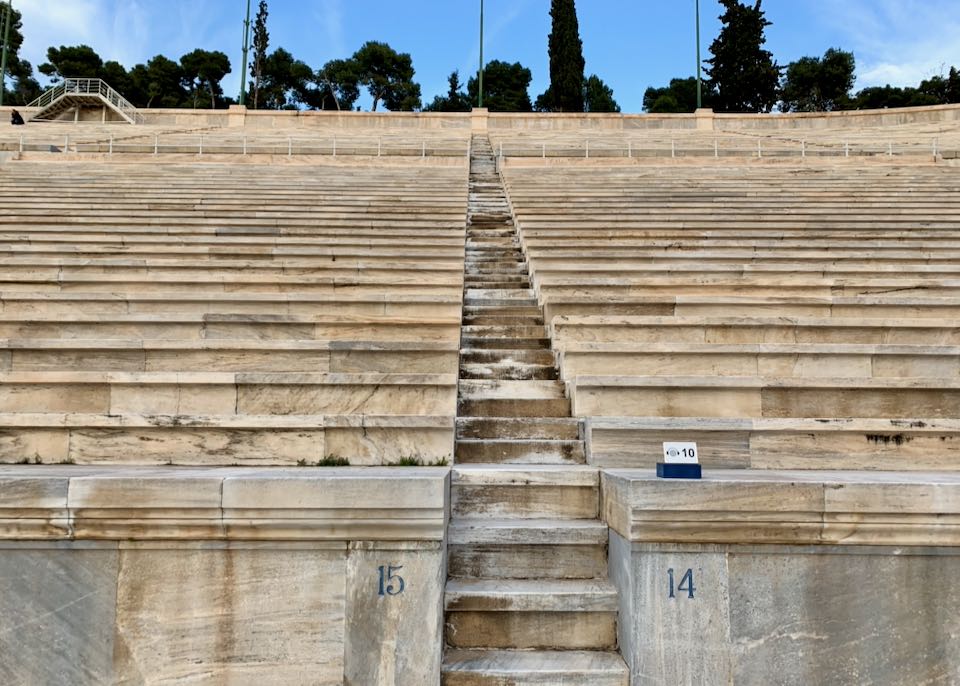
Visitors to the stadium have full access to the track, the stands, the vaulted underground passageway, and the small but interesting Olympic Games Museum.
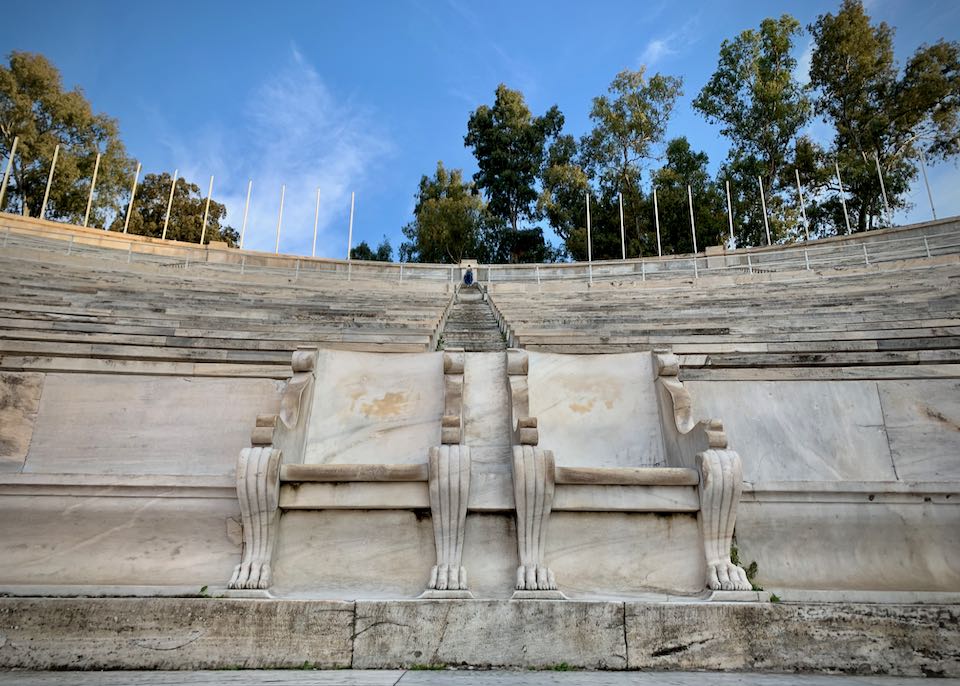
Royal box seating used in the 1896 Olympic Games.
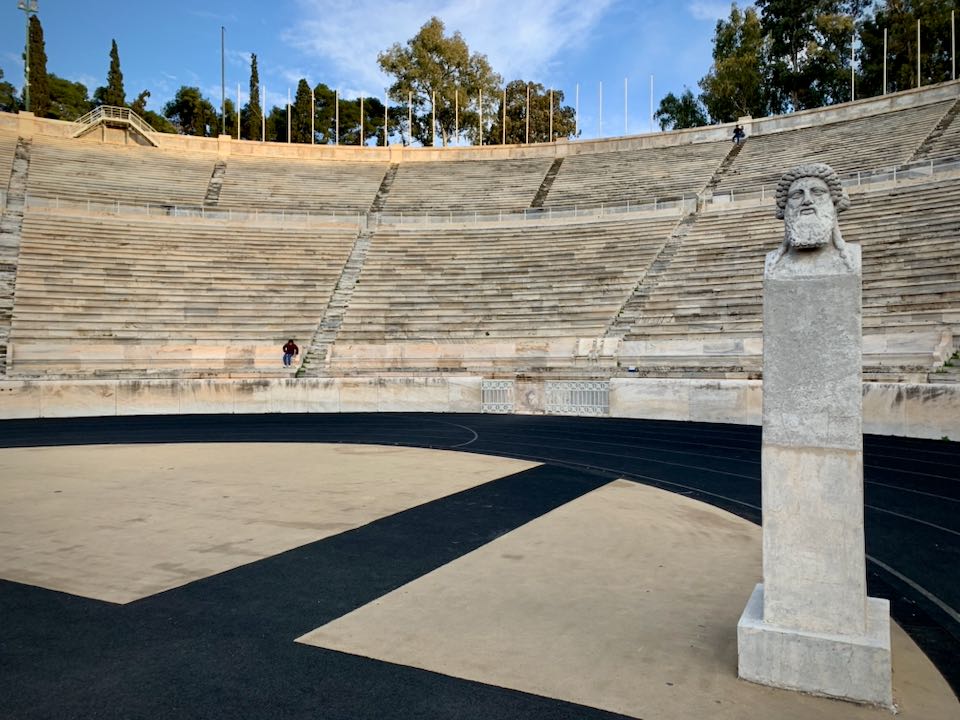
There are excellent views from the top tier of stands.
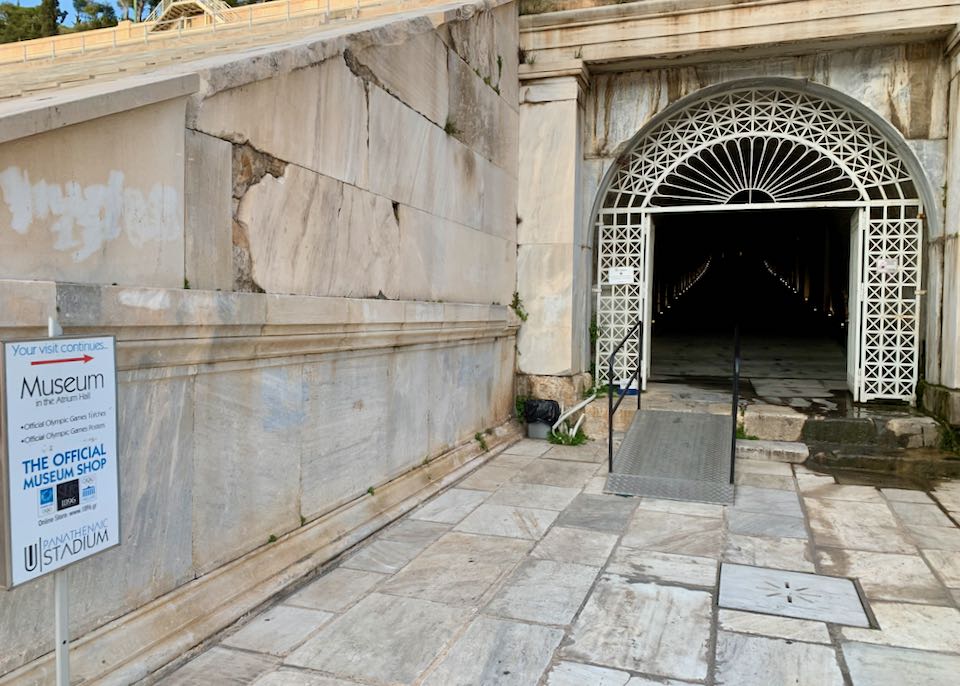
On the eastern side of the stadium, visitors can enter the vaulted underground passageway once used by athletes to enter the games.
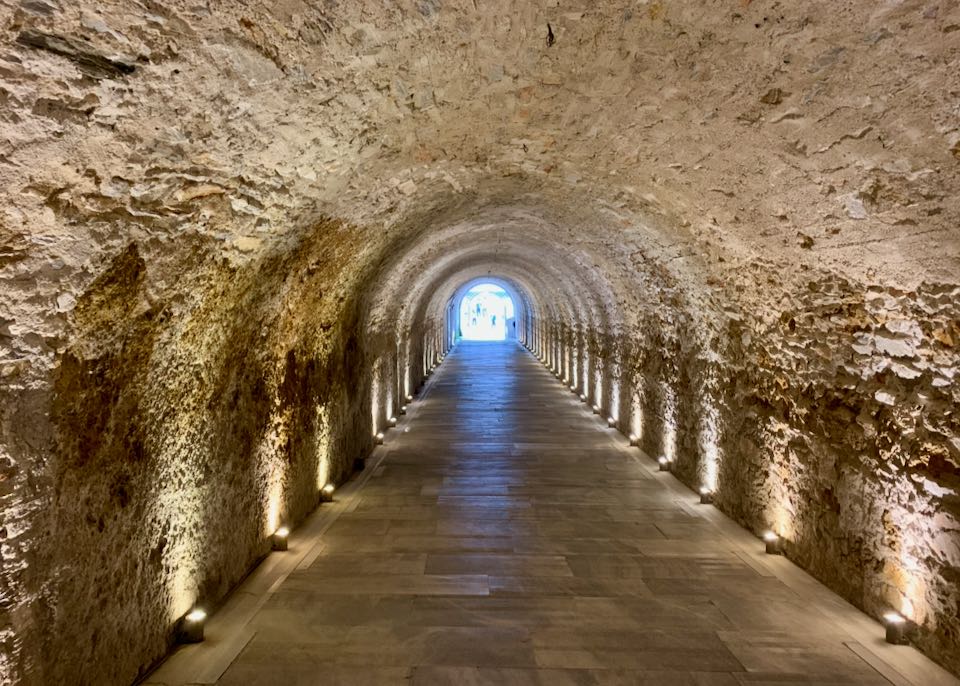
Inside the tunnel, looking back toward the field.
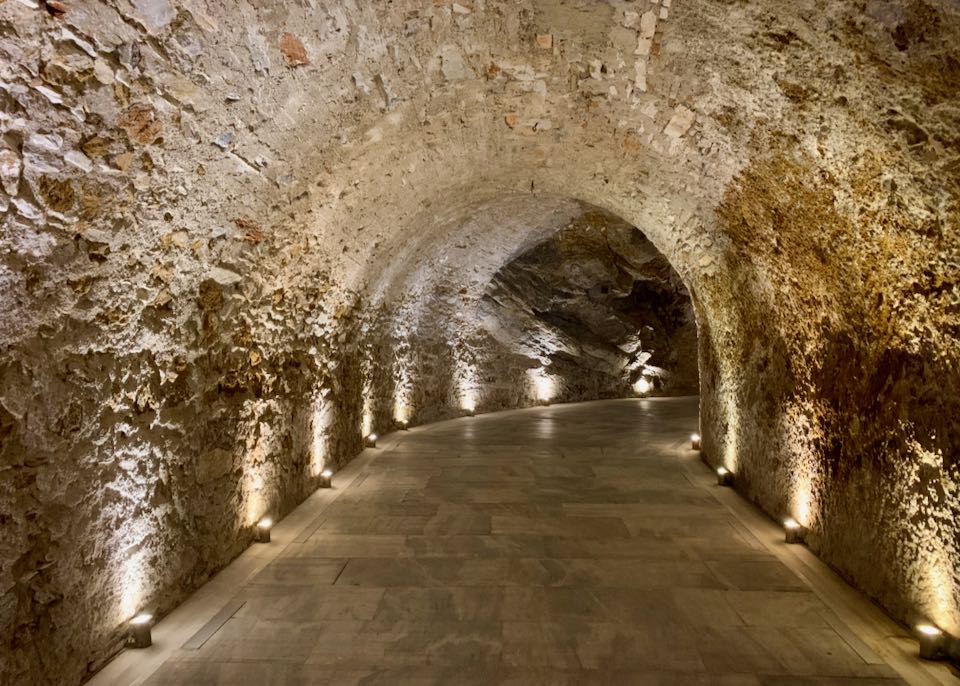
Throughout the stadium’s multiple reconstructions over many centuries, this passageway is the only original part of the ancient stadium that has been preserved to this day.
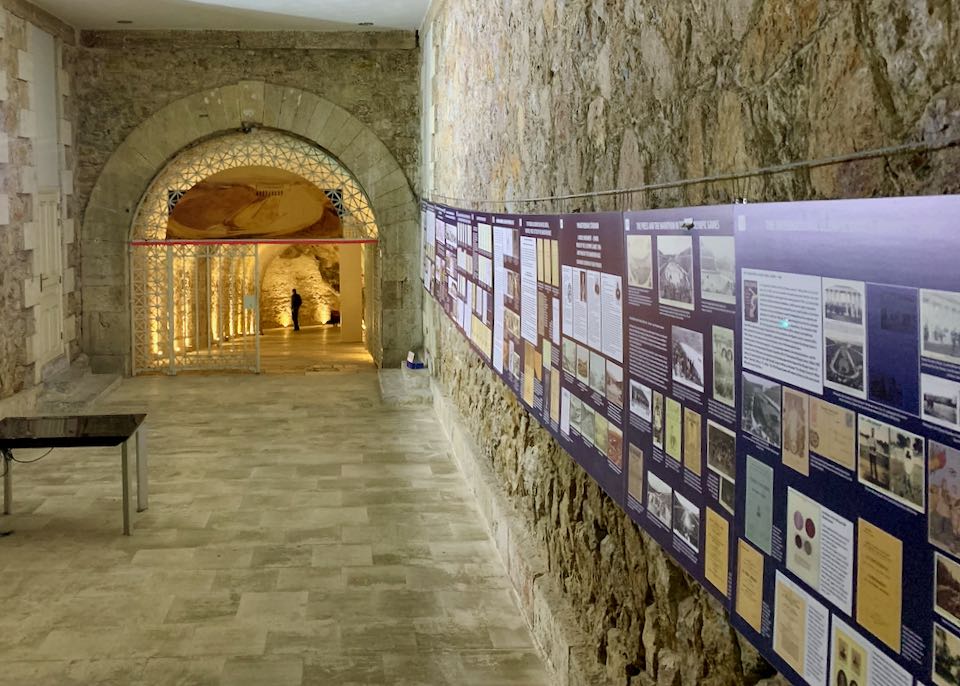
Today, the tunnel leads to the Olympic Games Museum, which explores the history of the stadium and the Olympic Games using photos and memorabilia.
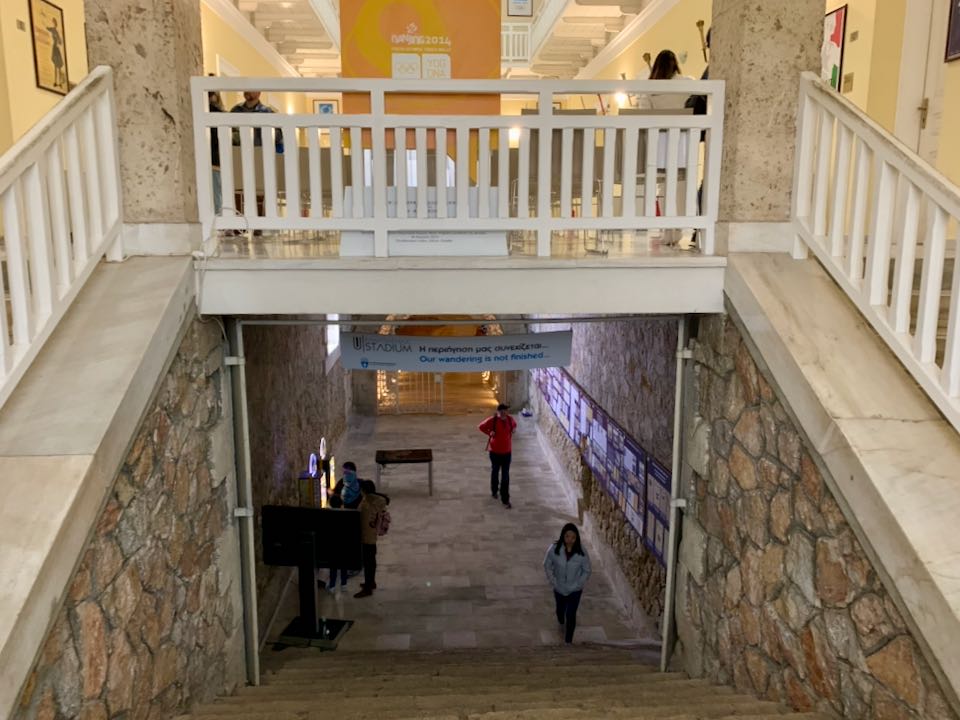
Stairs lead up from the passageway to the museum building.
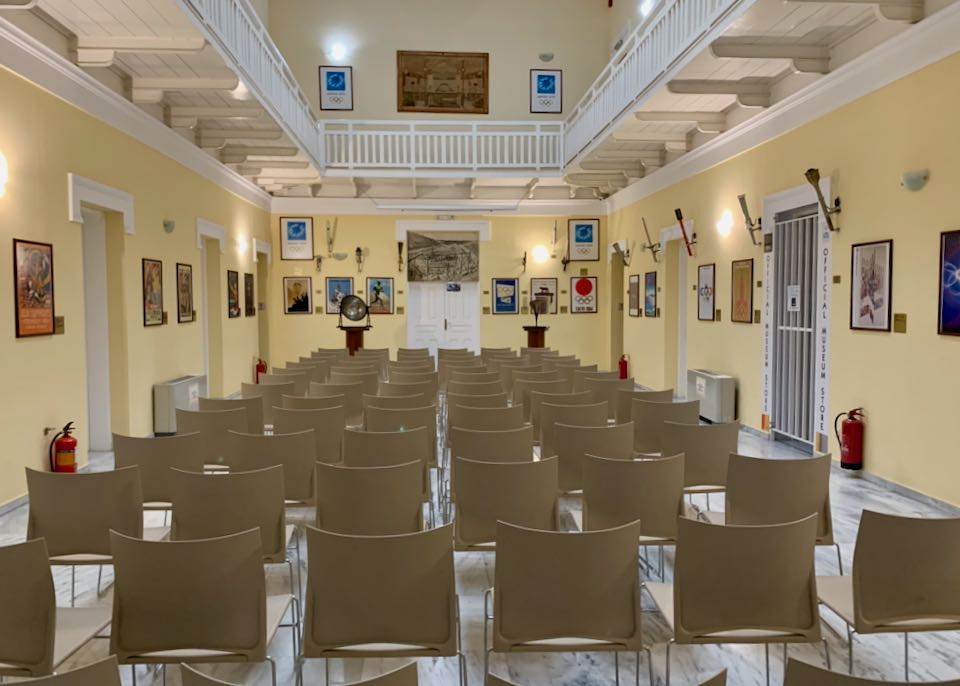
In the main building, visitors can see Olympic posters and torches that have been used over the years.
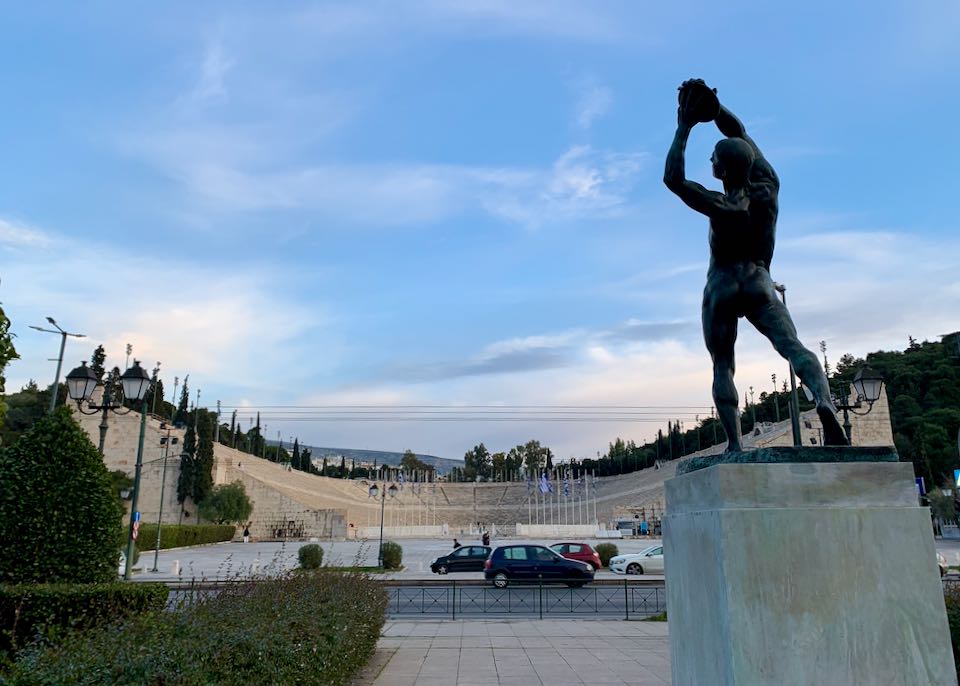
Across the street from the stadium, don’t miss Konstantinos Dimitriadis’ impressive bronze Discus Thrower statue, winner of the gold medal for sculpture at the 1924 Olympic Games in Paris.
Read More Best Museums in Athens Best Hotels in Athens Where to Stay in Athens Best Restaurants in Athens Best Things to Do in Athens Best Museums in Athens Complete Athens Travel Guide
About Santorini Dave


VISIT THE PANATHENAIC STADIUM IN ATHENS [TICKETS, PRICES, ETC.]
What to see at the Olympic Stadium in Athens (Panathenaic)? Is it worth visiting?
Are you planning a trip to the Greek capital? If so, don’t miss out on visiting the Panathenaic Stadium in Athens!
The Panathenaic Stadium, the “stadium of all Athenians” in Greek, is an ancient stadium in Athens. It was renovated for the first Olympic Games of the modern era, during the year 1896.
It is one of the emblematic monuments of the Olympic Games.
Built in 330 BCE, it once hosted the great Panathenaia, one of the ancestors of our modern Olympic Games.
Are you planning a visit to the Panathenaic Stadium in Athens? In this article, you will find all the essential information, our tips, history and practical information including prices and timetables!
- GUIDE TO VISITING THE ACROPOLIS IN ATHENS
- 10+ AWESOME THINGS TO DO IN MYKONOS
- 15 BEST THINGS TO DO IN PAROS
- 25 BEST THINGS TO DO IN SANTORINI
History of the Panathenaic Stadium in Athens
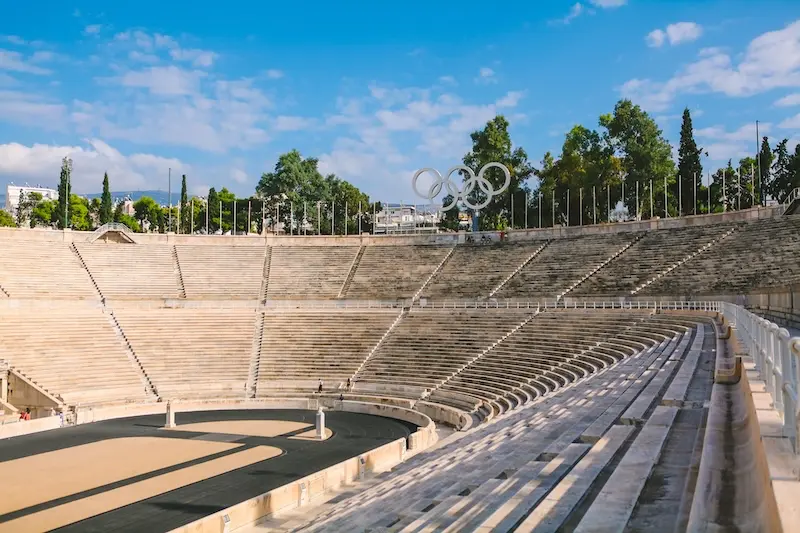
The Panathenaic stadium in Athens was inaugurated during the summer of 330 BC on the occasion of the great Panathenaia. These religious and social festivities in the city of Athens then marked the transition to the new year. Every four years the great Panathenaia took place, festivals of even greater opulence, inspired by the Olympic competitions.
The stadium was used until the Romans, and it was even renovated and enlarged around 140. Entirely rebuilt in marble, it was then considered one of the most beautiful of its time.
Abandoned at the end of the 4th century, it fell into ruin. Covered with a field of wheat, its marble plundered, it was then completely forgotten. Fortunately, archaeological excavations were undertaken after Greek independence. Rediscovered, the stadium was renovated for the first time for the 1896 Olympic Games, the first of the modern era.
Regaining its former glory, it was restored a second time for the 2004 Olympic Games. It then hosted the archery events and the finish of the two marathons.
Our advice for visiting the Panathenaic Stadium in Athens

Are you coming to Athens soon and would you like to prepare for your visit? We understand you perfectly! During the holidays, time can be precious. So to help you visit the Panathenaic Stadium in Athens, here are some very practical tips
1. The best time to visit Athens Panathenaic Stadium
You can visit the Panathenaic Stadium in Athens all year round. It is generally not very crowded, expect perhaps on weekends…
In summer, we recommend that you come in the morning or late afternoon. Because of the marble, the temperature in the stadium can be very high. Bring a bottle of water and a hat if you come at this time…
2. During your visit to the Panathenaic Stadium in Athens
The stadium entry includes an audio guide. The audio guides are available in 11 languages: French, Greek, English, German, Spanish, Italian, Russian, Chinese, Japanese, Portuguese and Korean.
As an archaeological site, you will have to respect certain rules in the stadium. It is therefore prohibited to smoke, eat or drink anything other than water within the stadium.
3. Price, Tickets, Location, Opening Hours
- General Admission: €10.00;
- Reduced (students or over 65): €5;
- Persons with a disability and accompanying person: free;
- Children under 6 years old : free.
Opening hours also vary depending on high and low seasons. Between March and October, the stadium is open from 8 a.m. to 7 p.m . From November to February, you can visit the Athens Panathenaic Stadium from 8 a.m. to 5 p.m.
It takes at least 1 hour to visit the Stadium.
Book your Activities in Athens:
What to do during your visit to the Panathenaic Stadium in Athens?
1. feel like an athlete.
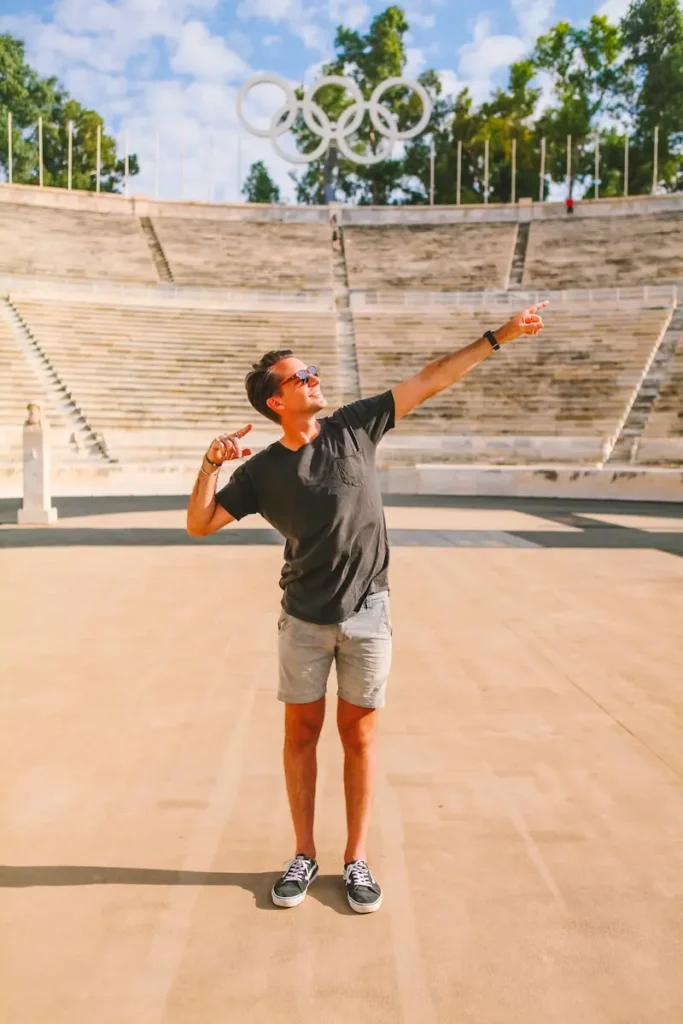
During your visit, you will be able to walk the stands and the track of the Panathenaic stadium. The place is full of history and magnificent with its bright white marble. You will be able to follow in the footsteps of great athletes of the past by running along the track. Remember to bring sports shoes if you want to set out. And above all, don’t forget to take a photo on the podium. If you want to go jogging in the stadium, know that it is normally open to athletes every morning from 7:30 a.m. to 9 a.m.
2. Check out the underground passage
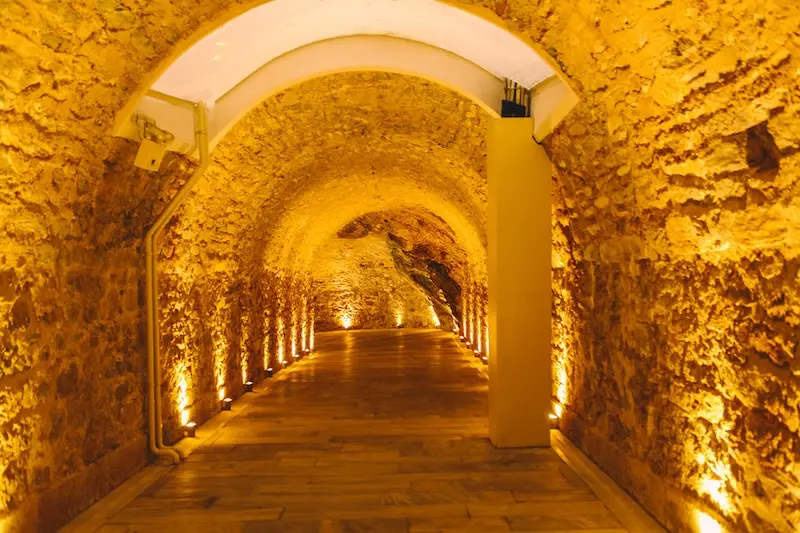
During your visit to the Panathenaic Stadium in Athens, you will also pass through an underground passage. You will admire the statues of emblematic characters from the Olympic world. Everything will obviously be commented on by your audio guide. You will learn more about this emblematic sports site of the Athenian city.
The stadium is therefore not just a set of stands, and a long track with tight turns. It houses small details and small sites, and is full of fascinating anecdotes.
3. Enjoy the view from the top floor
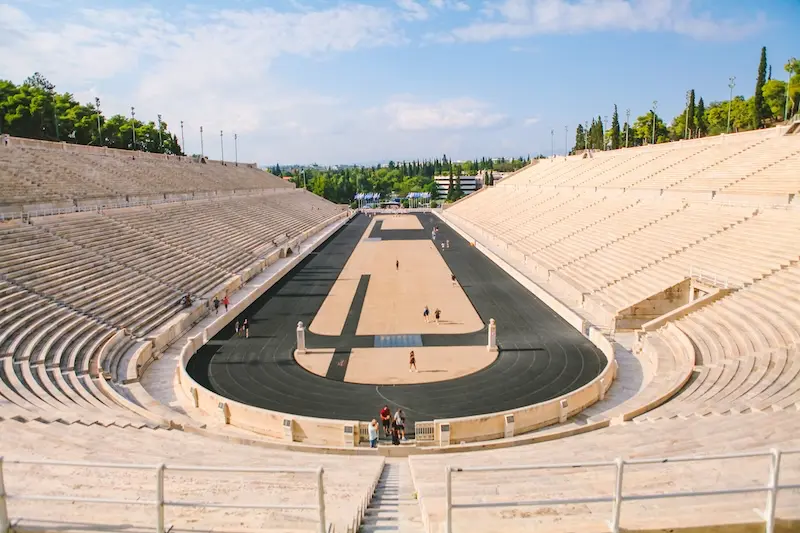
We recommend that you go up to the upper floor of stand 21. Up there you can take a magnificent photo. Indeed from this spot, it is possible to capture a shot of the Acropolis, the Parthenon, the hill of Filopappos, the temple of Olympian Zeus, Zappeion, the national gardens and the hill of Lycabettus.
At the end of your visit, and if you are thirsty, you can head to the cafe at the Panathenaic Stadium in Athens, open every day. However, we actually recommend that you head to the neighboring National Garden or a few small cafés in the Pangráti district.
Are there guided tours of the Panathenaic Stadium in Athens?

As mentioned previously, the Panathenaic Stadium in Athens already offers you a guided tour, via an audio guide many languages. This audio guide is included in the entrance price.
However, if you want to visit this place accompanied by a real guide, know that there are some guided tours of the stadium. Most tours are usually combined with other monuments in the Greek capital.
Check out our selection of guided tours:
Guided tours include, in addition to the Olympic site, a discovery of the emblematic monuments of the Acropolis, the changing of the guard in front of the Greek Parliament, and the exploration of the historic district of Plaka.
How to get to the Panathenaic Stadium in Athens?
The stadium is located opposite the statue of Myron Discobolus. You can easily reach it by metro or bus, or even on foot.
By bus, you can take yellow lines 2, 4, 10, 11. They stop in front of the Athens Panathenaic Stadium, at the “Stadio” stop.
Several metro lines stop not far from the Panathenaic Stadium in Athens. You can choose the followings:
- Acropolis, on line 2;
- Syntagma, on lines 2 and 3;
- Evangelismos, on line 3.
- Syntagma is the most convenient stop to reach the stadium. You will simply have to exit the station on the National Garden side and then cross it towards the south.
From the Acropolis stop, you will have to join Vasilissis Olgas Avenue then Vasileos Konstantinou Avenue. It will take you to the square in front of the stadium, where the entrance is.
From Evangelismos, you will have to cross the small Rizari Park and then also follow Vasileos Konstantinou Avenue. Both journeys usually take 15 minutes on foot.
Where to park near the Panathenaic Stadium in Athens?
Driving there is not so ideal. Athens can have complicated traffic, even during the day, with a lot of traffic jams.
However, if you come by car, you can always park a few steps from this archaeological and sporting site. A covered car park, the “STADIUM Parking”, is normally open 24 hours a day. The rate is €5 per hour.
Our Final Thoughts – Is the Panathenaic Stadium in Athens worth visiting?

Visiting the Panathenaic Stadium in Athens is a deeply enriching experience that connects you with the ancient roots of sports and culture.
As you stand in the same space where athletes competed over two millennia ago, it’s hard not to be awestruck by the continuity of human history and the enduring spirit of competition and excellence.
Walking through the arched entrance and onto the track, you can almost hear the echoes of the cheering crowds from ancient times.
For us, no question, a visit to the Panathenaic Stadium in Athens is a must!
We are Hammer and Guillaume, a fun couple traveling the world. We will take you to some of the most amazing places on earth. Hammer is a yoga instructor and Guillaume a true water baby, enjoying all kinds of water sports. Follow-us to get the latest update about our travels.
Similar Posts
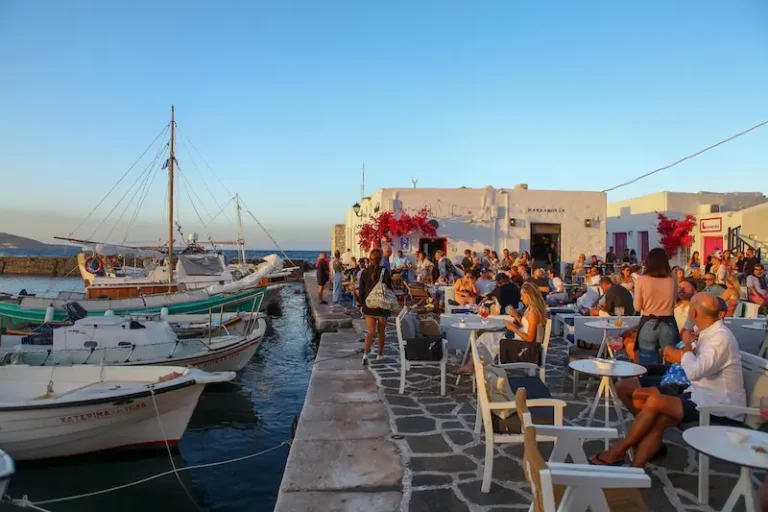
15 BEST PLACES TO ENJOY PAROS NIGHTLIFE!
Experience the electric nightlife of Paros, a Cycladic gem with vibrant bars, chic beach clubs, and great vibes overall!

25 BEST THINGS TO SEE IN PUERTO DE LA CRUZ [TENERIFE]
Puerto de la Cruz is one of the most important towns in the north of Tenerife and one of the best things to see on the island. Full guide.

5 TOP SKI DESTINATIONS IN EUROPE FOR LUXURY GATEWAYS
Discover the 5 top ski destinations in Europe for luxury getaways, featuring exclusive resorts, breathtaking slopes, and unparalleled comfort.

WHAT TO SEE IN PORTO MONIZ [MADEIRA]
Porto Moniz is a charming little town surrounded by mountains and the Atlantic Ocean located in the northwest side of Madeira.

15 BEST THINGS TO DO IN ERICEIRA [PORTUGAL]
In Ericeira you will see majestic cliffs, beautiful beaches with a relaxed atmosphere mixing surfing culture and traditional fishing village.

6 BEST THINGS TO DO IN MASPALOMAS [GRAN CANARIA]
Maspalomas is an incredible place to visit in Gran Canaria. In this post we listed the best things to see in Maspalomas.
Leave a Reply Cancel reply
Your email address will not be published. Required fields are marked *

Are You In?
Join our mailing list and receive the latest news and travel offers from our team. don’t worry, we hate spam as much as you do.
The Panathenaic Stadium of Athens: An Architectural Marvel That Stands the Test of Time
- Last Updated on: Jan 19, 2024
- Read Time 7 mins
- Published: Nov 10, 2020
We Need Your Support!
We want to remind you that Athens by Locals is reader-supported. By booking tours, hotels, tickets, and other travel services through the links on our website, you can help us continue providing valuable content and information. Note that we receive a small commission only if you make a booking using our links at the time of your visit. So, if you're not quite ready to book yet, you can save this post and the links and return to make your booking when the time is right. We genuinely appreciate your support and are thrilled to have you in our travel community. Please don't hesitate to reach out if you have any questions or need assistance. Happy travels!
Connected to the Modern Olympic Games, the Panathenaic Stadium is one of Greece’s most popular attractions. Being the only stadium in the world built entirely of marble the Panathenaic Stadium of Athens is commonly called Kallimarmaro (which means beautiful marble).
An architectural masterpiece of great historical importance, the impressive stadium is bound to captivate you. Its story begins in 330/29 BC and spans to modern-day Athens.
Here is all you need to know about the Panathenaic Stadium of Athens.
The History of the Panathenaic Stadium
Among other public works that Lykourgos, a statesman of Athens started commissioning in 338 BC was the construction of a stadium between the Ardettos Hill and the banks of the River Ilissos.
The ancient stadium, which later became the site where the Panathenaic Stadium was built was inaugurated in 330/29 BC when the Great Panathenaia took place for the first time.

Several centuries later, during the Roman period, the orator and sophist Herodes, son of Atticus, erected several buildings throughout Athens.
During that time, he also made significant changes to the stadium Lycourgos had built transforming it into the magnificent architectural masterpiece we see nowadays.

Between AD 139 and 144, the stadium took the current horseshoe shape, and rows of seats of white Pentelic marble were added composing a space for spectators.
Moreover, the track saw several changes. Marble slabs divided the starting line from the finishing line and bifacial herms adorned the track.
In addition, the stadium was decorated with statues of marble, bronze, or gold and the temple of the goddess Tyche/Fortuna.
The Panathenaic Stadium had gained a worldwide reputation and was attracting travelers; however, when Christianity prevailed, the once glorious stadium was abandoned.

Sports events stopped taking place, and his marbles were used to construct other Athenian buildings.
Traces of the ancient Stadium of Herodes Atticus were unraveled in 1836 and 1869 in the excavations directed by Ernst Ziller.
Based on these findings, the stadium was reconstructed with Pentelic marble .
The architectural masterpiece came again into the spotlight in 1896 when it hosted the first modern Olympic Games.
Throughout the 20th century, the Panathenaic stadium hosted several events, and it was, of course, the place of the Marathon race finishing line at the Athens 2004 Olympic Games.
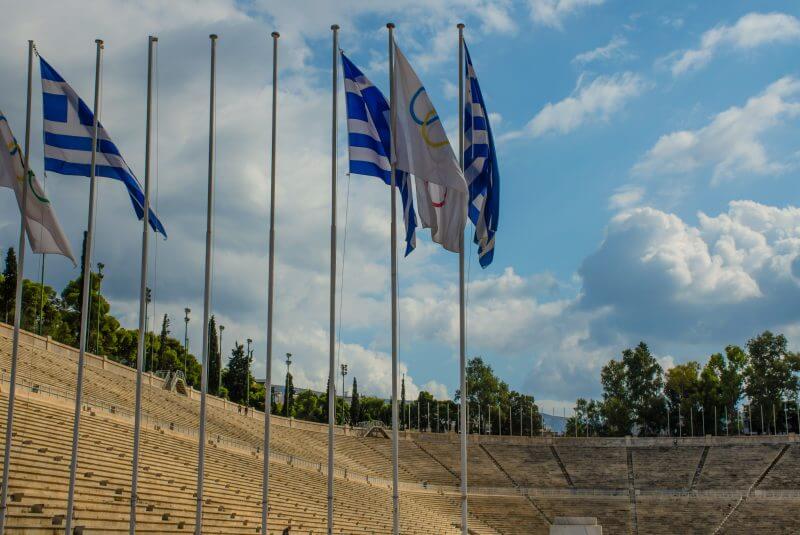
Why You Should Visit the Panathenaic Stadium
Whether you’re interested in history, architecture, or Greece’s antiquity, the Panathenaic Stadium will captivate you with its story.
It is a symbol of noble competition representing the Olympic Games’ ideals and values and a spectacular landmark.
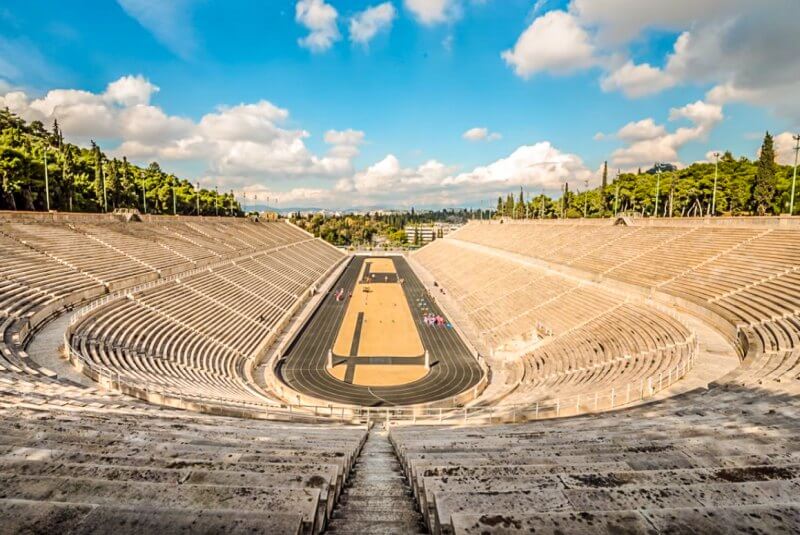
Things to Do in the Panathenaic Stadium
Listen to its story with an audio guide while exploring its breathtaking construction. The audio-guided tour is available in several languages and is provided on-site.
Make sure to explore every corner of the stadium and take as many – Instagram-able – photos as possible.
And it gets better! If you climb on the upper tier of stand 21 you will be able to capture the glorious Acropolis and the Parthenon , the Philopappos Hill, the unique Temple of Olympian Zeus , the Lycabettus Hill, Zappeion, and the National Gardens.
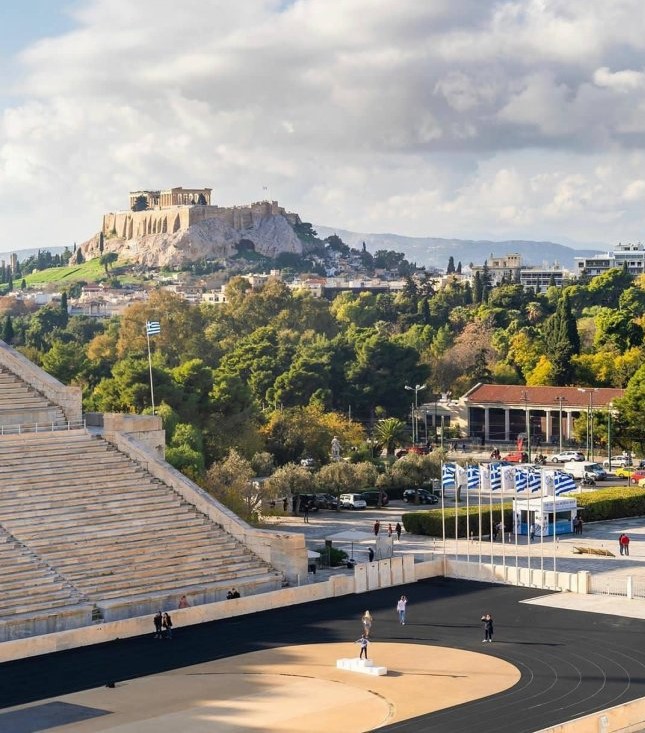
At the Atrium, two big screens present “Memories from Olympic Games: Posters and Torches from 1896 till today” and highlights of the Athens 2004 Olympic Games.
There is a multimedia touchscreen table that allows visitors to play and interact.
Now, if you ask yourself if you can run in the Panathenaic Stadium, the answer is yes. You are allowed to jog in the stadium from 07:30 am until 09:00 am. So, if you’re in the mood for a run put your comfortable (athletic) shoes on and trace the footsteps of historical athletes.

Visitors Information: Admission Ticket and Opening Hours
The Panathenaic Stadium is open to visitors from 08:00 – 19:00 from March to October and from 08:00 – 17:00 from November to February .
The general admission ticket is 10,00€ but there is also a reduced price of 5€ for students and visitors over 65 years old.
Visitors with disabilities and children under 6 years old are entitled to free admission .
Generally, the morning and evening hours are the best time to visit the Panathenaic Stadium.
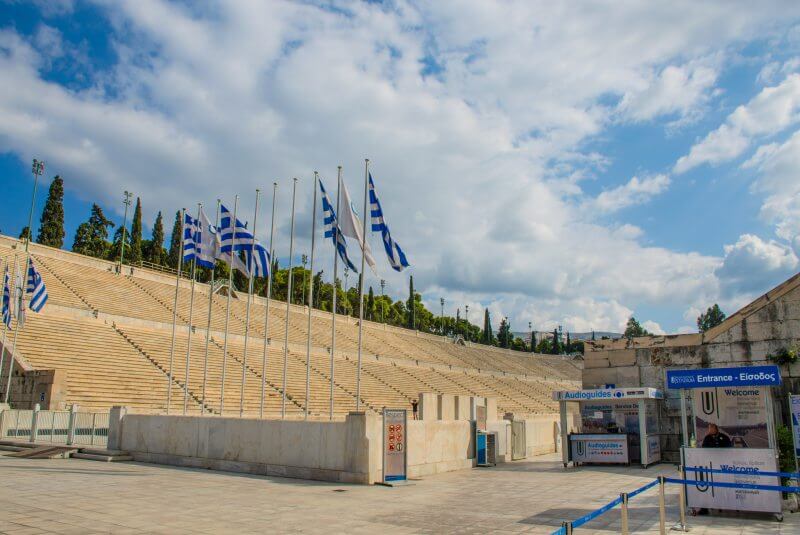
However, in the summer due to Athens’ high temperatures and because of the marble, it can be really hot even in the morning. Therefore it is recommended to visit it as early in the morning as possible or late in the evening.
There is also the official museum shop and a cafe on the premises which operates daily.
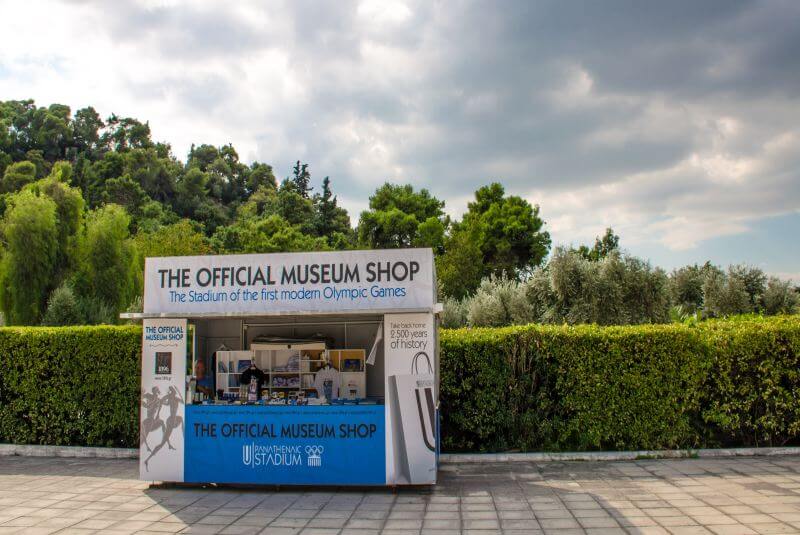
How to Get to the Panathenaic Stadium
Conveniently located in the heart of Athens city center, the Panathenaic Stadium is easily accessible by metro, bus, taxi, and on foot.
Situated around 1km from the metro stations of Syntagma , Acropolis, and Evangelismos it is quite easy to get here by metro lines 2 and 3 . At a close distance, there are also stations for trolleybuses’ lines 2, 4, 10, and 11 and normal buses’ line 209. Read here our detailed guide on how to get around Athens .
Of course, if you’re roaming in the historic city center, you can easily walk to Panathenaic Stadium. Don’t forget to visit our Athens Maps page and download for free the Map of Athens Center
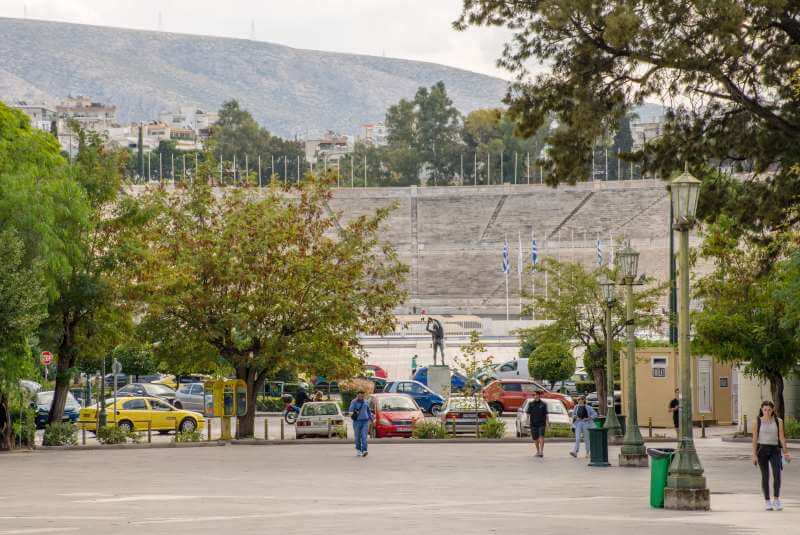
Where to Eat Near Panathenaic Stadium
Some of the best restaurants near Panathenaic Stadium:
Spondi is a high-end restaurant serving Mediterranean dishes with a modern twist. It features a vaulted stone dining room and a courtyard.
- Address : 5 Pyrronos, Pangrati, 116 36, Athens, Greece ( Map )
- Telephone : +30 210 756 4021
Featuring an authentic Italian menu, Cupola restaurant is the perfect place for spaghetti and pizza lovers. Its modern and cozy atmosphere is ideal for a relaxed dinner after a long day of sightseeing.
- Address : 13 Eforionos, Athens, Greece ( Map )
- Telephone : +30 21 1411 7444
Fish Point restaurant is only a three-minute walk from Panathenaic Stadium. Boasting a spectacular seafood menu and a great wine variety, the modern restaurant will introduce you to traditional Greek cuisine.
- Address : 8 Archimidous, Athens, Greece ( Map )
- Telephone : +30 210 756 5321
Where to Stay Near Panathenaic Stadium
Here are some of the best hotels to stay near Panathenaic Stadium:

A stone’s throw away from the Panathenaic Stadium, Pi Athens is surrounded by Athens’s historical landmarks. The elegant micro luxury boutique hotel features only 6 suites, and visitors will also find a garden, a big sitting area, and a roof garden.
See the Pi Athens hotel on Booking.com
Athens Green Apartments

Athens Green Apartments offers visitors luxury accommodation that feels like a home away from home. Its location in the serene neighborhood of Mets makes it the perfect spot for exploring Athens on foot.
See the Athens Green Apartments on Booking.com
Zappion Hotel

Zappion Hotel is located on a quiet pedestrian street close to the Panathenaic Stadium. Being recently renovated, the two-star hotel offers all the amenities for a comfortable and budget-friendly stay.
See the Zappion Hotel on Booking.com
The Panathenaic Stadium is one of the must-visit attractions of Athens.
Located in the heart of the city center, a visit to this famous monument will be the perfect opportunity to combine spending a day sightseeing outdoors with gaining invaluable insight into the city’s culture and the history of the Olympic Games.

Athens Uncovered: Must-Visit Places for Every Traveler
A Quick Reminder:
Remember that Athens By Locals is here to guide you with planning the perfect trip to Athens and help you every step along the way. If you didn’t found what you’re looking for, or need any recommendations about your trip to Athens, feel free to contact us and we will do our best to help you. Please be as more detailed as possible regarding your subject so as to help you better.
If you like what you read please scroll down at the end of this page and subscribe to Athens By Locals so next time to receive more articles like this straight forward to your email. Join us on Facebook for comments, photos, and other fun stuff. If you enjoy this article please share it with your friends on Facebook.
Athens By Locals
THIS ARTICLE WAS WRITTEN/EDITED BY A TEAM MEMBER OF ATHENS BY LOCALS
Related Posts
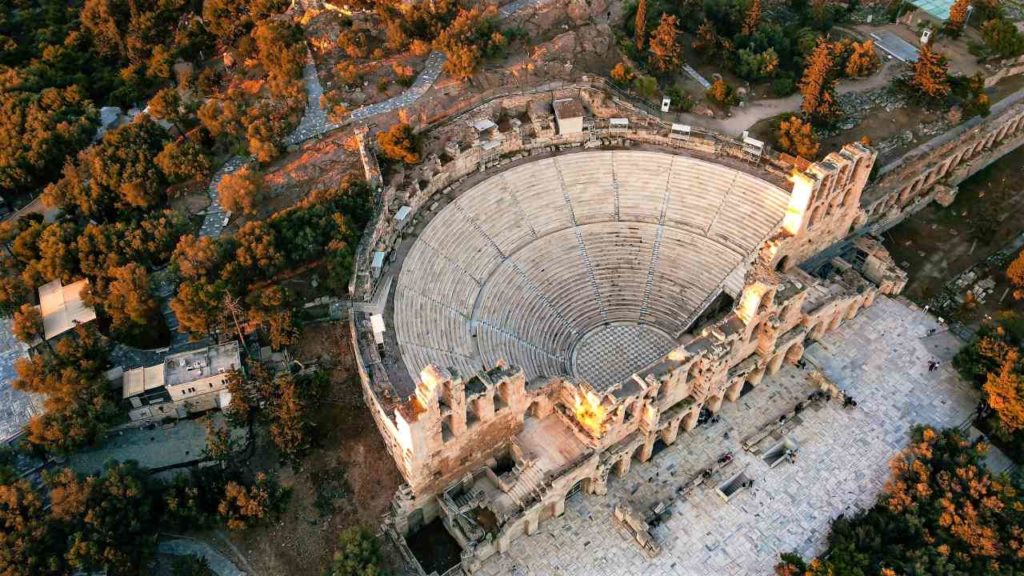
The World’s Most Majestic Stage: The Odeon of Herodes Atticus in Athens
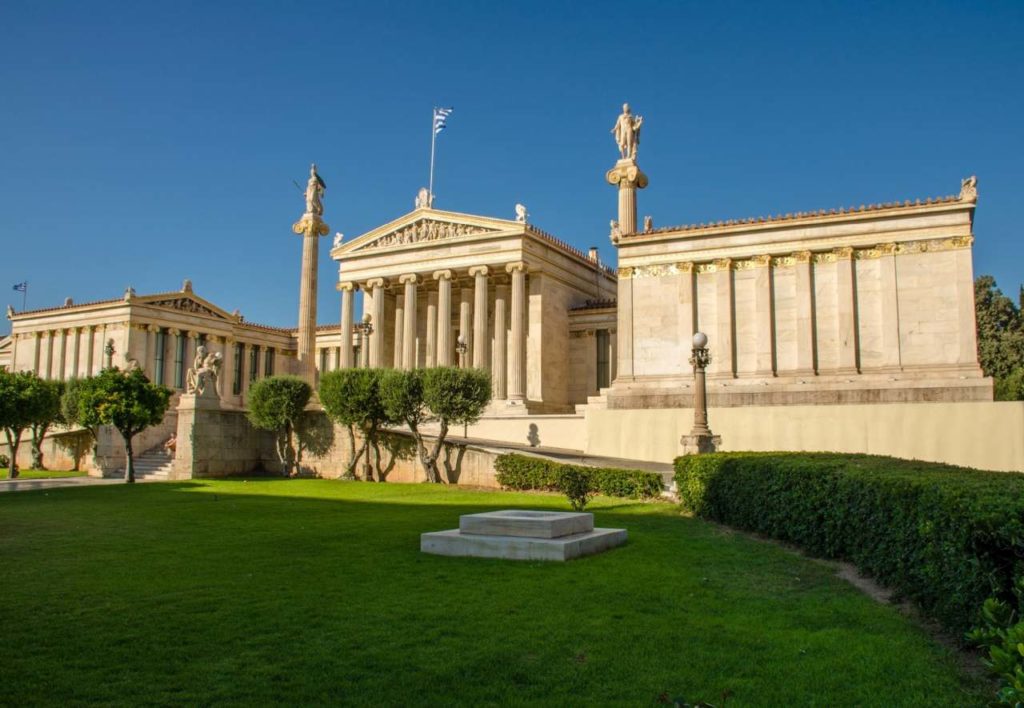
Athenian Trilogy: The University of Athens, the Academy, and the National Library

Stavros Niarchos Foundation Cultural Centre (SNFCC)
Copyright © 2024 Athens By Locals © All rights reserved. No part of this site may be reproduced without our written permission. Images owned by Athens By Locals. Image Banks or Companies promoted.

Real Greek Experiences
Greek Culture, Travel Information, Itineraries, Life in Greece
The Panathenaic Stadium In Athens Greece
People who like ancient monuments should definitely visit the Panathenaic Stadium in Athens. This massive stadium is one of the most important attractions in Athens. It’s used for various events, and is also open to visitors.
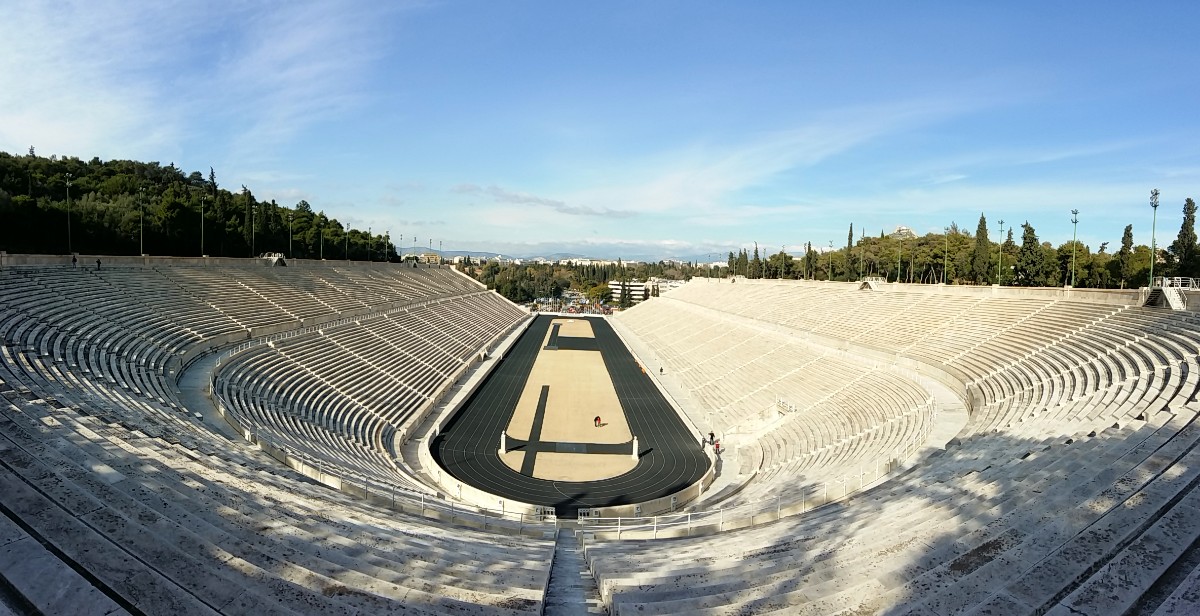
From ancient Athens to the first modern Olympic games
Close to the National Gardens of Athens and the temple of Zeus, you will find the amazing Panathenaic Stadium.
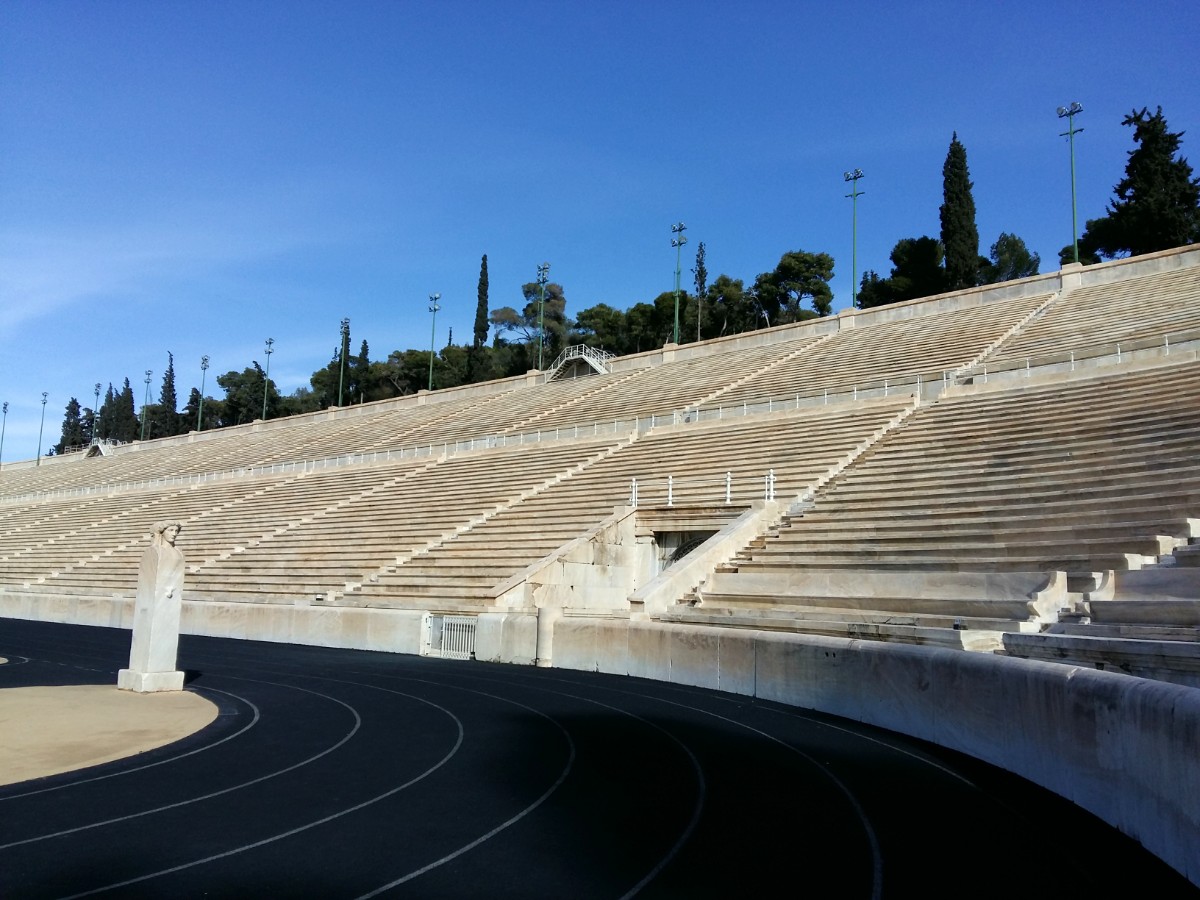
Built on the site of an earlier stadium, this impressive monument, which hosted the first modern Olympics in 1896, is a popular tourist attraction. It’s also an important landmark in the city of Athens.
Let’s find out a little more about the site’s long history, which spans a little over 2,300 years. We’ll first need to go back to the times of Ancient Greece.
The Great Panathenaia, a tribute to Goddess Athena
You will probably know that the ancient Greeks were keen on all sorts of cultural events. Several artistic and sporting events took place all around the Hellenic world.
There were Panhellenic Games, such as the Olympic Games , and regional Games. These major events were organized to honour the 12 Olympian Gods .
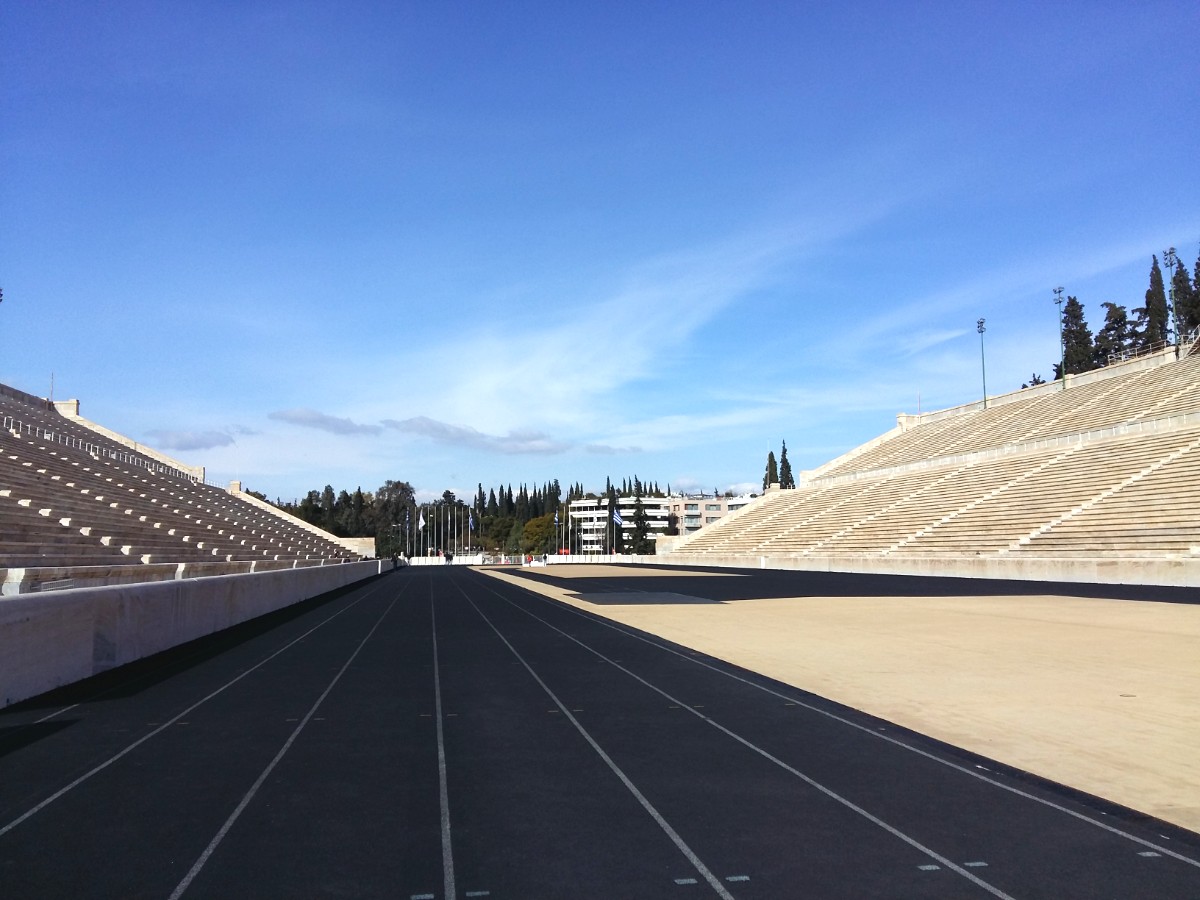
The most important cultural event in Athens were the Panathenaic Games, also known as the Panathenaia. They were dedicated to Athena, the patron goddess of the city .
It is not exactly clear when the first Panathenaia were held. Perhaps it was the mythical King, Theseus, who established the games. It is known for certain that the games were held in Athens as early as 566-565 BC.
There were two versions of the Panathenaia. The Great Panathenaia took place every four years, while the lesser Panathenaia happened on an annual basis.
Events during the Great Panathenaia Games
The Great Panathenaia lasted for nine days. They began with a ceremonial procession, starting from Kerameikos cemetery and ending on the Acropolis hill.
During this impressive ceremony, a supersized veil, woven by young Athenian maidens, was transported all around the city. Eventually, it was offered to the chryselephantine statue of Athena, which was inside the Parthenon.
The Games consisted of several types of contests and events, which took place in various venues. There were athletic events for different age groups, including equestrian games and boat races. In addition, there were musical and artistic competitions.
Only men and boys participated in the Panathenaia. The nude male athletes who won the competitions were awarded with several amphorae of olive oil. The award-winning ceremony was followed by celebrations.
Construction of the Panathenaic Stadium
In 338 BC, the orator Lycurgus was appointed to monitor the finances of Athens. It was his decision to build a new stadium, to host the Panathenaic Games.
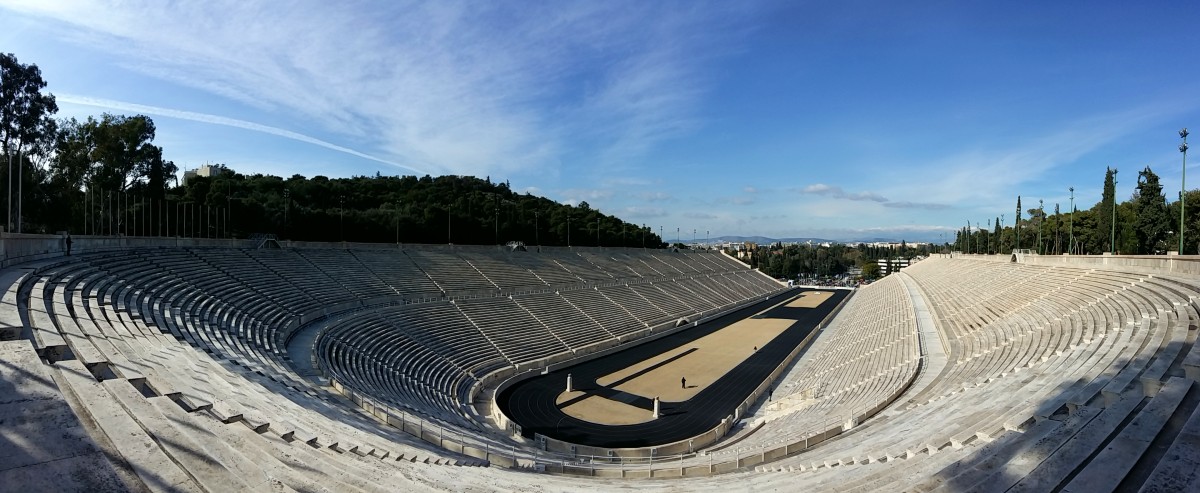
The ancient stadium was built between two hills, Ardettos and Agra, on the banks of Ilissos River. It is likely that a lot of land was removed, in order for the surface to be flat enough.
Originally, the stadium had a rectangular shape, and was mostly made out of limestone, with wooden seats. The first Great Panathenaia were held in the new stadium in 330/29 BC.

The Panathenaic Stadium during the Roman times
During the Roman period, under the rule of Roman emperor Hadrian, the stadium was restored and reconstructed. Herodes of Atticus, the affluent orator who also commissioned the Herodion theatre, covered a lot of the expenses.
White Pentelic marble was used liberally to reconstruct the stadium, which acquired a new horseshoe shape. It is estimated that the new stadium could fit up to 50,000 spectators.
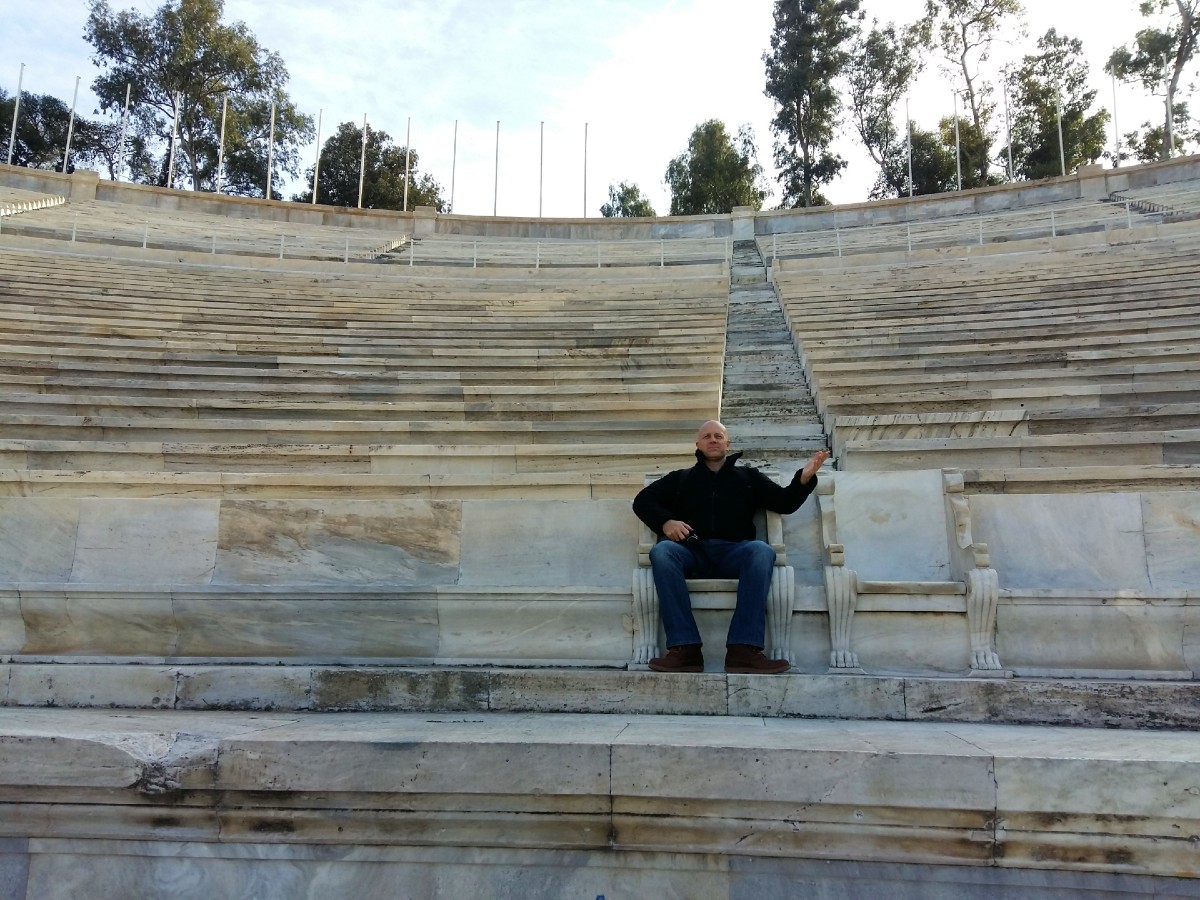
In subsequent years, the stadium hosted gladiatorial fights and other similar events that were popular all around the Roman Empire.
Decline of the ancient monument
In the centuries that followed, Christianity took over the ancient world. Eventually, these “barbaric” celebrations were banned and ceased to exist.
Like all other ancient monuments, the Panathenaic Stadium lost its former glory. The beautiful marble was gradually detached and used in the construction of other Athenian buildings.
Archaeological excavation around the Panathenaic Stadium began in the 19th century. By that time, all the white marble was gone, and the stadium had fallen into decline.
Zappas Olympics
So how did the Panathenaic Stadium come into the spotlight again?
A few decades after the Greek Revolution in 1821 , a number of people were interested in the revival of the Olympic Games.
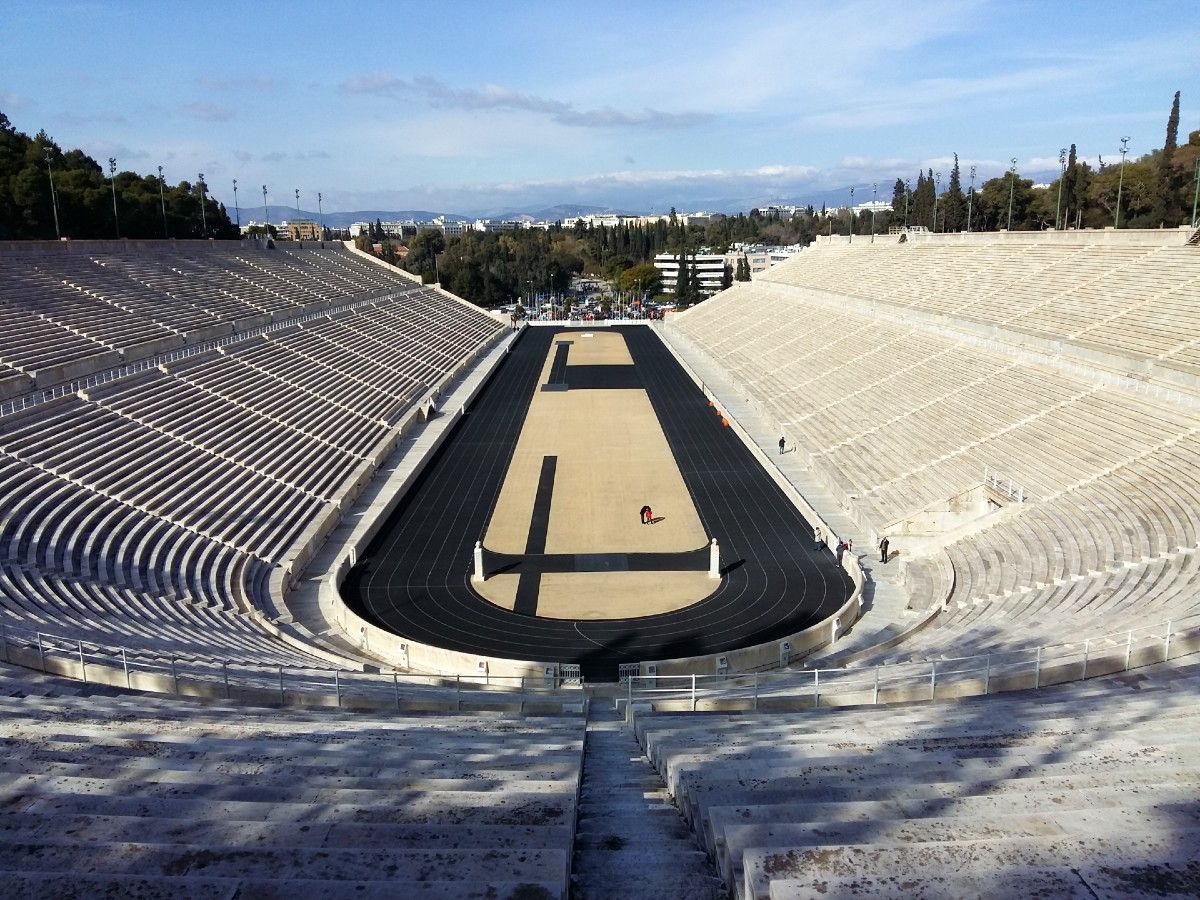
One of them was the Greek benefactor Vangelis Zappas. He organized the first so-called Olympia Games, or Zappas Olympics, in 1859. They were held in Omonia square, and were meant to be the first of a series of Games.
Unfortunately, Zappas died in 1865, leaving a large sum to be used for subsequent Games. After his passing, a committee was appointed to continue his work. This included the construction of Zappeion Megaron, a beautiful neoclassical building designed by the Danish architect Theophil Hansen.
In 1870, the second Olympia was organized in the Panathenaic Stadium, which had been partly refurbished, following Zappas’ wishes.
Revival of the Olympic Games
Zappas was not the only person who aspired to reproduce the original sports event. In the late 19th century, there was a lot of interest in reviving the concept of the ancient Olympic Games.
In 1894, a French educator and historian, Baron Pierre de Coubertin, organized an International Olympic Conference in Paris, to discuss this idea.

During the conference, the delegates decided to organize the first modern Olympic Games in Athens, in 1896. As the first Olympics had started in Ancient Olympia , in the Peloponnese, it made sense for Greece to be the host country.
For this purpose, an Hellenic Olympic Committee was founded. Its first president was the crown prince Constantine.
The first modern Olympics
There was one minor issue. Even with Zappas’ previous donations, there was no Olympic stadium at the time, and the country’s finances didn’t exactly allow for an expensive construction.
The reconstruction of the stadium was made possible due to another famous Greek benefactor, George Averoff. After being approached by princ Constantine, the successful businessman covered the enormous expense of the stadium’s reconstruction.
Just like in ancient times, white Pentelic marble was used again. A new name was given to the stadium, Kallimarmaron , indicating the beauty of the marbles.
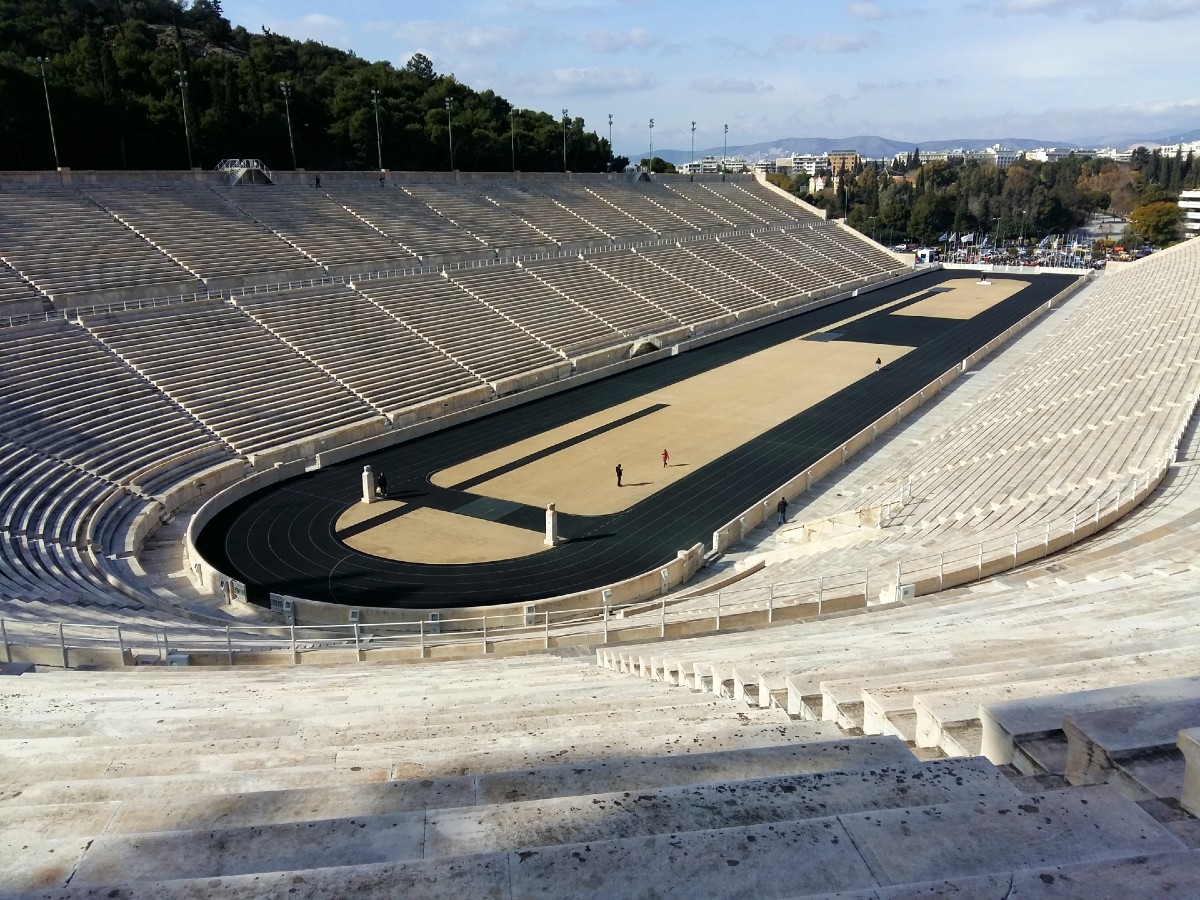
The stadium was restored according to its shape during the Roman Era. Its new capacity was over 60,000 people, and it was ready to welcome the first modern Olympic Games.
Spyros Louis wins the first Marathon
The first modern Olympic Games were held in the stadium in March / April 1896. There appears to be no consensus over how many athletes participated, or how many countries were represented. The majority of athletes were of Greek origin.
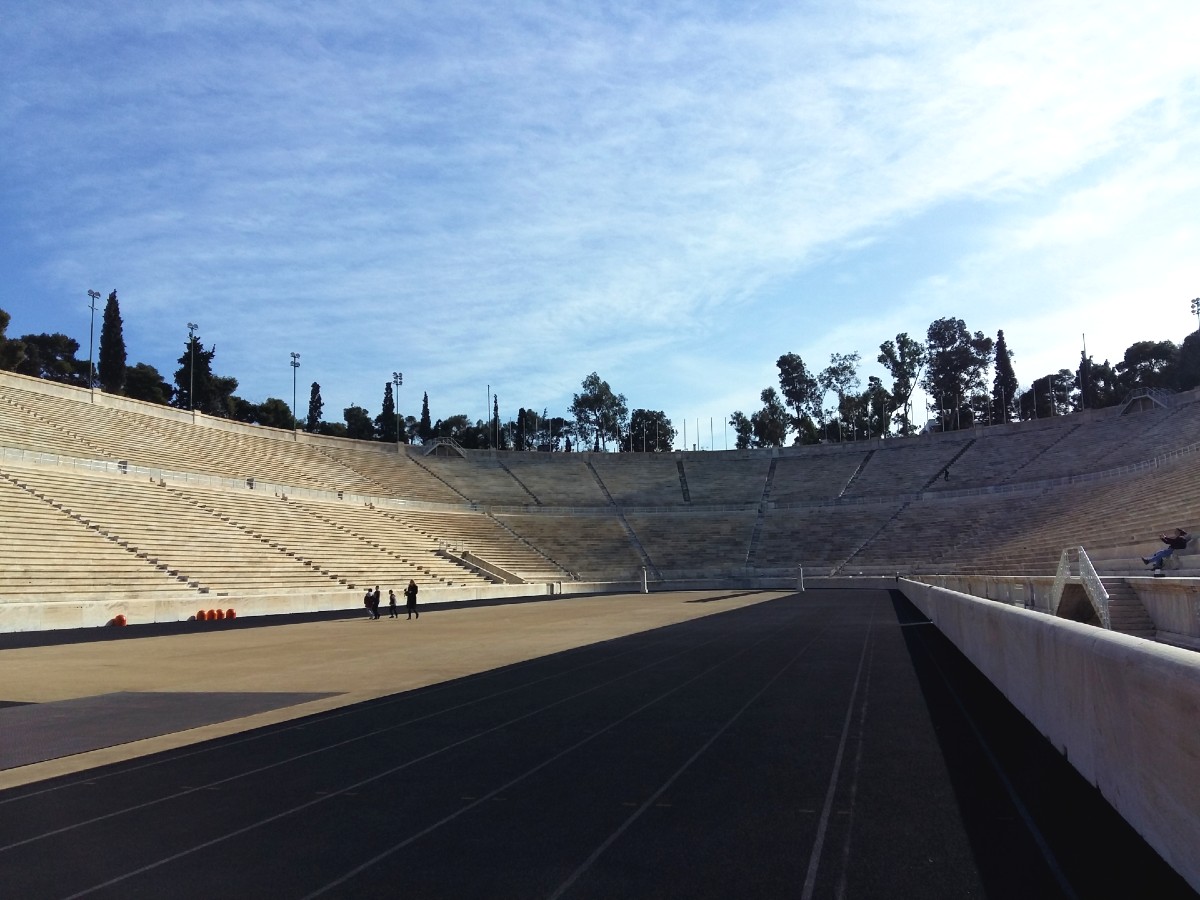
The highlight of the event was when Spyros Louis, representing Greece, won the Olympic Marathon race. The audience went wild, and apparently carried Louis all the way up to the king’s seat.
Since then, the stadium has been used for various celebrations and opening or closing ceremonies of athletic events. Occasionally, concerts and other cultural events take place here.
Sports activities and ceremonies
The annual Athens Classic Marathon , happening in our capital every November, ends at the Panathenaic Stadium. This 42.2 km route begins in the ancient Marathon, and ends right inside the Kallimarmaron.
Every four years, before the official Olympic Games begin, the Olympic Flame handover ceremony takes place. This symbolic opening ceremony begins in Ancient Olympia, where a prayer to Apollo, the God of Light, is read out.
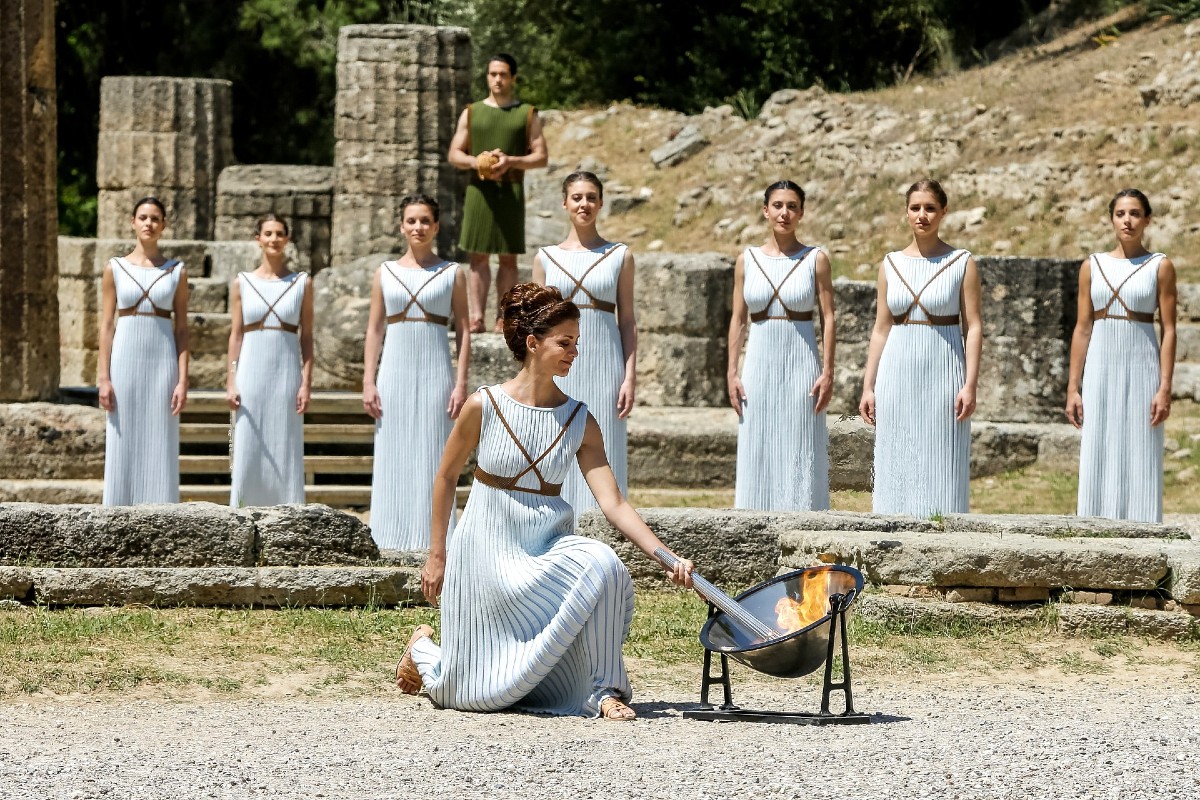
The flame leaves Olympia and passes by several Greek cities on its way to Athens, where it stops at the Panathenaic Stadium. Afterwards, it sets off to the next Olympic city.
Fun facts about the Panathenaic Stadium
There are many fun facts related to this amazing stadium!
- It is the only stadium in the world where three Olympic Games have taken place three times – in 1896, 1906 and 2004
- It was the first ancient stadium to be used in modern times
- The Kallimarmaron is the only stadium in the world made out of Pentelic marble
- It was home to the biggest basketball game audience ever, in 1968. The Greek team called AEK defeated Slavia Praha (89-82). An estimated 80,000 people were inside the stadium, with another 40,000 standing right outside!
Visiting the Panathenaic Stadium
I’ll be honest – I hadn’t appreciated how impressive the Panathenaic Stadium is, until I visited and walked around with my partner on a winter day. We were there with low temperature, but some very welcome sunlight.

The stadium is really huge, and as we were pretty much the only people there it seemed even bigger. When we walked up the top, close to Archimidous street, the view was really awesome.
We even discovered a secret entrance up there. Apparently, early morning joggers use this entrance to enter the stadium – yes, you can actually go jogging in the Stadium if you want!
EDIT: When I visited in November 2021, this entrance seemed to be closed.
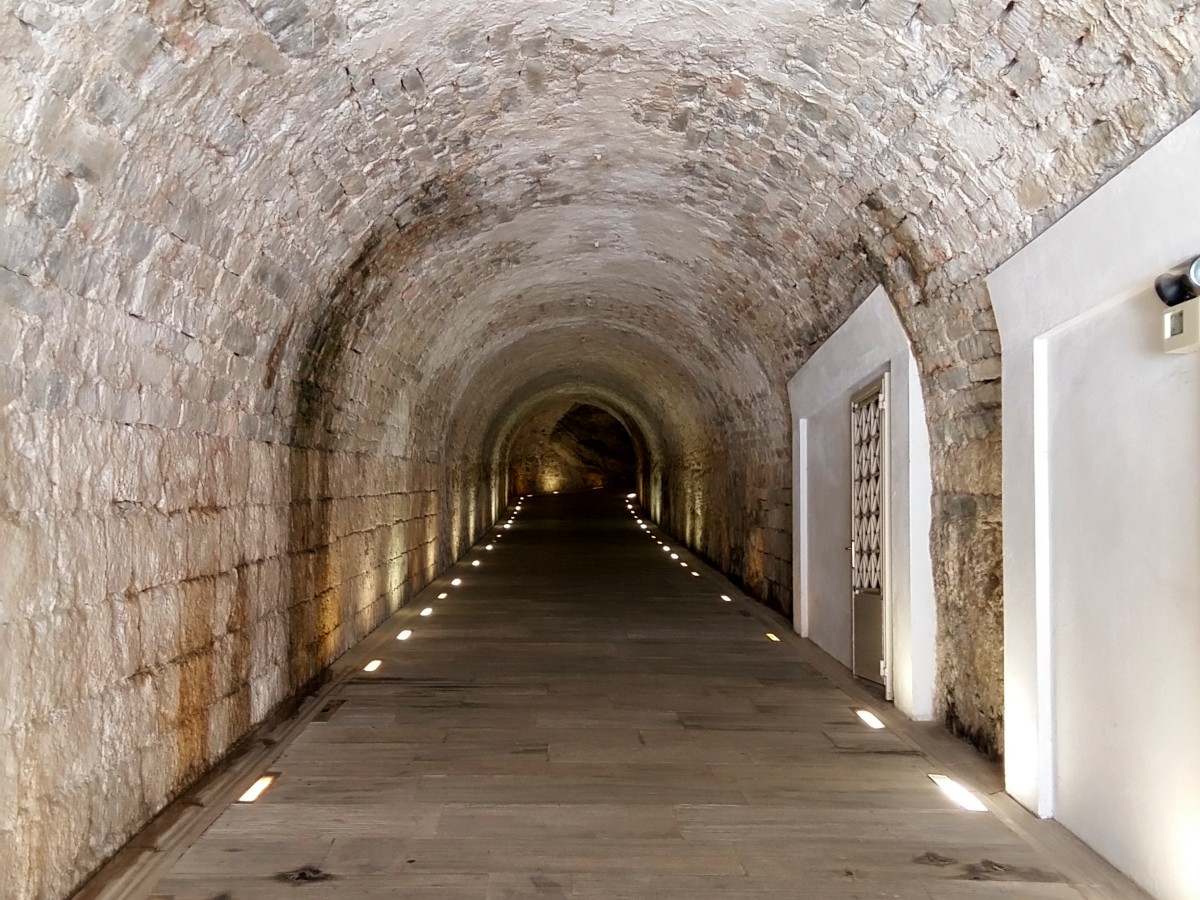
Go through the vaulted passage, and you will get to a small museum. There is a cool exhibition with memorabilia from previous Olympics, ceremonies and other events. I loved this poster from the 1968 Mexico City Games!

All in all, we spent a couple of hours in the stadium and museum, but we took our time. You can probably visit in an hour if you are in a rush.
There is a small canteen outside the stadium, where you can get water and snacks. There are also toilets right outside the stadium, which cost 50 cents to use. If you don’t have a coin, you can get something at the canteen and get some cash back.
How to visit the Panathenaic Stadium
The most pleasant way to get to the stadium is to stroll through the National Gardens. Then you can cross the avenue and walk over to the Stadium.
If you are staying close to the Acropolis or the temple of Zeus, the stadium is a 10-15 minute walk.

Opening hours in summer (March – October) are 8 am to 7 pm, while in winter the stadium closes at 5 pm. In summer, it’s best to visit outside the afternoon hours, as the marbles are reflecting the strong sunlight!
General admission tickets cost 5 euro, students and seniors pay 2.50 euro and children under 6 enjoy free entrance. You can get a free audio guide with your ticket, explaining more about the stadium.
Entrance is free on 18 April, International Day for Monuments and Sites.
Note that the Panathenaic Stadium is not included in the combined ticket to the ancient sites in Athens .
And if you are looking for an original Panathenaic stadium tour, you can’t go wrong with this one !!! It’s ideal for everyone, including families.
Frequently asked questions about the Panathenaic Stadium in Athens
Here are some questions often asked by visitors:
What was the Panathenaic Stadium used for?
In ancient Greece, the Panathenaic Stadium was used to host the Great Panathenaia Games, which were a tribute to goddess Athena.
What were stadiums used for in ancient Greece?
Ancient Greek stadiums were used to host athletic games and cultural events, which were organized as a tribute to the 12 Olympian Gods.
Is the Panathenaic Stadium still used?
Yes. Since the first modern Olympics in 1896, the famous Greek stadium has hosted several athletic competitions and big concerts. You can visit the stadium along with the small Olympic Games museum on a daily basis.
How much does it cost to go to the Panathenaic Stadium?
The entrance fee to the Panathenaic Stadium costs 5 euro for adults and 2.5 euro for students and children aged 6 – 18. Children under 6 years old visit for free.
Can you run in the Panathenaic Stadium?
If you are so inclined, you can go for a run in the Panathenaic stadium. Running inside an ancient monument with such a rich history will be an unforgettable experience!
More Athens travel guides
If you enjoyed this article, you might also be interested in these other travel guides to Athens:
- 30 best things to do in Athens
- 3 Day Itinerary for Athens
- 2 Day Itinerary for Athens
- Best Museums in Athens
- How to take the Athens metro
- How to take the Athens airport metro

Hi! I’m Vanessa from Athens, and I love exploring my city’s monuments and ancient sites. If you are interested in the history of the Olympic Games, the Panathenaic Stadium is a must-see attraction in Athens. If you have visited, please write a comment below and let me know what you thought!
2 thoughts on “The Panathenaic Stadium In Athens Greece”
Hello Vanessa Thank you for your weekly email, I really look forward to it. Such a lot to read about my favourite subject! Really interested in the Panathenaic article. Ran my first marathon there in 1994 and entering the stadium at the end really brought a lump to the throat. Ran it again in 1996, 100th anniversary, and there were engaged couples running who invited other runners to attend their weddings after the race. Also memorable, the drink stations ran out of water and we had to buy more in local shops. Love the Greeks! Thanks again, keep it up
Oh wow some very cool stories!!! Well done for running the Marathon… I’d love to see some photos if you have any!!
Leave a Comment Cancel reply
Save my name, email, and website in this browser for the next time I comment.

- Top Attractions
Tourist Attractions
Panathenaic stadium.
The Panathenaic Stadium was made entirely of white marble in 144 AD. In the nineteenth century, it was dug up and rebuilt. It hosted the first contemporary Olympics in 1896.
A long-lasting stadium
The Panathenaic Stadium is one of the most visited attractions in Athens. It is currently a multi-function stadium that was initially built as a race track in 330 BC for the Panathenaic Games.
Dedicated to Athena , goddess of wisdom and war, the Panathenaic Games was a popular event that took place once every four years, in which the inhabitants of Athens organized a religious festival with a sports competition and other cultural events . The Athenians also celebrated the Lesser Panathenaic festival once a year which were shorter and included less games and ceremonies. The Games counted with equestrian, athletics, combat competitions , as well as chariot racing and music and dance contests.
In 144 AD, the Roman senator Herodes Atticus commissioned the stadium to be completely rebuilt in white marble.
During many centuries the Panathenaic Stadium was practically abandoned , until the remains of the venue were dug out during the nineteenth century and restored to host the Olympic Games in 1896.
The arena was completely rebuilt according to its original plan and now houses various competitions and is open to the public.
A legendary stadium
The Panathenaic Stadium, also known as Kallimarmaro , is one of the most popular visits in the Greek capital. Visitors can walk along the marble stands where the Athenians once cheered the sportsmen on centuries ago. The running track is also open, and tourists can get a selfie up on the podium next to the Olympic rings .
The entrance fee includes an English audio guide , which gives interesting information about the legendary landmark.
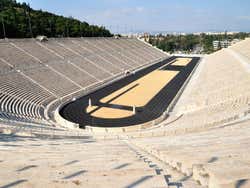
Leoforos Vasileos Konstantinou. Exit on the southeast corner of the National Garden.
March - October: every day between 8am and 7pm. November - February: every day between 8am and 5pm.
Adults: € 10 ( US$ 11.10) Students and seniors above 65: € 5 ( US$ 5.60) Children under 6: Free
Bus : 2, 4, 10, 11, 90, 209 and 550. Metro : Acropolis , line 2; Syntagma , lines 2 and 3; Evangelismos , line 3.
Nearby places
National Garden in Athens (670 m) Temple of Olympian Zeus (709 m) Byzantine and Christian Museum (829 m) Museum of Cycladic Art (832 m) Benaki Museum (863 m)
You may also be interested in

Situated in the center of Greece, Meteora is a large rock home to breathtaking monasteries. It is one of the most special places in Greece.
If you are interested in Classical antiquity, Athens is an open-air museum packed with archaeological sites. These are the main tourist attractions to visit in Athens.
Our head office
0800 088 6002, [email protected], client log in, reset password, agent log in.

Exploring Athens Hellenic Heritage: The Panathenaic Stadium, Temple of Olympian Zeus, and Zappeion
When planning your Greece tours , one destination that should undoubtedly be on your list is the Panathenaic Stadium in Athens . This iconic venue played a pivotal role in the 1896 Olympic Games, also known as the first modern Olympic Games.
In this article, we will delve into the historical significance of the Panathenaic Stadium and its connection to the Olympic Games, providing you with a comprehensive understanding of its unique place in the world of sports and history.
From the origins of the modern Olympic Games to the enduring legacy of this marble marvel, our exploration of the Panathenaic Stadium promises to be an informative and engaging journey through time and sport.
What is the history of the Panathenaic Stadium, and how did it become an iconic attraction?
The Panathenaic Stadium, often referred to as Kallimarmaro, holds a rich historical significance and has become an iconic attraction for tourists. This stadium is not just a relic from ancient times; it played a vital role in the revival of the Olympic Games in the modern era.
Ancient Origins : The history of the Panathenaic Stadium dates back to ancient Greece, where it was originally built in the 4th century BC to host the Panathenaic Games, a festival dedicated to the goddess Athena.
Marble Transformation : What makes this stadium truly unique is that it was entirely rebuilt in white marble by the Roman senator Herodes Atticus in 144 AD. This renovation gave the stadium its distinctive marble grandeur.
Ancient Athletics : In antiquity, the stadium hosted various athletic events, such as foot races, long jumps, and combat sports, attracting athletes and spectators from across the ancient world.
Revival in 1896 : The Panathenaic Stadium gained worldwide fame during the first modern Olympic Games held in 1896. It was the venue for the opening and closing ceremonies, as well as the location of the archery and the marathon events. The revival of the Olympic Games in this ancient arena marked a pivotal moment in the history of sports.
Olympic Symbolism : The use of the Panathenaic Stadium for the 1896 Olympics signified a connection to Greece's historical heritage and emphasized the revival of the ancient Olympic spirit, which continues to be a central theme in modern Olympic Games.
Modern Renovations : Over the years, the stadium has undergone various restorations to preserve its historic charm and structural integrity, making it a lasting symbol of Greece's historical and cultural legacy.
Today, the Panathenaic Stadium stands as an enduring testament to Greece's contributions to the world of sports, offering tourists a chance to walk in the footsteps of ancient and modern athletes, immersing themselves in the rich history of the Olympic Games. Its iconic status is not only due to its architectural beauty but also its profound role in the modern revival of the Olympics.
Where is the Panathenaic Stadium located in Athens, and what makes its location significant?
The Panathenaic Stadium is a historic landmark located in Athens, Greece, and its location is significant for several reasons:
Central Athens : The stadium is situated in the heart of Athens, the capital city of Greece. It is precisely located in the Pangrati district, making it easily accessible to both local residents and tourists.
Historical Center : Athens is a city steeped in history and culture, and the Panathenaic Stadium is no exception. It is positioned in close proximity to numerous other historical and cultural sites, such as the Acropolis, the National Gardens, and the Temple of Olympian Zeus, making it an integral part of the city's historical center.
Surrounded by Greenery : The stadium is bordered by the lush greenery of the National Gardens and Ardittos Hill, providing a picturesque and serene backdrop. This combination of historical architecture and natural beauty creates a unique atmosphere for visitors.
Athenian Riviera : The stadium is not far from the coast, giving tourists the opportunity to combine their visit with a trip to the beautiful Athenian Riviera, offering beaches, restaurants, and recreational activities.
Accessibility : Due to its central location, the Panathenaic Stadium is easily reached by various means of transportation, including public buses, trams, and the Athens Metro system. This accessibility makes it a convenient stop for anyone exploring the city.
Cultural Significance : The stadium's location within Athens, a city known as the birthplace of democracy and the cradle of Western civilization, adds to its cultural and historical significance. It serves as a tangible link to the city's rich heritage.
The Panathenaic Stadium's location at the heart of Athens not only enhances its accessibility but also places it within a broader context of historical and cultural significance. Visitors can explore both the stadium and the surrounding historical landmarks, creating a comprehensive experience of Athens' rich heritage.
How can you get to the Panathenaic Stadium?
Getting to the Panathenaic Stadium is relatively easy, thanks to its central location in Athens. Here are several methods of transportation to reach the stadium:
Public Transportation : Athens has an extensive public transportation system, which includes buses, trams, and the Athens Metro. You can take the metro Line 2 (the red line) and get off at the "Evangelismos" station, which is the nearest metro station to the stadium. From there, it's a short walk to the stadium.
Taxis : Taxis are readily available in Athens, and you can simply hail one or use a taxi-hailing app to get to the stadium. Make sure the taxi driver uses the meter for a fair fare.
Walking : If you're staying in the city center, it's possible to walk to the Panathenaic Stadium. The stadium is located about a 20-25 minute walk from Syntagma Square, making it a pleasant stroll through the heart of Athens.
Bicycles : Athens has a bike-sharing system, which can be a fun and eco-friendly way to reach the stadium. There are bike stations throughout the city, including near the stadium.
Hop-On Hop-Off Bus Tours : Athens offers hop-on hop-off bus tours that typically include the Panathenaic Stadium as one of their stops. This can be a convenient way to explore the city and visit the stadium.
Guided Tours : Many guided tours of Athens, including those focused on historical and cultural sites, include the Panathenaic Stadium as part of their itinerary. You can join one of these tours to ensure a seamless visit.
Private Transportation : If you prefer a more personalized experience, you can arrange for a private driver or transportation service to take you to the stadium.
The Panathenaic Stadium's central location and the well-developed transportation infrastructure in Athens make it easily accessible for visitors, allowing you to explore this iconic site as part of your Greece tour with convenience.
When is the best time to visit the Panathenaic Stadium for Greece tours to experience its historical and cultural significance fully?
The best time to visit the Panathenaic Stadium for Greece tours to experience its historical and cultural significance fully depends on your preferences and interests. However, here are a few considerations to help you plan your visit:
Spring and Early Summer (April to June) : This period is often regarded as one of the best times to visit the Panathenaic Stadium. The weather in Athens during these months is mild and pleasant, making it comfortable for outdoor exploration. The lush greenery of the surrounding gardens and the clear skies create a picturesque setting for your visit.
Avoid Peak Summer (July and August) : While summer in Athens can be delightful, it's also the peak tourist season. During July and August, the city can get very hot, with temperatures soaring, and attractions, including the Panathenaic Stadium, can get crowded. If you prefer a more peaceful visit, it's best to avoid these months.
Fall (September to November) : The fall season offers pleasant weather, and the crowds start to thin out. This is an excellent time to explore the stadium and the city without the hustle and bustle of the summer months.
Winter (December to February) : Athens has a mild winter compared to many other European cities. If you don't mind cooler temperatures, visiting during the winter can have its charm. You'll find fewer tourists, shorter lines, and the opportunity to explore the stadium's history in a quieter setting.
Special Events : Keep an eye on the stadium's schedule for special events or exhibitions. Timing your visit to coincide with events related to the Olympics or ancient Greek history can provide a deeper insight into the stadium's significance.
Ultimately, the best time to visit the Panathenaic Stadium depends on your personal preferences regarding weather, crowd levels, and your interest in experiencing Athens and its history. Regardless of when you choose to visit, the stadium's historical and cultural significance will be a timeless and enriching experience.
Who should visit the Panathenaic Stadium?
The Panathenaic Stadium is a historic and culturally significant site in Athens, and it is a must-visit for a diverse range of individuals:
History Enthusiasts : Those with an interest in history, especially ancient Greek and Olympic history, will find the Panathenaic Stadium a captivating destination. It offers insights into the historical evolution of sports and the Olympic Games.
Olympic Enthusiasts : For sports enthusiasts and Olympic Games fans, a visit to the Panathenaic Stadium is a pilgrimage. It's the place where the modern Olympics were reborn in 1896, and it is an iconic symbol of the Olympic movement.
Cultural Travelers : Travelers interested in Greek culture and heritage should not miss the Panathenaic Stadium. It's a prime example of Greek architecture and history, showcasing the country's cultural significance.
Tourists Exploring Athens : Any tourist exploring Athens, whether for a day or a longer stay, should consider a visit to the Panathenaic Stadium. Its central location makes it convenient to include in your itinerary, and it's a historical gem in the city.
Educational Groups : School groups, history classes, and educational tours often include the stadium in their itineraries to provide students with a tangible connection to the history of the Olympic Games and ancient Greece.
Families : Families traveling with children can also enjoy a visit to the stadium. It's a unique and interactive way to introduce kids to ancient history and sports.
Architectural Enthusiasts : The stadium's stunning white marble architecture is a visual delight, making it a worthwhile destination for those interested in architectural marvels.
Sightseers : Travelers who enjoy sightseeing and exploring iconic landmarks should visit the stadium to take in the grandeur of its design and its historical significance.
Photographers : The Panathenaic Stadium offers excellent photo opportunities, from its impressive exterior to the views of Athens from the stadium's seating area.
In essence, the Panathenaic Stadium caters to a wide range of interests, making it an inclusive destination for anyone looking to enrich their understanding of Greek history, sports, and culture while enjoying a memorable experience in Athens.
Why should you include the Panathenaic Stadium on your list of Greece tours, and what unique features make it a must-see destination?
Including the Panathenaic Stadium on your list of Greece tours is a compelling choice for several reasons, and it offers unique features that make it a must-see destination:
Historical Significance : The Panathenaic Stadium is a living testament to the ancient origins of the Olympic Games. Its history dates back to antiquity, and it was rebuilt in marble during the Roman period. It's the only stadium in the world made entirely of marble.
Olympic Birthplace : This stadium played a central role in the revival of the modern Olympic Games in 1896. It was the site of the first modern Olympics' opening and closing ceremonies, highlighting its pivotal role in the global Olympic movement.
Architectural Grandeur : The stadium's stunning white marble architecture is a visual marvel. Its horseshoe shape, seating capacity, and well-preserved structure are a sight to behold, making it a unique architectural gem in Athens.
Interactive Experience : Visitors have the opportunity to walk on the same track that ancient and modern athletes used for competition. This hands-on experience brings the history of the stadium to life.
Picturesque Setting : The stadium is surrounded by lush greenery, with the National Gardens and Ardittos Hill nearby. It offers a peaceful and picturesque setting for both history enthusiasts and those looking for a serene escape in the heart of Athens.
Central Location : Its central location in Athens makes it easily accessible and an excellent addition to your Greece tour itinerary. You can conveniently combine a visit to the stadium with other historical and cultural sites in the city.
Educational Value : The Panathenaic Stadium offers an educational experience, providing insights into ancient Greek sports, Olympic history, and the architectural achievements of the time.
Cultural Connection : It allows tourists to connect with Greek culture, heritage, and their contributions to the world of sports and athletics.
Olympic Museum : The stadium also houses an Olympic Museum that showcases a collection of artifacts, memorabilia, and historical information related to the Olympic Games, offering a deeper understanding of this global sporting event.
Event Venue : Occasionally, the stadium hosts various events, making it a versatile space that is not limited to its historical significance.
How much does it cost to visit the Panathenaic Stadium, and are there any admission fees or tour expenses to consider?
The cost of visiting the Panathenaic Stadium in Athens varies depending on the type of experience you desire:
Basic Admission : If you simply want to enter the stadium grounds, enjoy the exterior, and take photos, there is a basic admission fee.The cost was around €5 for adults and reduced rates for students, children, and seniors. Please note that prices may have changed, and it's advisable to check the latest rates before your visit.
Guided Tours : For a more immersive experience, guided tours are available. These tours provide in-depth insights into the history and significance of the stadium. Prices for guided tours vary but are generally more expensive than basic admission. Guided tours can be an excellent choice if you want to learn about the stadium's history and architectural details.
Combined Tickets : Some attractions in Athens, such as the Acropolis and its associated sites, offer combined tickets that include the Panathenaic Stadium along with other historical sites. This can be a cost-effective way to explore multiple attractions in the city.
Special Exhibitions : Occasionally, the stadium may host special exhibitions or events that could have separate admission fees. If there is a specific exhibition you want to see, make sure to check for any additional costs.
Children and Students : Reduced admission fees are often available for children, students, and seniors. Valid identification or student cards may be required to qualify for these discounts.
It's important to check the official website or contact the stadium directly to verify the current admission fees and any additional expenses. Additionally, some tour packages, like city passes or guided tour combinations, may offer bundled options that include the Panathenaic Stadium along with other attractions, which can be a cost-effective way to explore Athens' historical sites.
Is there a dress code for visiting the Panathenaic Stadium, and what attire is recommended for a comfortable and respectful tour?
There isn't a strict dress code for visiting the Panathenaic Stadium, but it's advisable to wear attire that is both comfortable and respectful of the historical and cultural significance of the site. Here are some recommendations for what to wear during your visit:
Comfortable Clothing : Opt for comfortable clothing, such as lightweight and breathable fabrics, especially if you plan to explore the stadium in warm weather. Comfortable shoes, preferably walking or athletic shoes, are recommended, as you'll be doing some walking.
Modest Dress : While there is no formal dress code, it's considerate to dress modestly out of respect for the historical and cultural importance of the site. Avoid clothing that is too revealing, such as short shorts, low-cut tops, or swimwear.
Sun Protection : Athens can get quite hot during the summer months, so it's a good idea to wear a hat or sunglasses for sun protection. Don't forget to apply sunscreen, especially if you plan to spend time in the uncovered areas of the stadium.
Layered Clothing : If you're visiting in the shoulder seasons or cooler months, consider wearing layers, so you can adjust your clothing as needed to stay comfortable throughout the day.
Rain Gear : Athens can experience occasional rain, so it's a good idea to have a lightweight rain jacket or umbrella on hand if you're visiting during the rainy season.
Respectful Attire for Special Events : If you plan to attend special events, exhibitions, or ceremonies at the stadium, you may want to dress slightly more formally, but this depends on the specific event. In such cases, business casual attire or attire suitable for cultural events is appropriate.
Photography Attire : If you're a photography enthusiast, wear attire with plenty of pockets to store your camera, lenses, and other equipment. Additionally, consider wearing neutral or unobtrusive colors to blend into the background and avoid reflecting unwanted glare.
Remember that, while comfort is important, dressing modestly and respectfully is a way to show appreciation for the historical and cultural significance of the Panathenaic Stadium. By adhering to these guidelines, you can fully enjoy your visit while acknowledging the importance of this iconic landmark.
What are the opening hours of the Panathenaic Stadium, ensuring you plan your visit during suitable times?
The opening hours for the Panathenaic Stadium are typically as follows:
Summer (April to October) :
- Monday to Sunday: 8:00 AM to 7:00 PM
Winter (November to March) :
- Monday to Sunday: 8:00 AM to 5:00 PM
Please note that these hours are subject to change, and it's essential to verify the current opening hours before planning your visit. You can check the official website of the Panathenaic Stadium or contact the stadium directly to confirm the most up-to-date information.
Additionally, the stadium may occasionally close for special events, exhibitions, or maintenance, so it's a good idea to check for any temporary closures or altered hours if you have specific dates in mind for your visit.
Planning your visit during the stadium's opening hours will ensure you have ample time to explore the site, learn about its history, and enjoy the unique atmosphere it offers.
What are the prominent events, both historical and contemporary, that have taken place at the Panathenaic Stadium, contributing to its reputation as a top tourist attraction?
The Panathenaic Stadium in Athens has been a witness to numerous prominent events, both historical and contemporary, which have contributed to its reputation as a top tourist attraction. Some of the most noteworthy events include:
1. Ancient Panathenaic Games : The stadium was originally built in the 4th century BC to host the Panathenaic Games, a significant athletic and cultural event dedicated to the goddess Athena. These games were a major part of ancient Greek culture and played a pivotal role in the stadium's historical significance.
2. Roman Renovation : In 144 AD, the Roman senator Herodes Atticus undertook a massive renovation of the stadium, which gave it its iconic white marble structure. This transformation ensured the stadium's preservation and made it a lasting symbol of ancient sports and architecture.
3. 1896 Athens Olympics : The Panathenaic Stadium played a central role in the revival of the Olympic Games in the modern era. It was the venue for the opening and closing ceremonies, as well as for several sporting events during the first modern Olympic Games in 1896. This event marked a significant turning point in the history of sports.
4. 2004 Athens Olympics : More than a century later, the stadium regained its Olympic spotlight as it hosted the archery competition during the 2004 Athens Olympics, making it one of the few venues to have served in both the inaugural and contemporary editions of the games.
5. Cultural and Musical Events : The stadium has also hosted various cultural events, including concerts and musical performances by international artists. These events offer a unique fusion of history and entertainment.
6. Torch Relay : The Panathenaic Stadium is often used as a starting point for the Olympic Torch Relay, which carries the Olympic flame to the host city of the Games. This tradition adds to the stadium's role in the modern Olympic movement.
7. Historical Exhibitions : The stadium houses an Olympic Museum that regularly hosts exhibitions related to the history of the Olympic Games and Greek sports. These exhibitions provide deeper insights into the stadium's historical context.
8. Marathon Finish Line : The stadium is the traditional finish line for the Athens Classic Marathon, which traces the path of the ancient Greek messenger Pheidippides. The marathon's finish within the stadium is a powerful and iconic moment for participants.
These events, spanning from ancient times to the modern era, have firmly established the Panathenaic Stadium as a historical and cultural landmark, as well as a symbol of the Olympic Games' enduring legacy. Its rich history and continued role in contemporary events make it a compelling destination for tourists from around the world.
What is the historical significance of the Zappeion in Athens, and how does it contribute to the overall cultural experience for tourists exploring the area around the Panathenaic Stadium?
The Zappeion Hall, located adjacent to the Panathenaic Stadium, is another prominent historical site that adds to the cultural and touristic significance of the area. The Zappeion is a neoclassical building that has hosted various significant events over the years, complementing the Panathenaic Stadium's rich history. Here are some notable details about the Zappeion:
1. Historical Significance : The Zappeion was constructed in the late 19th century and served as the main indoor fencing and other events venue during the 1896 Athens Olympics, further cementing its importance in Olympic history.
2. Architectural Beauty : The neoclassical design of the Zappeion is renowned for its elegance, featuring a Corinthian colonnade, grand hall, and stunning garden. The building's architecture and lush surroundings make it a must-see destination for visitors exploring the area.
3. Contemporary Use : Today, the Zappeion is often used for cultural exhibitions, conventions, and special events. It has hosted art exhibitions, conferences, and even government-related functions, making it a dynamic cultural and event space.
4. Connection to the Olympic Movement : The Zappeion, along with the Panathenaic Stadium, plays a role in the Olympic Games. It has been the site of various events and gatherings related to the Olympics, reflecting its ongoing connection to the Olympic movement.
Visitors to the Panathenaic Stadium can conveniently explore the Zappeion as part of their historical and cultural tour of the area. Together, these two sites offer a comprehensive view of the historical and contemporary significance of Athens in the world of sports and culture.
What is the historical significance of the Temple of Olympian Zeus in Athens, and how does it enhance the cultural experience for tourists exploring the area around the Panathenaic Stadium and Zappeion Hall?
Certainly, the Temple of Olympian Zeus, located near the Panathenaic Stadium and the Zappeion, is another iconic monument that adds to the cultural and historical richness of the area. Here's some information about the Temple of Olympian Zeus:
1. Ancient Grandeur : The Temple of Olympian Zeus, also known as the Olympieion, is an ancient Greek temple dedicated to the king of the gods, Zeus. It is one of the most significant and massive temples of the ancient world, originally constructed in the 6th century BC but not completed until the 2nd century AD during the Roman period.
2. Architectural Marvel : The temple is celebrated for its colossal columns, with some of them measuring 17 meters (56 feet) in height. The sheer size and grandeur of the temple's architecture reflect the power and prestige of ancient Athens.
3. Historical Significance : The temple was an essential part of ancient Athens' religious life, and it played a role in the Panathenaic Games and other events. Its history is closely intertwined with the city's ancient heritage and cultural practices.
4. Nearby Attraction : The Temple of Olympian Zeus is located in close proximity to the Panathenaic Stadium and the Zappeion, making it a convenient site for tourists to explore while visiting the area.
5. Open-Air Site : Unlike the Panathenaic Stadium, which visitors can enter, the Temple of Olympian Zeus is an open-air archaeological site. Visitors can walk around its impressive columns, take photographs, and admire its historical significance.
6. Cultural Experience : A visit to the temple provides a cultural experience that allows tourists to connect with ancient Greek history and architectural achievements.
Incorporating a visit to the Temple of Olympian Zeus alongside the Panathenaic Stadium and the Zappeion enriches the cultural and historical exploration of the area. Together, these landmarks offer a comprehensive view of Athens' role in ancient and modern history, as well as its significance in the world of sports, culture, and architecture.
Search our Blog
Related tours.
This week-long Greece tour explores the Athens Acropolis, Argolis & the beautiful Mediterranean coastal town of Nafplion, ancient sites of Mycenae, Olympia and Delphi, and the amazing scenery and clifftop monasteries at Meteora.
This great 10-day tour perfectly combines classic Greece, including visits to Athens, Mycenae, Olympia & Delphi, with the clifftop monasteries at Meteora and the scenic beaches & villages of the volcanic island of Santorini
This short 5-day budget Greece tour provides a great taste of the ancient history, culture and spectacular scenery the country has to offer, concentrating on Athens, Delphi and the amazing mountaintop monasteries at Meteora.
RECENT POSTS FROM OUR BLOG
Need some travel inspiration or looking for some handy travel tips? Our blog provides excellent insight into our travel destinations - from tour updates to country guides, packing lists to little known things to do, you'll find it all in our travel blog.
The Grandeur of the Temple of Olympian Zeus in Athens and the Arch of Hadrian
Explore the Temple of Olympian Zeus in Athens, the largest temple of its time, a marvel from the 2nd century BC, with iconic columns.
Hadrian's Arch travel guide: Everything you need to know about the Arch of Hadrian in Athens
Explore the triumphal Arch of Hadrian in Athens, a monument built by Roman Emperor Hadrian in 132 AD, showcasing his love for the city.
Syvota: Discover pristine clear waters and coveted coves in the Epirus Region, Thesprotia for the best Greek trip
Explore Syvota, a small Greek village in the Epirus region, known for pristine beaches. Located in Thesprotia, near Corfu in the Ionian
Incredible Blue Caves of Greece: From Zakynthos to Kastellorizo
Discover the mesmerizing blue cave of Zakynthos in Agios Nikolaos. Immerse in the stunning blue waters during your visit to the caves.
Visit the Meteora monasteries: Explore the life of a monk, Kalambaka Monastery in Meteora, and more
Explore the UNESCO-listed Meteora monasteries in Greece, including Varlaam Monastery, perched on sandstone pillars. Discover Greek Orthodox heritage.
The Oracle of Delphi: Unraveling the Mysteries of the Temple of Apollo at Delphi
Explore the enigmatic Temple of Apollo at Delphi, where the Oracle of Delphi, a conduit of prophecy, communed with the god Apollo.
Corfu, Greece: A travel guide
Exploring the Best of Corfu: A Travel Guide to the Ionian Islands Sandy Beaches and Old Town
Things to do in Amasra in Turkey: Beautiful Amasra experiences along the Black Sea
Discover the top attractions and things to do in Amasra, Turkey. Explore the Black Sea coastline, visit ancient fortresses and more.

The Panathenaic Stadium in Athens
Calling all history enthusiasts! Don’t miss the Panathenaic Stadium if you’re eager to dive into Greek culture and explore the ancient games that inspired today’s Olympic Games.
Follow the guide!
💡 Hot Tips 💡
💤 Accommodations: Top hotels offering great value for your money
🏛 Must-See Sites & Monuments: Your ultimate guide to Athens
👶 Visiting Athens with Kids: Our best tips and tricks
A Quick History of Athens’ Panathenaic Stadium
The beginnings of the panathenaic stadium.
The Panathenaic Stadium, also known as Panathenaic or Kallimarmaro Stadium, is among the most iconic landmarks in Athens, Greece. From its ancient games to the first modern Olympic Games, the stadium’s storied past takes visitors on a captivating trip through time.
Constructed in the 5th century BC, the original Panathenaic Stadium was built of wood and designed to host the Panathenaic Games. These athletic and cultural events were held in honor of Athena, the city’s patron goddess.
In 330-329 BC, architect Lycurgus chose to replace the wooden structure with Pentelic marble, the same material used for the Parthenon. At that time, the stadium could hold an impressive 50,000 spectators. To put that into perspective, the Yankee Stadium has a capacity of “only” 46,537 seats.
Throughout the ages, the Panathenaic Stadium underwent numerous modifications and renovations. In 144 BC, the renowned Athenian orator Herodes Atticus funded a major reconstruction project, which included rebuilding the seating area.
Decline and Revival of the Panathenaic Stadium
As Christianity gained prominence in the 4th century AD, the Panathenaic Games fell out of favor and the stadium gradually descended into neglect.
However, the Panathenaic Stadium’s story took a major turn in the late 19th century with the advent of the modern Olympic Games. In 1896, thanks to the generous support of affluent Greek philanthropist George Averoff, the stadium was fully restored, recapturing its former splendor!
Now, the Panathenaic Stadium serves as a proud emblem of Greek history and culture and is a favorite destination for tourists and athletes alike. The venue continues to host sporting events, concerts, and official ceremonies, preserving the legacy of this legendary site.

Exploring the Panathenaic Stadium in Athens
The Panathenaic Stadium, with its grand proportions, stands as a remarkable testament to Greek history and culture. While visiting, be sure to take a look at:
The Running Track:
Measuring approximately 204 meters in length and 33 meters in width, the white marble running track is an unmissable feature of any Panathenaic Stadium tour.
The Marble Seating:
Constructed from Pentelic marble, the seating offers a sweeping view of the stadium and the track As you ascend the steps, envision thousands of spectators applauding the athletes during ancient competitions.
The Officials’ Stand:
Situated on the stadium’s west side, the officials’ stand was designated for judges, dignitaries, and prominent figures of the time. Take a moment to sit and appreciate the breathtaking view of the stadium.
The Grand Entrances:
The stadium’s monumental entrances, known as propylaea, boast elegant and stately marble arches that demonstrate the skill of the era’s architects and artisans.
The Stadium Museum:
Found at the stadium’s entrance, the museum showcases objects, photographs, and Olympic torches that tell the story of the stadium and the modern Olympic Games.
Archaeological Remnants:
In the surrounding area, you’ll also discover archaeological remains such as statue bases and inscriptions.
The Athens Panorama:
From the topmost seats, enjoy a panoramic vista of Athens, with the Acropolis and Parthenon in the background. It’s a unique vantage point perfect for capturing memorable photos of your visit.

Practical Information
Getting to the panathenaic stadium in athens.
The Panathenaic Stadium is located in the city center of Athens, near the National Garden and the Temple of Olympian Zeus. To get there, you can take metro line 2 (red line) and get off at the “Acropolis” or “Syngrou-Fix” station. The stadium is also accessible by bus or tram. It is also possible to walk there from the Acropolis or Syntagma Square.
Athens Panathenaic Stadium Opening Hours
Barring certain exceptions, the Panathenaic Stadium is open to the public daily. The opening hours vary based on the season:
- From April to October: 8:00 am – 7:00 pm
- From November to March: 8:00 am – 5:00 pm
Keep in mind that the hours may change due to special events or weather conditions, so it’s recommended to verify the opening hours before planning your visit.
Ticket Prices for the Panathenaic Stadium in Athens
Entrance to the Panathenaic Stadium is priced as follows:
- Standard ticket: €5
- Concession (students, seniors): €2.50
- Free entry for children under 6 years old
Tickets grant access to the stadium, museum, and a multilingual audio-guided tour.
Unleash your inner Olympian
Enjoy a day fueled by activity and jam-packed with knowledge as you learn about the ancient Olympics and try your hand at some Olympic sports then get ready to race in the Panathenaic Stadium.
👉 More info: Tickets for The Olympic Games Workout in Athens
👉 Avoid waiting in line in Athens: book your tickets and tours in advance!
👉 finding the perfect place to stay: book your accommodation in athens:.
- ⭐⭐ 1 and 2-star lodging options
- ⭐⭐⭐⭐ 3 and 4-star lodging options
- ⭐⭐⭐⭐⭐ 5-star lodging options
Credits Ali Menoufi | Maria Tsegelnik | M.
How useful was this post?
Click on a star to rate it!
Average rating 0 / 5. Vote count: 0
No votes so far! Be the first to rate this post.
As you found this post useful...
Follow us on social media!
Related posts

Shakespeare’s Globe in London

Street Art In The 13th Arrondissement Of Paris

Where to eat in Bruges? The Captain’s top recommendations
Leave a reply cancel reply.
Your email address will not be published. Required fields are marked *
Save my name, email, and website in this browser for the next time I comment.
Privacy Overview

Panathenaic Stadium – tickets, prices, discounts, timings, what to expect, FAQs

The Panathenaic Stadium in Greece was the venue for the first modern Olympic Games in 1896.
The stadium is a truly unique and remarkable destination built entirely from marble.
The Panathenaic Stadium holds great cultural significance as an ancient monument that dates back to the 6th century BC.
The stadium is an essential historical landmark in Athens and a must-visit for tourists.
This article covers everything you must know before booking tickets for the Athens Olympic Games Workout in the Panathenaic Stadium.
Top Panathenaic Stadium Tickets
# Athens Olympic Games Workout tickets # Athens Pass
Table of contents
What to expect at panathenaic stadium.
Discover the history of the ancient Olympic games at Panathenaic Stadium, the first modern Olympic stadium in Athens.
Explore the stadium and delve into the history of the initiation and progression of the modern Olympics in 1896.
Uncover the approval process of the modern Olympic Games by visiting the neoclassical Zappeion within the stadium.
Have fun challenging your friends in racing and other Olympic sports, and enjoy a fantastic time at the stadium.
Gain significant insight into the transformation of ancient games into the modern period as you stroll through the first modern Olympic stadium.
Try the workout sessions and feel energized at the on-site gym built in the 19th century.
Recommended Reading: Acropolis of Athens and Acropolis Museum .
Back to Top
Where to book tickets
Tickets for the Athens Olympic Games Workout tour are available to be purchased at the stadium or online in advance.
Online ticket prices tend to be cheaper than tickets at the venue.
When you buy online, you can avoid the long queues at the attraction’s ticket counters.
When you book early, you also get your preferred time slot.
Because some attractions sell a limited number of tickets, during peak days they may sell out. Booking early also helps avoid last-minute disappointments.
How do online tickets work
Go to the Athens: Olympic Games Workout booking page , select your preferred date and the number of tickets and buy the tickets right away.
After the purchase, you will receive the tickets via email.
You don’t need to carry printouts.
Show the smartphone e-tickets at the gate on the day of your visit and walk into the stadium.
Athens Olympic Games Workout ticket price
Adult tickets for the Athens Olympic Games Workout are priced at €55 for visitors over 18 years of age.
Child tickets are available at a reduced price of €44 for visitors between six and 17.
Infants up to five years of age can get in for free.
Athens Olympic Games Workout tickets

Experience the life of an Olympic athlete at the Zappeion, a neoclassical monument located below the National Gardens of Athens.
Discover the true origins of the Olympic Games by exploring the venues where the original events took place.
Discover the training methods of ancient athletes and put them to the test in a race at the world’s inaugural modern Olympic stadium.
Unearth the enduring significance of the ancient Olympics across the millennia of their existence.
Impress your friends with some ancient sports trivia, and explore how the modern games were first proposed, organized, and held in Athens more than 1,500 years after their last staging.
Head to a nearby historic gym to stretch your muscles and try out classic techniques from old events like the discus and javelin throw, as well as newer ones like the shot put, long jump, and relay race.
Ticket Prices
Adult Ticket (18+ years): €55 Child Ticket (6 to 17 years): €44 Infant Ticket (up to 5 years): Free
Save time and money! Discover Athens effortlessly with the Athens Pass , your ticket to the city’s top attractions. Gain easy access to the Acropolis Museum and the Acropolis & Archaeological Sites by simply presenting your pass. Enjoy an insightful City Tour of Athens with an audio guide app at your fingertips for all the essential information.
How to reach Panathenaic Stadium
The Panathenaic Stadium is located in the Pangrati area of central Athens.
Address: Leof. Vasileos Konstantinou, Athina 116 35, Greece. Get Directions
You can reach the Panathenaic Stadium by public transport or car.
Get down at the Stadio stop to reach the Panathenaic Stadium.
You can take buses 209 and 550 or trolleybuses 2, 4, 10, and 11.
The closest subway station to the Panathenaic Stadium is Záppeio , which is serviceable by tram T6.
Acropoli is the nearest subway station to the Panathenaic Stadium.
Take the M2 line.
If you want to drive to the attraction, turn on Google Maps and get started!
Choose between several parking options around the stadium.
Panathenaic Stadium timings
The Panathenaic Stadium is open between 8 am and 7 pm from March to October.
From November to February,the stadium is open between 8 am and 5 pm.
Best time to visit Panathenaic Stadium
In high temperatures, the stadium can become quite hot, largely due to the marble structure.
For a cooler experience, it is advisable to visit the stadium during the morning or late afternoon in the summer months.
It is advisable to visit on weekdays rather than on weekends or public holidays to avoid crowds.
Also, arriving early at the stadium would ensure a less crowded experience.
The Olympic Games Workout in the Panathenaic Stadium takes 2 hours on average.
FAQs about the Athens Olympic Workout at the Panathenaic Stadium

Here are some questions visitors usually ask before visiting the Panathenaic Stadium.
What is the Athens: Olympic Games Workout in Panathenaic Stadium?
The Athens: Olympic Games Workout in Panathenaic Stadium allows visitors to partake in an authentic Olympic run, explore the historic Zappeion, and delve into its captivating past, followed by a relaxing stretch session in a 19th-century gym.
What is the duration of the Athens: Olympic Games Workout?
The workout typically lasts for around two hours, including warm-up and cool-down sessions.
Is the workout suitable for all fitness levels?
Yes, the Athens: Olympic Games Workout can be modified to suit different fitness levels.
The trainers are experienced in adapting the exercises to accommodate everyone, from beginners to advanced athletes.
What types of exercises are included in the Athens: Olympic Games Workout?
The workout includes a variety of exercises, such as running, jumping, throwing, and lifting weights.
These exercises are designed to mimic the training of ancient Olympic athletes.
Do I need to bring any equipment for the Athens: Olympic Games Workout?
No, all necessary equipment will be provided on-site.
How do I book a session for the Athens: Olympic Games Workout in Panathenaic Stadium?
You can book a session online by selecting the date and time that suits you best and making a reservation.
What should I wear for the Athens: Olympic Games Workout in Panathenaic Stadium?
It is recommended to wear comfortable athletic clothing and shoes.
Is there parking available near the Panathenaic Stadium?
Yes, several parking options are available near the stadium, including paid parking lots and street parking.
It is recommended to arrive early to ensure a parking spot.
Popular attractions in Athens
How useful was this post?
Click on a star to rate it!
This article was researched & written by
Jamshed V Rajan
He is a two-faced traveler, who enjoys both the hustle-bustle of an urban holiday and the serenity of a break from the rest of the World. During some of his vacations, he is a resort hopper, and on others, he barely spends time in his hotel. He loves to try mouth-watering local cuisines, especially non-vegetarian dishes. Favourite Cities: Amsterdam, Las Vegas, Dublin, Prague, Vienna
Leave a Comment Cancel reply
Save my name, email, and website in this browser for the next time I comment.
FireStorm Internet runs this website to provide the most accurate and up-to-day information about tourist attractions.
Our Address
FireStorm Internet, 203, 30C, Bollineni Hillside, Perumbakkam Main Road, Nookampalayam, Chennai, India. Pin Code: 600126
About Us Advertise with Us The Team Contact Us Affiliate Disclaimer Content Policy Privacy Policy Terms of Service
Food Tours Ghost Tours Stadium Tours HOHO Bus Tours Best Cruises Best Zoos Travel Tips Visual Stories
© 2024 FireStorm Internet
Panathenaic Stadium: See Athens' Ancient Greek Stadium That Was Restored For The Olympics

Your changes have been saved
Email is sent
Email has already been sent
Please verify your email address.
You’ve reached your account maximum for followed topics.
10 State Parks In Washington With Scenic Hikes
10 underrated small beach towns in florida to kick the winter blues, 10 small towns in the great smoky mountains to visit in winter, quick links, the history of the ancient greek panathenaic stadium of athens, what were the panathenaic games of athens, how the panathenaic stadium has been restored for modern sporting events, planning a visit to the panathenaic stadium.
The Panathenaic Stadium (also called Kallimarmaro Roman Stadium) is more than the only stadium in the world built entirely out of marble; it is also an ancient stadium that has been rebuilt for modern tournaments. The Pannathenaic Stadium is arguably one of the top attractions in Athens that new visitors shouldn't miss .
The Panathenaic Stadium of Athens is built between the hills of Agra and Ardettos in a natural ravine in what is today a central part of the city of Athens. It is close to many of Athens' most famous Ancient Greek monuments, including the Acropolis , the Arch of Hadrian, and the temple of Olympian Zeus.
The Athens Panathenaic Stadium was built during the times of Ancient Greece. The earliest incarnation of the stadium dates from as far back as the 6th century BC. It originally had only wooden seats, or even had no formal seating at all with spectators sitting on the sides of the ravine.
So, what was the Panathenaic Stadium used for? In circa 330 BC, it was rebuilt by Lykourgos mostly for the ancient Panathenaic Games and was constructed out of porous marble. The Lykourgos-era stadium was 850 feet or 260 meters long while the track was 669 feet or 204 meters long and 110 feet or 34 meters wide.
Almost 500 years later during Roman times, it was rebuilt again. In 144 AD it was rebuilt out of marble by the Roman general Herodes Atticus. After the Roman rebuild, the stadium had a capacity of 50,000 seats (although note that the Romans were happy to sit very close to earth other).
As with many of Rome's monumental structures, it was mostly abandoned after the empire converted to Christianity during the 300s AD. Over time, the Panathenaic Stadium was abandoned and neglected.
The Panatheanic Games were held in honor of the goddess Athena (a very important deity to the Athenians). They were held every four years in Athens from around 566 BC to sometime in the 3rd century AD - a period of around 800 years. The Lesser Panathenaia was a sister event that was held every year and was of shorter duration.
The games included athletic competitions, cultural events, religious festivals, and more in the stadium. There were also poetic and musical competitions with prizes awarded for the recitation of Homeric poetry and other accomplishments.
Another place to see ancient history come alive is in southern France. Plan ahead and attend the Great Roman Games - an annual Roman reenactment held in an ancient Roman arena.
Related: Next To Athens' Parthenon Is The Unusual Erechtheion, & It's One Of The Greatest Temples Of Ancient Greece
It wasn't until 1869 that it was excavated and was quickly put back to use by hosting the Zappas Olympics in 1870 and 1875.
It was refurbished and then hosted the first opening and closing ceremonies of the first modern Olympics in 1896 (and it was a venue for some of the sports of the tournament).
- Modern Rebuild: 1896
- Modern Tournaments: Olympics, Athens Classic Marathon, Other Events
Since then, the Panathenaic Stadium has been used repeatedly for a number of sporting events and purposes and was once again used for the much larger 2004 Olympics (the Olympics grew massively over the century).
Among other things, it is used today as the finish for the Athens Classic Marathon (an annual event). The Athens Classic Marathon traces the original 'marathon' by the ancient Greek legendary hero Pheidippides who ran from Marathon to Athens to warn the Athenians of an impending attack.
Related: 10 Things To Do In Athens, Greece During Your First Time There
Today, travelers can visit the Panathenaic Stadium all through the year. It is best to visit in the morning and evening hours to avoid the heat of the day. Plan in advance and make sure the stadium isn't closed for other events. As it is located in the heart of Athens, it is easy to reach by foot.
Panathenaic Stadium Opening Hours:
- March to October: 8.00 am to 7.00 pm
- November to February: 8.00 am to 5.00 pm
- Office Hours: 7.30 am to 14.30 Monday to Friday
Visitors are given an audio guide available in English and 10 other languages. For a deep dive into the history of the ancient but living monument, consider taking an organized tour (they are available from around $65).
- Panathenaic Stadium General Admission: 5.00 Euros ($6)
- Panathenaic Stadium Address: Vasileos Konstantiou Avenue, Athens, 11635
It can be hard to imagine the grandeur of historic monuments when they have been reduced to ruins. The monuments that have been rebuilt or replicated can really help to understand what they were like. In Memphis, Tennessee, visitors can see a full-scale replica of the ancient Parthenon .
- Destinations
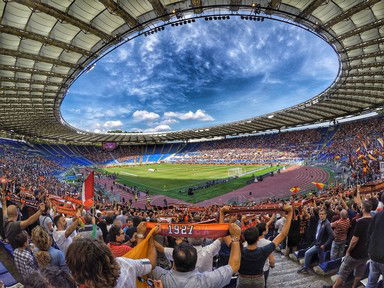
Sport Spots [1] Trivia Quiz
Famous sports stadiums around the globe, sports fans are all around the globe, and in this quiz, all you need to do is know about the places where you can share the love of the game, whether under the same roof or otherwise. come take a world tour of sporting venues. good luck.
- Sports Trivia
- Wide World of Sports
- Sports Stadiums

IMAGES
VIDEO
COMMENTS
Visit the Panathenaic Stadium and feel the unique moments that have taken place here. Leaving the Stadium, choose something from our Gift Shops that will remind you this exceptional visit, and that will give to your closest people the pleasure of having an authentic memorabilia from the Panathenaic Stadium which is inseparably linked to the global athletic and Olympic ideals.
The Panathenaic Stadium is a classical cultural and touristic monument of Greece. Its history is directly connected to the Modern Olympic Games, from their revival in 1896 until the Athens Olympic Games in 2004. ... The audio tour lasts approximately 10 to 20 minutes, according to the user's preferences. There is also a coffee shop operating ...
Games in 1896, of modern Greek sport and culture, is reflected in the white Attic marble of the Panathenaic Stadium. A monument of global significance heritage and part of the sporting and Olympic history of Greece and the Hellenic Olympic Committee, the Panathenaic Stadium offers visitors a unique opportunity to revive their historical memory.
The Panathenaic Stadium is worth a visit, especially if you have a sunny day so you can climb to the top and get the great views of the Acropolis from sections 20-21. Whilst you can get nice pictures from outside, walking to the top inside gives you a real sense of scale. That's particularly important when you remember it is made of marble.
Standing in front of the horseshoe-shaped Panathenaic Stadium in Athens, you can easily imagine the 80,000 spectators at the opening ceremony of the first modern Olympics in 1896, cheering the establishment of the ideals of excellence, friendship and respect through sport. What might be harder to imagine are the 50,000 spectators in the mid-2nd ...
This All-Marble Stadium Hosted the First Modern Olympics. Visit the Panathenaic Stadium that sets ancient tradition in stone. Fire has been a symbol of the Olympic games since ancient times. Every ...
The easiest way to get to the stadium is with the Hop on Hop off bus tour, which has its own stop at Panathinaiko Stadium (A8 "Panathenaic Stadium"). As the stadium is about 950 meters from the "Syntagma", "Acropolis" and "Evangelismos" metro stations, it is easily accessible by public transport. The stations are served by metro lines 2 and ...
A monument of global significance heritage and part of the sporting and Olympic history of Greece and the Hellenic Olympic Committee, the Panathenaic Stadium offers visitors a unique opportunity to revive their historical memory. A unique archaeological monument, a living symbol of the ancient and modern heritage of sport and the Olympic Games.
The Panathenai Stadium is the oldest stadium in operation in the world and a UNESCO World Heritage Site. The stadium was inaugurated during the Panathenaic holidays in 329 BC. It was the starting point of the first Modern Olympic Games in 1896. The general entrance admission fee costs 5 euros. One of Athens's most significant archaeological ...
Panathenaic Stadium Hours and Information. Hours: Open daily. 8am to 7pm March to October; 8am to 5pm November to February. Admission Fee: General admission fee: 10€. Reduced fee: 5€ for seniors over 65 and students. Free admission for children under 6 and for visitors with disabilities and persons accompanying them.
Children under 6 years old: free. Opening hours also vary depending on high and low seasons. Between March and October, the stadium is open from 8 a.m. to 7 p.m. From November to February, you can visit the Athens Panathenaic Stadium from 8 a.m. to 5 p.m. It takes at least 1 hour to visit the Stadium.
The spectacular Panathenaic Stadium remains one of the city's most popular tourist attractions and is a shining beacon of modern Athens. Following several transformations over its long history, it eventually became the home of the first modern Olympic Games in 1896 and remains the only stadium in the world built entirely out of marble.
The Panathenaic Stadium (Greek: Παναθηναϊκό Στάδιο, romanized: Panathinaïkó Stádio, [panaθinai̯ˈko ˈstaðio]) [a] or Kallimarmaro (Καλλιμάρμαρο [kaliˈmarmaro], lit. ' beautiful marble ') [3] [4] is a multi-purpose stadium in Athens, Greece.One of the main historic attractions of Athens, [5] it is the only stadium in the world built entirely of marble.
The Panathenaic Stadium is one of the must-visit attractions of Athens. Located in the heart of the city center, a visit to this famous monument will be the perfect opportunity to combine spending a day sightseeing outdoors with gaining invaluable insight into the city's culture and the history of the Olympic Games.
How to visit the Panathenaic Stadium. The most pleasant way to get to the stadium is to stroll through the National Gardens. Then you can cross the avenue and walk over to the Stadium. If you are staying close to the Acropolis or the temple of Zeus, the stadium is a 10-15 minute walk.
The Panathenaic Stadium was built in 144 AD. In the 19th century, it was dug up and restored. It hosted the first contemporary Olympics in 1896. ... Athens is an open-air museum packed with archaeological sites. These are the main tourist attractions to visit in Athens. book. Athens City and Acropolis Guided Tour. 7.61 770 reviews . US$ 59 ...
When planning your Greece tours, one destination that should undoubtedly be on your list is the Panathenaic Stadium in Athens.This iconic venue played a pivotal role in the 1896 Olympic Games, also known as the first modern Olympic Games. In this article, we will delve into the historical significance of the Panathenaic Stadium and its connection to the Olympic Games, providing you with a ...
Visit the Panathenaic Stadium, where the first modern Olympic Games were held. Go to the National Library to marvel at an outstanding building of great historical value. Drop by the National Archaeological Museum, or roam around the picturesque area of Monastiraki and its Flea Market. Take a walk through the quaint neighborhood of Thission.
Exploring the Panathenaic Stadium in Athens. The Panathenaic Stadium, with its grand proportions, stands as a remarkable testament to Greek history and culture. While visiting, be sure to take a look at: ... 204 meters in length and 33 meters in width, the white marble running track is an unmissable feature of any Panathenaic Stadium tour.
The Panathenaic Stadium is open between 8 am and 7 pm from March to October. From November to February,the stadium is open between 8 am and 5 pm. Best time to visit Panathenaic Stadium. In high temperatures, the stadium can become quite hot, largely due to the marble structure. For a cooler experience, it is advisable to visit the stadium ...
The Panathenaic Stadium is worth a visit, especially if you have a sunny day so you can climb to the top and get the great views of the Acropolis from sections 20-21. Whilst you can get nice pictures from outside, walking to the top inside gives you a real sense of scale. That's particularly important when you remember it is made of marble.
Planning A Visit To The Panathenaic Stadium Today, travelers can visit the Panathenaic Stadium all through the year. It is best to visit in the morning and evening hours to avoid the heat of the day. Plan in advance and make sure the stadium isn't closed for other events. As it is located in the heart of Athens, it is easy to reach by foot.
Discover Athens with our all-inclusive tour, combining ancient wonders and lively neighborhoods. Skip the lines at the Acropolis and Parthenon for breathtaking views and a journey through history. Visit the Temple of Olympian Zeus, Hadrian's Arch, and the Panathenaic Stadium, where the first modern Olympics took place.
Answer: Wembley Stadium Found specifically in the Wembley region of northwest London, this iconic football venue was rebuilt in the 2000s, having originally stood on the site since the 1920s. Because of its central location and the tradition of the sport, it's generally the home of the annual FA Cup Final.